41 countries around the world: Africa, Asia, Oceania, South America
What is the definition of a “minor navy” ?
Surely there is a “top tier”, which is most often assimilated to a “blue water navy”. And it is most often assorted with a true aircraft carrier (not an assault ship), which gave us a limited club (USN, and Russian Navy, British, French, Italian and Spanish Navies, and in Asia the PLAN, JSDMF, Indian and Thai Navies). Then came “regional navies” sometimes flagged as “green water” navies, which in high tier have guided missile destroyers and assault ships (like Turkey) while the Bundesmarine have not, and they could still make a projection of power due to large ships with logistic for oceanic operations such as anti-piracy missions in the Red Sea. And this is the lower tier, which could defend its EEZ and do limited projection of powers nearby but not much esle, which is the object of the present chapter.
And there is at the bottom what most calls a “brown water” navy. The name suggest essentially a riverine fleet. It’s especially true of the country had still a limited coastal area but restricted budget and/or is landlocked and only has a complement to just a “police force” for its riverine traffic. This is true also for large lakes, like the Tanganyka in Africa. Still between the low tier regional naval power to the small riverine force, enters most nations on the planet. They are classed by alphabetical order. It must be said that 44 countries in the world (on 195 recoignised ones worldwide) are truly landlocked.
Let’s cite Afghanistan, Andorra, Armenia, Austria, Czechia, Hungary, Liechtenstein, Luxemburg, Montenegro, North Macedonia, Serbia, Slovakia, Slovenia, Switzerland, in Europe alone, but also Azerbaijan, Belarus, Bhutan, Bolivia, Botswana, Burkina Faso, Burundi, Central African Republic, Chad, Eswatini, Ethiopia, Somaliland, Kazakhstan, Kosovo, Kyrgyzstan, Laos, Lesotho, Malawi, Mali, Moldova, Mongolia, Nepal, Niger, Paraguay, Rwanda, Slovakia, South Ossetia, South Sudan, Tajikistan, Transnistria, Turkmenistan, Uganda, Uzbekistan, Vatican, Zambia and Zimbabwe. In population, 475,818,737 so 6% roughly of the world’s population, showing superbly that the bulk of humanity lives close to the sea. Many of these only have a token riverine police force or nothing at all, even with a small river going through, nike Nepal. These are absent of the list but could be added in 2025.
PART III: Norway to Zanzibar
 Norwegian Navy (Sjøforsvaret) in the cold war
Norwegian Navy (Sjøforsvaret) in the cold war
To be released on May, 17, 2025 on a dedicated page
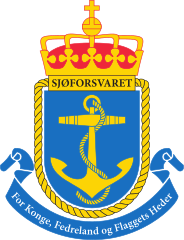 The Union between the Kingdoms of Sweden and Norway came to an end in 1905. Earlier Norway — like Sweden — had built up a navy of some coastal battleships and a lot of torpedo-boats. From monitors — one built in Sweden — the 1890s saw the building of 4 coastal battleships at British yards and 4 gunboats of varying types, 1 destroyer and 12 small torpedo-boats. In the last years of the Union only some torpedoboats were added. From 1906 Norway did not do much to modernise her navy which was manned by about 1000 regulars and 1000 annual conscripts under a rear-admiral despite having 13,000 miles of coastline and 150,000 islands to protect: 3 small destroyers, 3 large and some smaller torpedo boats as well as 4 submarines were all the warships built before the First World War broke out. But Norway, like the other two Scandinavian countries, decided to complete her division of coastal battleships. Two such with lighter armament than the contemporary Swedish and Danish vessels were ordered in England in 1912. Launched in 1914 they were both seized by the British government as war broke out and never reached the Horten naval base on Oslofjord. During and after the war the Navy was busy minesweeping and recovering 222 dead bodies washed up on the coast.
The Union between the Kingdoms of Sweden and Norway came to an end in 1905. Earlier Norway — like Sweden — had built up a navy of some coastal battleships and a lot of torpedo-boats. From monitors — one built in Sweden — the 1890s saw the building of 4 coastal battleships at British yards and 4 gunboats of varying types, 1 destroyer and 12 small torpedo-boats. In the last years of the Union only some torpedoboats were added. From 1906 Norway did not do much to modernise her navy which was manned by about 1000 regulars and 1000 annual conscripts under a rear-admiral despite having 13,000 miles of coastline and 150,000 islands to protect: 3 small destroyers, 3 large and some smaller torpedo boats as well as 4 submarines were all the warships built before the First World War broke out. But Norway, like the other two Scandinavian countries, decided to complete her division of coastal battleships. Two such with lighter armament than the contemporary Swedish and Danish vessels were ordered in England in 1912. Launched in 1914 they were both seized by the British government as war broke out and never reached the Horten naval base on Oslofjord. During and after the war the Navy was busy minesweeping and recovering 222 dead bodies washed up on the coast.

The Battleship Norge
Norway’s neutrality veered towards the Allies. In 1916, tipped off by the Admiralty’s Room 40, the Government seized a German diplomatic bag in Kristiania (Oslo) and found glanders germs intended to infect the reindeer pulling sledges of British arms from North Norway to Russia. In January 1918 it was abortively suggested that a coastwatch> ing service be established to monitor U-boats in return for the Navy receiving the latest British hydrophones and other equipment. German efforts to cut cable links between the two countries were always shortlived. From 1919 Norway trusted in the everlasting peace and the League of Nations and only some submarines, voted in 1914, were built and completed during the 1920s.
Norway in WW1 Norway in WW2
A short overview in the cold war
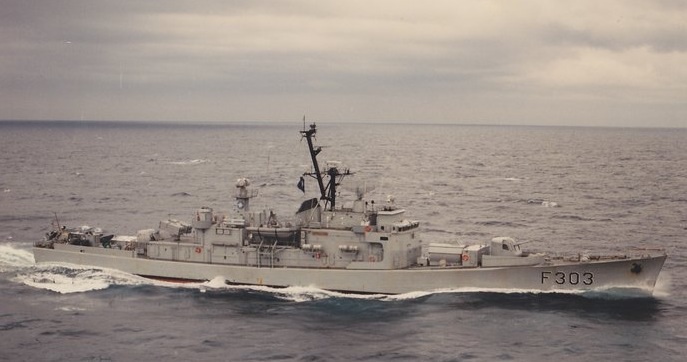
KNM Stavanger, Oslo class frigates, the most recoignisable surface combatants of Norway in the cold war
When the Second World War ended Norway had a larger and more modem navy than she had had in April 1940, when the Germans invaded. Only a few units escaped to Britain, but the Norwegian government in exile built up a new navy, mostly of ships borrowed or purchased from Great Britain and Canada. In 1947 the Norwegian Navy consisted of six destroyers (one incomplete), four torpedo boats, five submarines, two frigates, three corvettes and two fishery protection vessels, one coastal minelayer, ten minesweepers, one submarine-chaser, ten motor torpedo-boats and three motor launches.
Durning the immediate postwar years, Norway, like all the European countries, had difficulty finding money for defence measures. The navy had received a number of German warships in 1945, but all these vessels were in bad condition and were soon scrapped. In 1951, the USA delivered ten motor torpedo-boats.
The first step to building a new navy was taken in 1950 with the ordering of motor torpedo-boats from a domestic yard. Thereafter Norway constructed, launched and commissioned series of ships and boats for the navy, built at naval and private yards, in cooperation with other NATO navies and with help from the United States under the Mutual Defense Assistance Program.
The proliferation of offshore establishments in the North Sea oilfields brought an increased need for patrol vessels, and in the 1980s the Nordkapp class of multipurpose ‘offshore protection vessels’ was commissioned.
The Norwegian Navy has continued to update its fleet, acquiring new submarines and developing a class of surfaceeffect MCM vessels. However, there have been problems, with the new Ula class submarines reportedly causing dissatisfaction due to excessive machinery noise, and the first surface-effect vessel not entering service until a year after its due date. Further programmes are planned, including the acquisition of new frigates to replace the Oslo class (an indigenous design or Dutch Kortenaer class ships both being considered), new fast attack craft and further modernisations for other classes.
Fleet Strenght 1947 (:decommission)
-Bergen class DDs (1945 UK): Bergen, Oslo, Stavanger, Trondheim: 1966-67
-Stord class DDs (1943 UK): Stord, Svenner: 1959
-Aalesund clas DDs (1941): Aalesund (ex-ZN4), other not completed: 1950
-Odin class DDs (1939): Odin, Thor, Balder: 1959
-Sleipner class TBs (1936): Sleipner, Gyller: 1956
-Hunt class Frigates Arendal, Narvik (tr.1946): 1961
-Corvettes: 2x Nordkapp class (1937), 3 Flower class: Andenes, Nordkyn, Soroy: 1956
-Submarines: Ula class ex. U class (UK) purchased 1943-45: Ula, Utstein, Utvaer, Utsira, Uthaug: 1962-65
-Minelayer Laugen (1917): 1948
-Minesweepers: Glomma class (1940): 1961, Orkla class (1943): 1964, Altra class (NYMS 1944): 1959-62, Otra class (1939): 1963
-Sub chaser Haakon VII (1942): 1974
-9 Fairmile D clas MTBs (Faulk class) 1944: 1959
-3 ex-UK Motor Launches ML 125 class: 1947
New pennant numbers given by NATO from 1950.
Fleet Strenght 1960-90 (:decommission)
-Tromso class frigates (ex Hunt class, acquired 1952): 1965
-Draug class frigates (Ex River class, acquired 1956): 1966-77
-Oslo class Frigates (Built at Horten NyD 1963-67): 1994-99
-Kaura class subs (ex Type VIIC subs war repar. 1950): 1961-64
-Knerter sub (ex U4706 Type XXIII war repar. 1950): 1953
-Kobben class subs (15 Type 207, from Nordseewerke Emden built 1961-67): 1982-1999
-Ula class subs (6 Norge design, assembled 1987-92 by Thyssen Nordseewerke Emden): Active
-Amphibious: LCU-1478 1953: 1975, 2x Kvalsund class 1970: 1992, 5x Reinoysund class 1972: 2010s
-Slaipner class corvettes (Built 1963 Nyland, Oslo): 1993
-Corvette Vadso (Stord Verft, ex whaler 1976): 1985
-2x SC type PBs 1957: 1959
-5x S-Boats tr. 1947: 1952 +3 S-Boats tr. 1951: 1959
-10x ELCO Type MTBs tr. 1951 MDAP: 1961-66
-6x Rapp class FAC(T) Built 1952 Westernoens Baatbyggeri Mangal: 1970
-1 Nasty class FAC(T) 1958: 1967
-19x Tjeld class FAC(T) built 1959-60 West. Baat. Mandal: 1982-95
-20x Storm class FAC(M) built 1963-64 Bergens Mek.Vert./Mandal: 1994-99
-6x Snogg class FAC(M) built 1969-71 Mandal: Active 2010s
-14x Hauk class FAC(M) built 1976-79 Bergens/Mandal: Active.
-Launches: Tarva, Welding (1974): 1995.
-2x Vale class Minelayers (1952) ex-LSMs: to Turkey 1960
-2x Vargsund class minelayers (1945, conv 1952): 1960
-4x Tyre class Coastal Minelayers (ex-AUK ac. 1959): 1976-78
-HNOMS Borgen controlled minelayer (Horten NYd 1960): 1999
-2x Vidar class coastal minelayers (Rosendal/Bergen 1977): Active
-13x 1940 R-Boote transferred 1948: 1951-59
-10x Adjutant type coastal Minesweepers (USA, +5 Built Norway 1954-55): 2 extant 1995.
-2x Lagen class (Aggressive class) minesweepers 1955: 1966 to Belgian navy
-Haakon VII training vessel (1944 ex Gardiner Bay tr. 1958): 1974
-Horton support ship (Horten Wft. 1977): Active
-3x Nordkapp class icebreaker patrol vessels (Built Bergens, Horten, Haugesund 1980-81): Active
-Norge Royal Yacht (1937 UK, gifted to Norway 1945) mod.1985, extant.
-Coast Guard: 2x Andenes class (1965:1981), Farm class (1962: 1999), Nornen (1963): Active
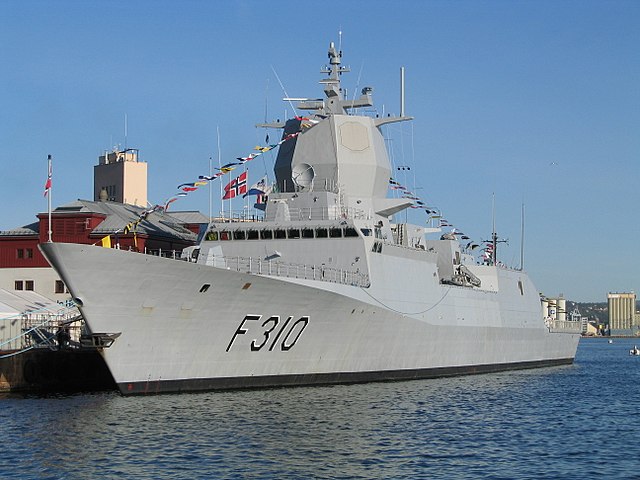
Fridtjof Nansen-class frigate, built in Spain, Bazan yard, Navantia.
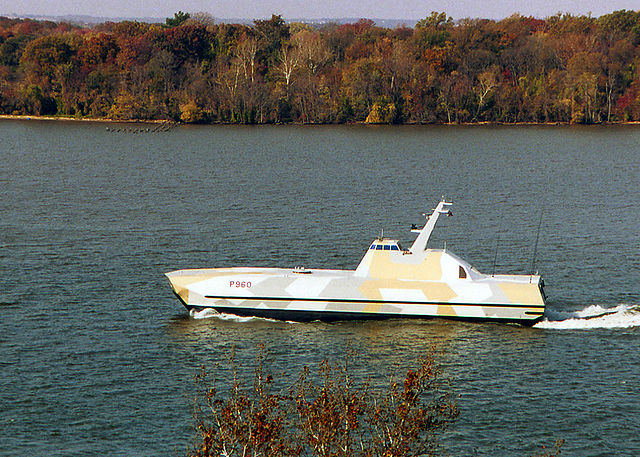
Skjold class missile Corvettes (large FAC/Ms): Skjold (P960), Storm (P961), Skudd (P962), Steil (P963), Glimt (P964), Gnist (P965)
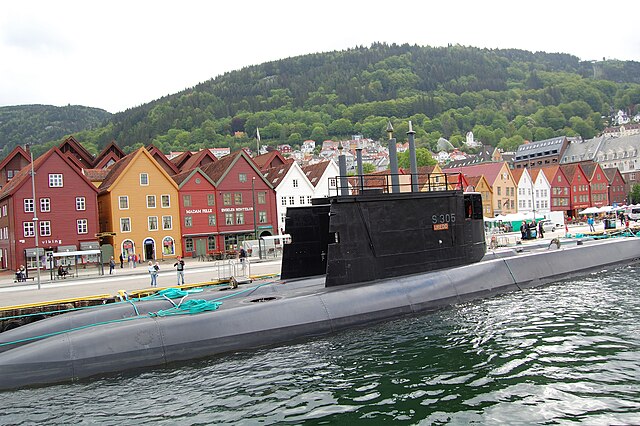
Uredd and Uthaug in Bergen, Ula class, forming the entire submarine branch. Replacement is planned FY2025.
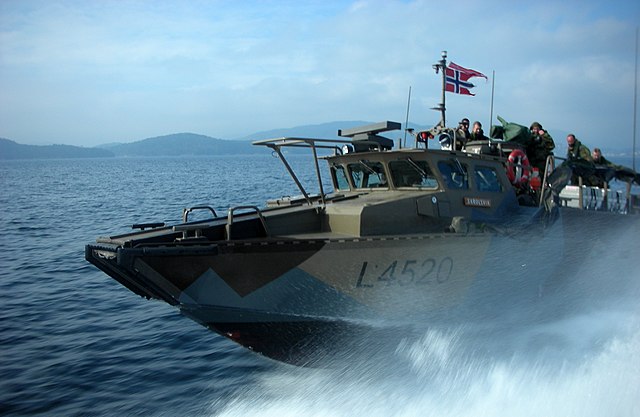
A Stridsbät90 class at full speed: Trondenes, Skrolsvik, Kråkene, Stangnes, Kjøkøy, Mørvika, Kopås, Tangen, Oddane, Malmøya, Hysnes, Brettingen, Løkhaug, Søviknes, Hellen, Osternes, Fjell, Lerøy, Torås, Møvik
Fleet Strenght today
-6x Ula class subs (1987-92)
-1st Frigate Squadron: 4x Fridtjof Nansen-class frigate 2004-11: Fridtjof Nansen, Roald Amundsen, Otto Sverdrup, Thor Heyerdahl
-1st Corvette Squadron: 6x Skjold-class patrol boat 1998-2009.
-4x Oskoy class Minesweepers/5x Alta class Minehunters: Surface effect catamaran (built Kvarner Mandal 1994-97)
-Coastal Ranger Command: 20x Combat Boat 90N (1996)
-Fleet Logistics Command: HNoMS Maud, Norge (A553), Magnus Lagabøte (A537), Olav Trygvasson (A536)
-Coast Guard: 12x OPVs: Jan Mayen, Bjørnøya, Harstad, Svalbard, Heimdal, Farm, Barentshav, Sortland, Bergen, Nornen, Njord, Tor
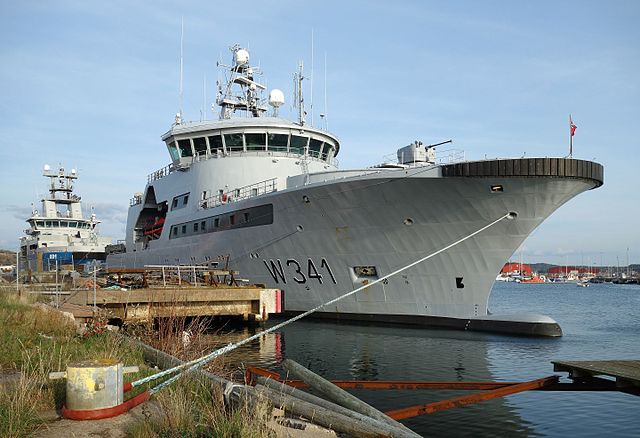
Barentshav-class OPVs: Barentshav, Bergen, Sortland
Sources/Read more
en.wikipedia.org/ Royal_Norwegian_Navy
 Royal Navy of Oman
Royal Navy of Oman
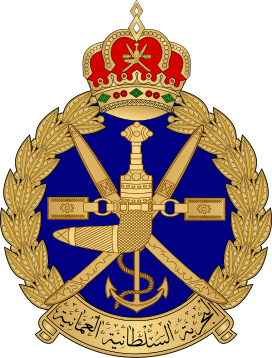 The Royal Navy of Oman (RNO) is a branch of the Royal Armed Forces of the Sultanate of Oman, responsible to defend a long coastline along the Indian Ocean, close to the Strait of Hormuz. A hotbed of trade and a strategic location made the Sultanate weary of foreign interventions, and given the complex and long history of the Sultanate, a navy was created already in 807 CE but established formally in 1650 CE and by, 1970 officially recreated and consolidated.
The Royal Navy of Oman (RNO) is a branch of the Royal Armed Forces of the Sultanate of Oman, responsible to defend a long coastline along the Indian Ocean, close to the Strait of Hormuz. A hotbed of trade and a strategic location made the Sultanate weary of foreign interventions, and given the complex and long history of the Sultanate, a navy was created already in 807 CE but established formally in 1650 CE and by, 1970 officially recreated and consolidated.
This is a small yet balanced navy of gunboats, fast missile boats and support, training, cargo and hydro-graphical survey vessels, enough to roam its territorial waters and coastline, protect tankers through the Strait of Hormuz ands anti-piracy, anti-arms smuggling operations. Its headquarters are located in Seeb, near the Muscat International Airport. There is currently a modernization for a larger, more capable fleet, especially since the anti-piracy war started and Houthi insurgency in nearby Yemen. The Royal Oman Police’s fleet is mainly a seperate branch used for inspection, with small boats and patrol crafts, also massively updated. Currently the Omani navy has the largest budget affectation of all three branches.
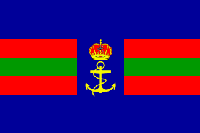 The Sultanate of Oman, a little smaller than Britain in area and witha population (1991 estimate) of 1,559,000, is situated at the southern end of the Arabian Peninsula and holds a strategically very important position, controlling the approaches to the Persian Gulf through the Gulf of Oman. With the additional small area under her control on the Mussandam Peninsula she also virtually controls the narrow Strait of Hormuz which is the only means of entry to the Gulf. It was possible to create a modern navy in the 1970s only with the help of Great Britain and the navy employs a number of expatriates mainly from the UK. The commander of the navy and a few senior officers are on secondment from the Royal Navy. More Omanis are gradually peing recruited into the navy and all officers in the Patrol Boat Squadron apart from the commanding officers are Omanis. In 1982 the first Omani officer to take command of a patrol boat took up his post, but the emerging navy is in grave need of trained officers and men.
The Sultanate of Oman, a little smaller than Britain in area and witha population (1991 estimate) of 1,559,000, is situated at the southern end of the Arabian Peninsula and holds a strategically very important position, controlling the approaches to the Persian Gulf through the Gulf of Oman. With the additional small area under her control on the Mussandam Peninsula she also virtually controls the narrow Strait of Hormuz which is the only means of entry to the Gulf. It was possible to create a modern navy in the 1970s only with the help of Great Britain and the navy employs a number of expatriates mainly from the UK. The commander of the navy and a few senior officers are on secondment from the Royal Navy. More Omanis are gradually peing recruited into the navy and all officers in the Patrol Boat Squadron apart from the commanding officers are Omanis. In 1982 the first Omani officer to take command of a patrol boat took up his post, but the emerging navy is in grave need of trained officers and men.
Most Omani ships are modern and potent but there is an evident Jack of support vessels and auxiliaries. A British firm, Brooke Marine Ltd, has been a main supplier of ships as has Vosper Thornycroft to a Jesser extent.
The Omani Navy has proved its worth in its involvement in the control of shipping in the Strait of Hormuz Shipping Separation Zones which pass through Omani waters. Requiring two patrol vessels on duty supported by a supply vessel, this is a relatively heavy commitment for such a small force and has been carried out with success since November 1979 and reflects well on the navy’s ability. Patrol boats regularly fired at land targets in an effort to disrupt camel trains during the Dhofar War of 1965-75, although the success of this method was never confirmed. The navy’s role in defeating the communist led insurgency in the sultanate’s southern province was mainly an unglamorous but essential one of logistic support along the barren coastline.
Currently the personnel strength of the Omani Navy is about 3500 officers and men (including civilian employees). In 1987 it was 2400 officers and men. Naval service is voluntary. The navy received some valuable ships in the course of the 1980s, such as four large missile boats of the Dhofar class, the landing ship Nasr Al Bahr and some smaller ships and craft. In March 1992 an order was placed for two large fast corvettes of the Muheet class, which when delivered will be the largest fighting ships in the Omani Navy apart from the landing ship Nasr Al Bahr. Plans to acquire a US Knox class frigate were abandoned. In 1992 naval aviation included four aircraft of Short SMS-3M Seavan type; two of Dornier Do 228-100 type and two Pilatus Porter. The main naval bases are at Muscat (main base dockyard and slipway), Wudam, Mina Raysut, Jazirat Ghanam and Musandam.
History
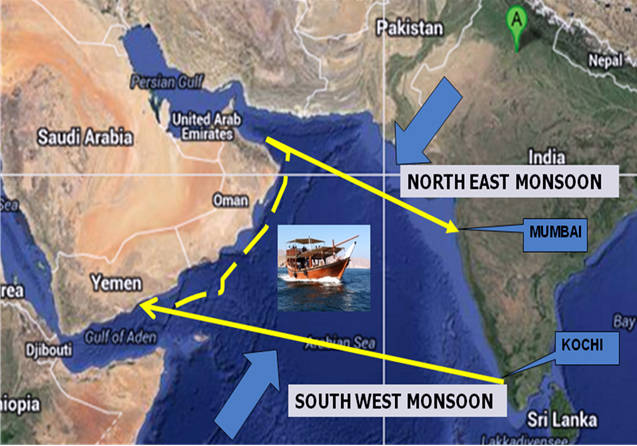
As a quick reminder, the sultanate became a British protectorate in 1888 due to its strategic position. The Royal Navy assured its defence for a century, until full independence was regained in 1971. Still, a small navy, independent was tolerated in the 1950s and took part in the Dhofar Rebellion in 1962.
Its origin went back to the rule of Imam Ghassan bin Abdullah in 807–824 CE, first ruler to have a local Royal navy, to fend off pirates operating along the western shores of the Indian Ocean and threatening its own, very profitable trade routes. But it went from leaps and bounds after further rulers did not took care of it, going on for 800 years. Meanwhile piirates were free to conduct raids along the coast of the Arabian Peninsula. The royal navy of Oman was only formally established in 1650. The court financed construction, armes and manned the ships, created support.
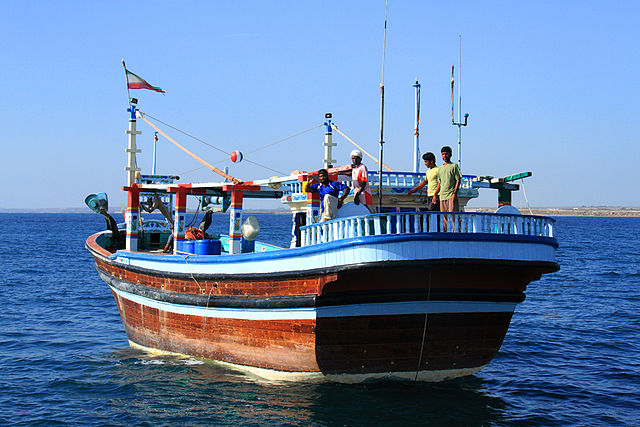
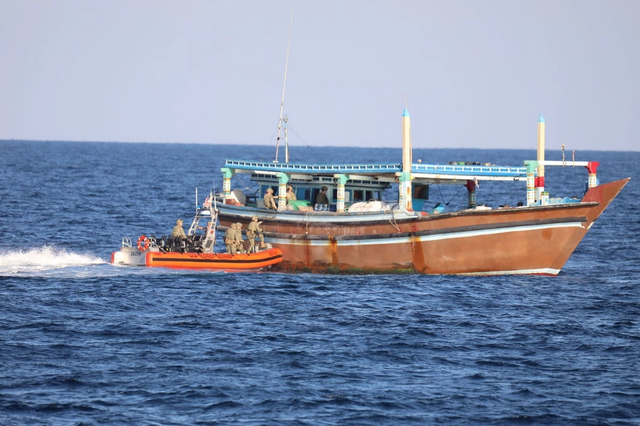
Traditional wooden dhows, roughly identical to those roaming these old trade lines in the past centuries
The Omani Navy then dominated the Western Indian Ocean already again from the 1400s until the Portuguese that changed this in 1508 after invading Oman and secured hold in the region. In 1515 Oman lost its maritime trade routes to the Portuguese, and the latter financed a massive fleet and consolidated a global Empire. From 1624 however the sultanate started to recover ports under Nasir bin Murshid (1624–1649) and Sultan bin Saif (1649–1688). After a long struggle they were able to forced the Portuguese out by 1650. From there, having all the needed ports, a new naval plan was launched and the Omani Navy regained full official status and grew in size and capabilities.
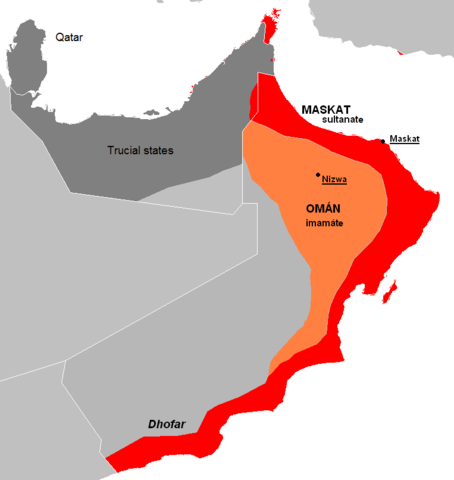
But it was not to last: The next rulers neglected it and piracy again hampered the Sultanbate’s trade. That is under Ahmed bin Said (1749–1783) which started to rebuild the Omani Navy, commissioned four modern 40 guns ships and 25 coastal vessels (likely large Polaccas), and Xebecs. The foort continued into the 1800s. Under Sultan Said bin Sultan (1806–1856) it was far larger, perhaps aorund 100 ships, mostly small but fast and typical of the traditional arabic range, but also some in the European style. In fact several of these were prestige ships usabled for commercial and diplomatic visits. “Al Sultanah” for example visited New York in 1840 with Ahmed bin Al-Noman Al-Ka’abi, first Arab embassy ever sent to the United States.
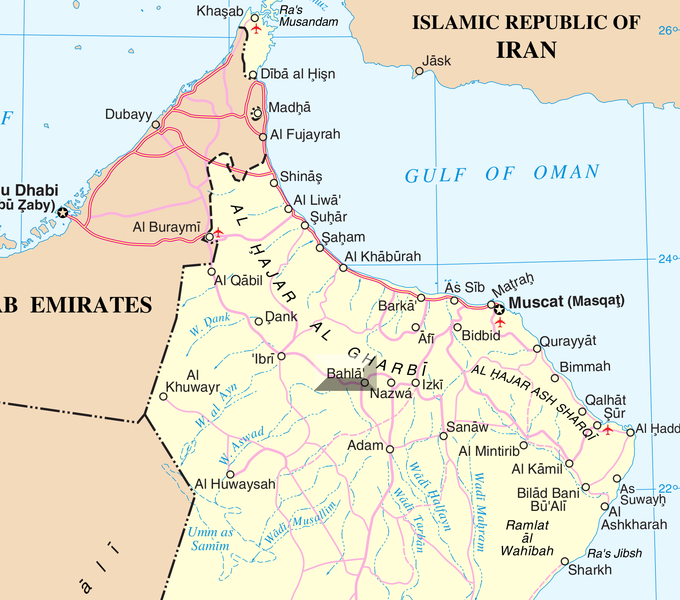
From 1862, the Sultanate neglected the navy again due to internal squabbles and attracted foreign appetites. In 1888 the Sultanate could not resist to British pressure and became a protectorate of the British Empire. As seen above, in 1962 the small contingents of the Opani Navy still fought locally in the Dhofar Rebellion against communist insurgents, in naval gunfire support for land operations.
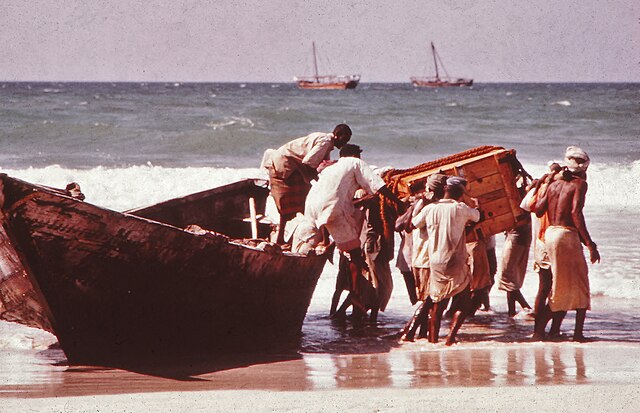
Smugglers supporting the Dhofar Rebellion (1971)
In the late 1960s, the Royal Oman Navy was integrated as a naval branch of the Sultan’s Armed Forces, no longer completely separate. After 1971 and full independence, oil fields were discovered and Oman went into a bonanza of new resources, especially after 1973 and 79 as the barrel price skyrocketed. This gave free hands to massively invest in the navy, growing it considerably.
The Cold War RN of Oman
The first step was to acquire deterrence against foreign interventions, by securing a range of patrol boats with aspects of fast attack crafts.
-The first new ship of the Sultanate was, fittingly, a royal yacht/escort, Al Said built by Brooke Marine in 1969-71. Still active as TS from 1997.
-The Al Bushra class were large patrol crafts armed with missiles, tailor-designed for the Omani Navy by Brooke Marine Ltd. Ordered in 1971, seven ships were launched in 1973-77 in two batches. They had notably the brand new exocet missiles.
-2 ex-Dokkum class (NL) coastal minesweepers were acquired in 1974
-Vosper Thornycroft delivered in 1975 the first 5 of a long lineage of patrol boats (Haras). The next were built in Sweden, for a total of nine.
-In 1977-79 was built the largest vessel of the Navy, the support ship Al Munassir (Brooke Marine) with helideck.
-A dozen more LCUs were also acquired in the 1970s, most extant by 1990.
The 1980s saw the acquisition of new vessels, starting with more offensive Fast Attack Crafts:
-The Dhofar class FAC(M) combined OTO melara guns and exocet missiles, while being capable of 40 kts.
-The Seeb class patrol boats were from Vosper Singapore from 1981 (4)
-Watercraft and Hemsworth provided five 16-tons Inshore patrol crafts from 1981.
-In 1981 was also acquired the first Omani landing craft (LCU), three Vosper Singapore vessels.
-In 1982-85 Brooke Marine built a Kalaat tytpe (Algerian design) landing ship at Brooke Marine to round this up with helideck.
-In 1987 was acquited the amphibious transport Fulk Al Salamah (built in Germany), also with helideck.
The Modern Omani Navy
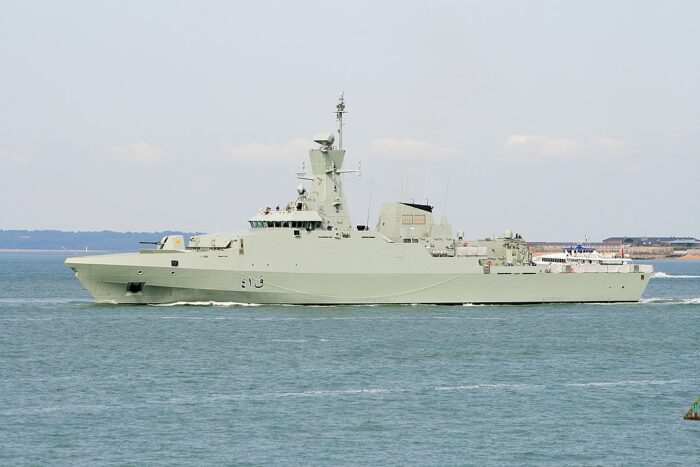
Al Rahmani of the Rakheef class. These are now the most potent ships of the Omani Navy, which counts 5 corvettes, 12 patrol vessels (some missile armed), 3 amphibians, 2 auxiliaries. Next vessels could be built in south Korea, possibly frigates.
As the country’s GDP grew, a new class of ship was soon ordered after 1990s to boost the Navy’s status and projection powers between the red sea, Mediterranean and Indian Ocean.
In 1992, two fast corvettes were ordered to Vosper Thornycroft the Quahir al Amwaj class, completed in 1996. These were powerful shipscombining two missiles systems, eight Exocet missiles and a set of Crotale SAMs, an OTO Melara main guns, as well as helicopter deck and hangar.
-In 1995-6 were acquired three Al Bushra class OPVs (Mawj project) built at CMN to replace the first class by Brooke Marine.
In the 2000s a new naval plan raised the bar even more in terms of tonnage:
-In 2007 were ordered three Khareef class corvettes (com. 2013-14) with the same exocets but 12 VL Mica missiles, made by BAE systems.
-In 2012 were ordered the four Al-Ofouq class offshore patrol vessels (1100t) with Oto melara guns and helideck.
Organization
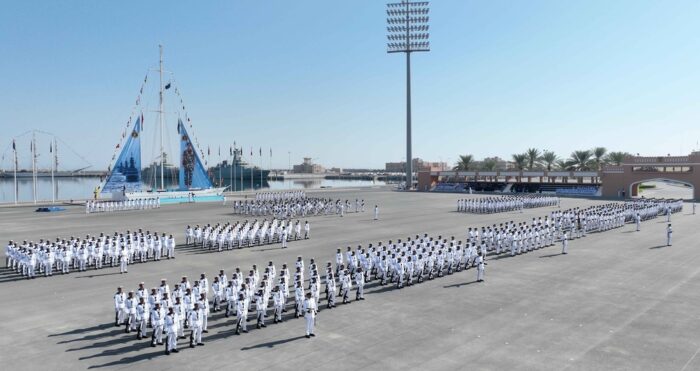
Said bin Sultan Naval Base, official ceremony. src
The main naval base was originally located at the Sultan Bin Ahmed Naval Base in Muscat. It was judged unsfficient for a large fleet, with deeper draught vessels and lacking facilities so it was relocated to Said bin Sultan Naval Base, in Wudam Al Sahil near Al-Musannah from 1988. This was gigantic endaevour, with a homeport for the fleet, training facilities, drydocks and facilities. There is also the Sultan Qaboos Naval Academy on site, forming officers and enlisted personnel and all specific branches of the navy. The academy originated from the 1970s and had British officers and cadree, and Pakistani (mostly) non-commissioned officers. However from 1980, most officers were Omani with British and Pakistani technicians remaining for a time. In 1992, the Royal Oman Navy reached 3,000 personnel.
Its structure is simple since it lacks either a marine corps, naval infantry or spec ops unit, neither a naval aviation branch despite operating helicopters. Its amphibious ships are meant to work in close coordination with the Omani Army. A modernization program in the 2010s was setup to better defend Strait of Hormuz with assistance of the Royal Navy which in 2011, train new corvette crews.
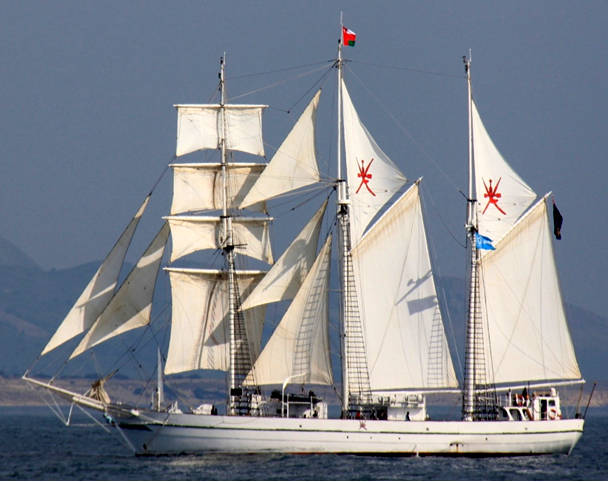
Academy flagship, the schooner Shabab Oman
The country is also active in the field of underwter mapping and surveys, and acquired in 2024 as Catamaran Hull Hydrographic Survey Vessel.
Ties with the European industry for new procurement started to shift to South Korea, with MoD minister Song Young-moo meet his counterpart Sayyid Badr bin Saud bin Harib Al Busaidi. The question of acquiring South Korean destroyers was spoke about and the Oman signed a deal in 2018 for extra ships and main battle tanks.
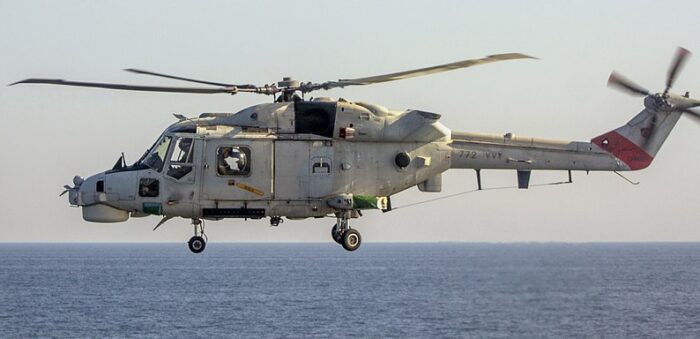
Omani Super Lynx, deployed on the Omani Corvettes and large OPVs. Officially they belongs to the air force, not the Navy. The EH-101 is also operated
Omani ships in more detail
 Khareef-class corvette
Khareef-class corvette
Al-Shamikh, Al-Rahmani, Al-Rasikh
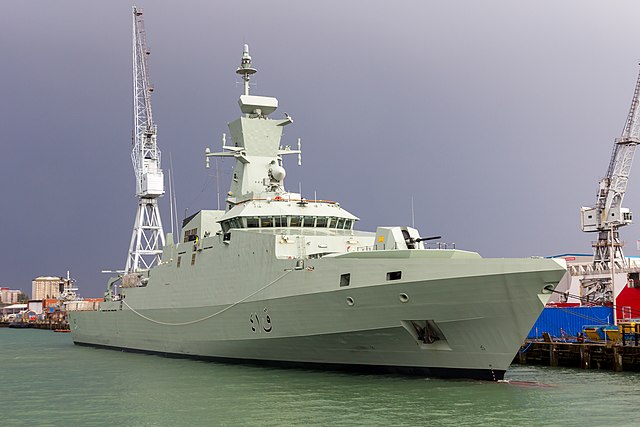
The Khareef class are three corvettes operated by the Royal Navy of Oman, built by BAE Systems in Portsmouth (£400m deal) with training by VT Group.
They were laid down as Q40-42, launched between July 2009 and June 2011.
Specs:
2,660 tonnes, 99 x 14.6 x 4.1 m (325 x 48 x 13 ft), 2x MTU 4000 diesel, 28 kn, RA 4,500 nmi, crew 100.
Armed with a 76 mm OTO Melara gun, 2 × 30mm MSI DS30M cannons, 12× VL MICA SAM, 8× MM-40 Block III Exocet, 1 helicopter (Lynx)
Sensors: SMART-S Mk2 3D S-band multibeam radar, TACTICOS CMS, Thales NL Sting weapons director
 Qahir class corvettes
Qahir class corvettes
Qahir Al Amwaj (C 31), Al Mua’zzar (C 32)

The Qahir class are two missile corvettes designed and built by VT Group with hull and superstructure featuring cladding with radar absorbent material and angled sides, so they are the first “stealthy” Opani ships. Construction was part of Project Muheet on 5 April 1992, starting in September 1992 and they were completed in 1996-1997. Still active, not modernized.
Specs:
1,185/1,450 tons FL, 83.7 x 11.5 x 3.5m (274 ft 7 in x 37 ft 9 in x 11 ft 6 in), crew 60
2x Crossley-SEMP-Pielstick 16PA6 V280 STC Diesel: 32,000 bhp (24,000 kW), 31 kn RA 5,500 nmi/12 kn
1× Otobreda 76 mm 62 Super Rapido, 2× Oerlikon GAM-BO1 20mm, 1×8 Crotale NG SAM, 2×4 MM40 Block 2 Exocet
Kelvin-Hughes Type 1007 nav, HSA MW-08 3D ASR, Thomson-CSF Castor IIJ MRR FCR, HSA STING OFC
 Al-Ofouq-class patrol vessel
Al-Ofouq-class patrol vessel
Al-Seeb, Al-Shinas, Sadh, Khassab
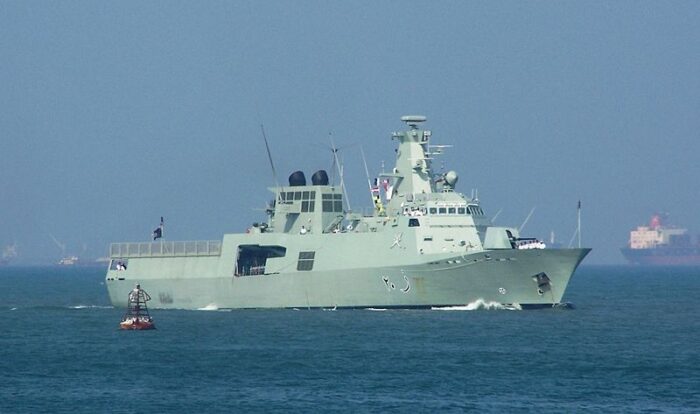
The Al-Ofouq class are four patrol vessels ordered as replacements for the Province-class FACs after a competitive tender in April 2012. The contract was awarded to ST Marine of Singapore (USD703 million), beating Damen De Schelde Naval and Goa Shipyard. Essentially a 75 m (246 ft) variant of the 55 m (180 ft) Fearless-class patrol vessel used by Singapore. RNOS Al-Seeb and Al-Shinas were present for the 13th edition of Indo-Omani ‘Naseem Al Bahr’ (Sea Breeze) with INS Trikand, INS Sumitra on 19–24 November 2022. RNOS Al-Seeb was also at its 14th edition in October 2024.
Specs:
1,100 tonnes, 75 x 10.8 x 3.3m (246 x 35 x 11 ft). Crew 66
Propulsion: 2x MTU 20V 8000 M91 diesels CODELOD: 25 kts, RA 3,000 nmi.
Sensors: Thales Variant 2D radar, TACTICOS CMS, Thales NL STIR 1.2 EO Mk 2 EOWD, Thales Vigile ESM, Lacroix decoys
Armament: 1× 76 mm Oto Melara super rapido, 2× 30 mm Oto Melara Marlin-WS, helideck.
 Al Mabrukah (ex-AL SAID armed yacht) escort vessel (1971)
Al Mabrukah (ex-AL SAID armed yacht) escort vessel (1971)
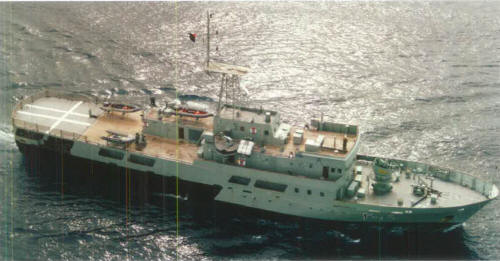
Al Said was built by Brooke Marine Ltd, ordered in 1969, launched 7 April 1970 and commissioned in 1971, the first Omani Navy warship. Designed as a yacht for the Sultan of Muscat and Oman, she was converted to a dual purpose ship with a gun on her forecastle and serves as flagship of the sultanate navy. A Fairey Marine Spear patrol boat is carried and she is also fitted with a helicopter deck. Could be used as an escort vessel. Converted to training ship 1983 and renamed Al Mabrukah (Al). Two 20mm guns and Decca 1226 radar added. A new yacht named Al Said was purchased in 2006 from Lürssen.
Specs:
Displacement: 785t standard; 930t full load,
Dimensions: 188ft 4in pp, 203ft 5in oa x 35ft lin x 9ft 10in (57.4m, 62.0m x 10.7m x 3.0m)
Machinery: 2 shafts, 2 Paxman Ventura 12-YJCM diesels, 2470bhp: 17kts
Armament: 140mm
Sensors: Radar Decca TM-626
Complement: 32 + 7 staff (plus 32 troops).
 AL MUNASSIR logistic support ship (1975)
AL MUNASSIR logistic support ship (1975)

This unusual ship was built by Brooke Marine Ltd, Lowestoft. Laid down on 4 July 1977, launched on 25 July 1975, completed on 3 April 1979. Equipped with bow doors and ramp for beaching. Bluff-bowed hull shape and slow speed of only 12kts. Can carry 550t of cargo or eight heavy tanks. Carries a travelling crane of 16-ton capacity which spans helicopter deck, one Westland Sea King or smaller helicopter can be carried. Fitted with Sperry Sea Archer optical fire control. The ship can also be employed as a command vessel. In reserve in the 1990s, discarded.
Specs:
Displacement: 200t full load
Dimensions: 266ft 6in pp, 276ft oa x 49ft x 7ft 4in (81.25m/84m x 15.0m x 2.23m)
Machinery: 2 shafts CP props, 2 Mirrlees-Blackstone ESL83MGR diesels, 2400bhp; 12kts. Range 2000nm/12kts
Armament: 1x 76mm/62 OTO Melara, 2x 20mm (2×1)
Sensors: Radar Decca TM-1229
Complement: 45 (plus 188 troops)
 KALAAT type landing ship (1984)
KALAAT type landing ship (1984)
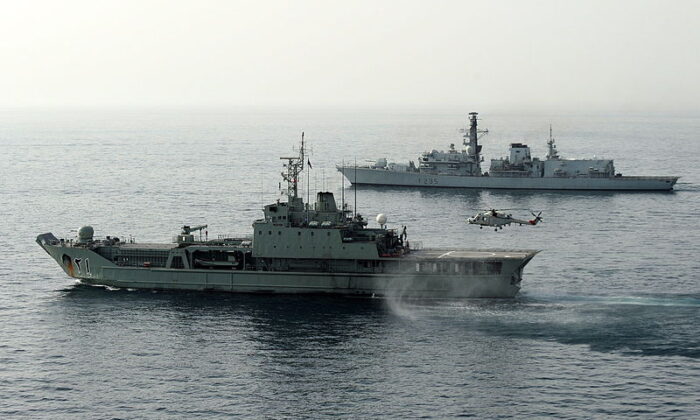
The logistic landing ship Nasr Al Bahr of the Algerian ‘Kalaat’ type ordered on 18 March 1982, launched on 16 May 1984 and completed on 13 February 1985 by Brooke Marine Lowestoft. Vehicle deck 246ft x 24ft (75m x 7.4m), bow ramp (18m) long, beaching cargo load 450t or seven main battle tanks. Equipped with two ‘Sea Truck’ LCVP craft. At the stern a flight deck for one Sea Kang helicopter is arranged but no hangar. There is a 16¢ travelling cargo crane on the deck forward of the superstructure. Maximum cargo load is 650t. Two thousand rounds of ammunition for 40mm guns are provided. The class comprises KALAAT BENI HAMMAD (472) and KALAAT BENI RACHED (473), both active.

Specs:
Displacement: 2500t full load
Dimensions: 262ft 6in pp, 305ft 1in oa x 50ft 10in x 7ft 6in (80/93m x 15.5m x 2.3m)
Machinery: 2 shafts, 2 CP propellers, 2 Paxman Valenta 18RP200CM diesels, 7800bhp: 16kts. Range 4000nm at 13kts
Armament: 4-40mm/70 Breda (2×2), 2 20mm (2×1)
Sensors: Radar Decca 1226, Decca 1290, PEAB 9LV200 FCS and CSEE Lynx EO gunsight
Complement: 13 officers and 68 men (plus 240 troops)
 SABA AL BAHR class utility landing craft (1982)
SABA AL BAHR class utility landing craft (1982)
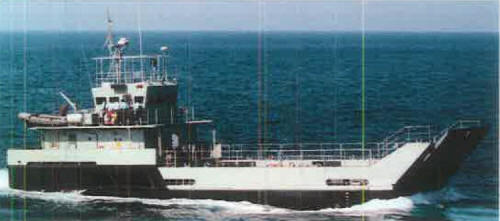
Class: Saba Al Bahr (C 8, launched 30.6.81), A/ Doghas (C 9, 8.9.82, 12.11.82, 10.1.83) Tenesah (C 10, 8.9.82, 15.12.82. 12.2.83).
Built by Vosper (Singapore) Pte Ltd. First ordered in April 1981 and the other two on 8 May 1982. Can carry 100t vehicles or stores. C 9 and C 10 are longer than C 8 with length increased to 108ft 3in oa (33m).
Specs:
Displacement: 230t full load
Dimensions: 98ft 5in oa, 84ft pp x 26ft 3in x 4ft (30m/25.6m x 8m x 1.2m)
Machinery: 2 shafts, 2 Caterpillar 34087 A diesels, 1840 bhp: 8kts. Range 1800 nm at 8kts
Armament: None. Complement: 11
 Omani LCUs
Omani LCUs
The following twin diesel LCUs were extant in 1990 except Al Doghas (stricken 1981), and A/ Dhaibah (stricken 1982):
Al Sansoor (C 4), (Al Doghas C 5, ex-Kinzeer al Bahr), ‘Loadmaster’ class launched by Cheverton, Cowes in 1974, in service January 1975; 60t (130t full load), 6kts, 60ft x 20ft x 3ft 7in, (18.0m x 6.0m x 1.2m), crew 6.
Sulhafa al Bahr (C 3), ‘Loadmaster’ class launched in 1975 by Cheverton, Cowes; 30dwt, 45t, 8.5kts, 45ft x 15ft x 3ft (13. 7m x 4.6m x 1.7m).
Al Dhatbah (C 6), launched in 1975 by Impala Marine, Twickenham; 75dwt, 122¢grt, 9kts, 75ft x 23ft x 5ft (22.9m x 7.0m x 1.5m), crew 8.
Kasab Kumzar, I, Ml, III, built in 1977 by Impala Marine, Twickenham; 122ert, 9kts, 84ft x 25ft x ?) (25.6m x 7.6m x ?)
Al Neemran (C 7), I, launched in 1979-81 by Lewis Offshore, Stornoway; 85t, 8kts (25.5m x 7.4m x 1.8m), crew 8.
Zara 16, Zara 20, Zara 22 built in 1981, 11t standard, 23t full load, 20kts (18m x 3.8m x 0.5m), 2-12.7mm MG (2×1), crew 4. Zara 22 is 52ft 61n oa (16m).
 DHOFAR class fast attack craft (missile)
DHOFAR class fast attack craft (missile)

Class: Dhofar (B 10, 30.9.80, 14.10.8), 7.8.82), Al Shargiyah (B 11, Oct 1981, 2.12.82, 5.12.83), Al Bat’nah (B 12, 9.12.81, Nov 1982, 18.1.84), Mussandam (B 14, 8.10.87, 19.3.88, 31.3.89).
Also referred to as the ‘Province’ class. Designed by Vosper Thornycroft (OK) Ltd as a modified version of the Egyptian ‘Ramadan’ class FAC. B 10 ordered in 1980, B 1] and B 12 in 1981 and B 14 in 1986. B 10 is fitted with Sperry Archer Mk 2 fire control system while others have PEAB 9L.V300 system. These ships are fitted with two 100hp electric motors for manoeuvring. Status: Retired.
Specs:
Displacement: 311t light; 394t full load
Dimensions: 170ft 7in pp, 186ft oa x 26ft 10in x 7ft 11in (6ft 11in hull) (52.0m, 56.7m x 8.2m x 2.4m (2.1m)
Machinery: 4 shafts, 4 Paxman Valenta 18RP200 diesels, 18,200bhp: 40kts. Range 2000nm at 15kts
Armament: 6x(8 in B 11, 12, 14) MM40 Exocet SSM (2×3), 1-76mm/62 OTO Melara, 2-40mm/70 Breda (1×2), 2-12.7mm (2×1)
Sensors: Radar in Dhofar (Plessey AWS-4, Decca 1226), other ships Decca TM 1226C
Complement: 45 (5 officers) plus 14 cadets
 Project MAWJ fast attack craft (gun)
Project MAWJ fast attack craft (gun)
In September 1993 three craft, with the option for five more, were ordered from the CMN shipyard, Cherbourg. Design is a modified French P 400 type large patrol craft with twin funnels instead of the underwater exhaust for the main engines. First unit delivered in late 1995 without armament, fitted at the Muscat dockyard. The 76mm guns are for the second-group Al Bushra class large patrol craft Which these class replaced in service.
Specs:
Displacement: 475t full load
Dimensions: 178ft 10in x 26ft 3in x 8ft 10in (54.5 x 8.0m x 2.70)
Machinery: 2 shafts, CP propellers, 2 SEMT-Piclstick 16 PA4 V209 diesels, 8000bhp: 24.5kts. Range 4200n/15kts
Armament: 1x 76mm 62 OTO Melara, 2x 30mm (2×1) Autocannon
Sensors: Radar surface search, fire control optronic director
Complement: 26 (3 officers) plus 20 spare berths
 AL BUSHRA class large patrol craft (missile and gun)
AL BUSHRA class large patrol craft (missile and gun)
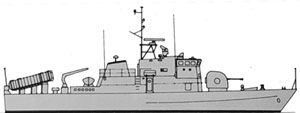
Class: Al Bushra (B1), Al Mansur (B2, 26.3.73), Al Nejah (B3, 13.5.73), Al Wafi (B4, 24.3.77), Al Fulk (B5, 24.3.77), Al Mujahid (B6, 6.10.77), Al Jabbar (B7, 6.10.77).
All 37.5m boats built by Brooke Marine Ltd. First three ordered on 5 January 1971 and commissioned 1973, B 4~7 ordered April 1974 and delivered 1977. B 1 B 3 rearmed with Exocet missiles and Sperry Sea Archer fire control systems by builders, November 1977 November 1978. Al Bushra lost on 28 November 1978 when she was washed off the delivery ship while in the Bay of Biscay. A replacement boat was ordered in 1980 and is a Dhofar. B 4-7 fitted with Lawrence-Scott optical director. B 1-3 originally armed with two single 40mm gun fore and aft. Al Mansur stricken 1986. Others late 1990s.
Specs:
Displacement: 140t standard; 185t full load (1st serie), 125t standard; 160t full load (2nd)
Dimensions: 123ft oa x 22ft 8in x 5ft 7in (37.5m x 6.9m x 1.7m)
Machinery: 2 shafts, 2 Paxman Ventura 16 RP-200 diesels, 4800bhp: 28kts. Range 3230nm/13kts or 3300nm/12kts
Armament: 2 MM38 Exocet SSM (2×1), 2-40mm/70 Breda-Bofors (1×2), 2 7.62mm MG (in B 1-3) or 1-76mm/62 AA OTO Melara (130rds), 1 20mm, 2 7.62mm MG.
Sensors: Radar Decca TM-916
Complement: 27
 Ex-Netherlands DOKKUM class coastal minesweepers
Ex-Netherlands DOKKUM class coastal minesweepers
Class: Al Nasiri (ex-Axel), Al Salihi (ex-Aalsmeer)
Pennant 1/2. Ex-Netherlands minesweepers (launched 1955) bought by Oman in 1974. Air-conditioned and fitted as patrol boats. Similar to British ‘Ton’ class. Their minesweeping gear was removed and the third 40mm gun placed on the main deck aft. Stricken 1981.
 HARAS 1-5 patrol boats
HARAS 1-5 patrol boats
These boats named Haras 1-5 were built in 1975 by Vosper Thornycroff, Singapore. First four operational from 22 December 1975. GRP hulls. Haras 5 delivered in November 1978. All retired;
Specs:
Displacement: 45t full load
Dimensions: 75ft x 20ft x 5ft 10in (22.9m x 6.1m x 1.8m)
Machinery: 2 shafts, 2 Caterpillar D438 diesels, 1840 bhp: 24.5kts. Range 600nm at 20kts, 1000nm at 11 kts
Armament: 2 20mm
Sensors: Radar Decca 101
Complement: 11
 HARAS 7 patrol boat
HARAS 7 patrol boat
Small patrol boat built in 1981 by Karlskronavarvet AB. Swedish type CG 29 Gmproved CG 27). GRP hull. Sister ship Haras 9 and 10 also built by Karlskrona, Sweden.
Specs:
Displacement: 80t full load
Dimensions: 94 ft x 17ft x 3ft 3in (27m x 5,2, x 1m)
Machinery: 2 shafts, 2 MTU 8V331 IC82 diesels, 1866 bhp: 25kts
Armament: 2-20mm (2×1)
Sensors: Radar Decca 1226C
Complement: 13
 HARAS 8 patrol boat
HARAS 8 patrol boat
Built in 1981 by Le Comte, Netherlands. Type PT 1903 Mk III. In service August 1981.
Specs:
Displacement: 30t standard; 33t full load
Dimensions: 63ft x 15ft 8in x 4ft (19.2m x 4.8m x 1.2m)
Machinery: 2 MTU 8V33-1 diesels, 1200/1600bhp: 30kts. Range 1650nm/2300nm at 17kts/12kts
Armament: 2-12.7mm MG
Complement: 10
 HARAS 9 patrol boat
HARAS 9 patrol boat
Patrol boat of CG27 type built in 1980 by Karlskronavarvet on GRP hull. Operated by the police.
Specs:
Displacement: 53t
Dimensions: 78ft 9in x 18ft lin x 6ft 2in (24.0m x 5.5m x 1.9m)
Machinery: 2 shafts, 2 MTU 12V331 diesels, 2660bhp: 25kts
Armament: 1-20mm Oerlikon
Complement: 11
 Royal Oman Police Vessels:
Royal Oman Police Vessels:
Dheeb Al Bahar I in service 1984, built by Watercraft Ltd, 80t full load, 38kts, 68ft 3in oa x 19ft x 4ft lin, (20.8m x 5.8m x 1.5m), armament 1-20mm, 67.62mm (6 x 1).
Dheeb Al Bahar II/III in service 1988, built at Yokohama, 65t full load, 36kts, 75ft 6in x 17ft lin x 3ft 1lin (23.0m x 5.2m x 1.2m), armament 1x 7.62mm.
 SEEB class patrol craft
SEEB class patrol craft
Class: Al Seeb (B 20), Al Shinas (B 21), Al Sadh (B 22), Al Khasab (B 23)
Built by Vosper, Singapore; all commissioned August 1981. GRP hulls, Extant 1995. Other patrol craft. Five Watercraft and Emsworth type inshore patrol craft (16/18t, 45f/52.5ft, 32kts) built 1981 and 1987: Zahra 14, 15, 17, 18, 21.
Specs
Displacement: 75t full load
Dimensions: 82ft 10in oa, 75ft 6in pp x 19ft x 5ft 2in (25m, 23m x 5.8m x 1.6m)
Machinery: 3 shafts, 2 MTU 12V331TC-92BW255 diesels, 3072bhp: 26kts. Range 200nm at 8kts. +1 Cummins 200bhp cruise diesel for 8 kts
Armament: 1-20mm
Sensors: Radar Decca
Complement: 13
Sources
Conway’s all the world’s fighting ships 1947-95, p.296-298
on navypedia.org/
mod.gov.om/en-US
globalsecurity.org oman-navy-history.htm
globalsecurity.org/ oman-navy.htm
OMAN’S MARITIME DOCTRINE Submitted by Khamis Salim Sulaiman Aljabri to the University of Exeter
on naval-technology.con
 Pakistani Navy
Pakistani Navy
 Paraguaian Navy
Paraguaian Navy
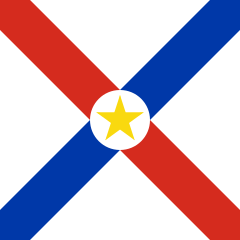 Like most South American Navies, the Paraguayan Navy dated back the Bolivarian revolutions, and was created in 1811. The Armada Paraguaya was ans still is a “brown navy”, totally riverine and without offshore capability. Part today of the Armed Forces of Paraguay it is tasked to defend Paraguayan waters, despite not having direct access to the sea. Access to the sea was partially restored during the War of the Triple Alliance (1864–1870) against Brazil, Argentina, and Uruguay, as well as a the Chaco War (1932–1935) against Bolivia. Landlocked, its maritime tradition depended of a permanent access to the Atlantic Ocean through the Paraguay–Paraná rivers. The forces are spread between twelve bases contrlling all important waterways points. The main base is the Puerto Sajonia, Asuncion, then Bahia Negra, Ciudad del Este, Encarnacion, Salto del Guaira. The air force also contributes to its surveillance tasks, from Puerto Sajonia.
Like most South American Navies, the Paraguayan Navy dated back the Bolivarian revolutions, and was created in 1811. The Armada Paraguaya was ans still is a “brown navy”, totally riverine and without offshore capability. Part today of the Armed Forces of Paraguay it is tasked to defend Paraguayan waters, despite not having direct access to the sea. Access to the sea was partially restored during the War of the Triple Alliance (1864–1870) against Brazil, Argentina, and Uruguay, as well as a the Chaco War (1932–1935) against Bolivia. Landlocked, its maritime tradition depended of a permanent access to the Atlantic Ocean through the Paraguay–Paraná rivers. The forces are spread between twelve bases contrlling all important waterways points. The main base is the Puerto Sajonia, Asuncion, then Bahia Negra, Ciudad del Este, Encarnacion, Salto del Guaira. The air force also contributes to its surveillance tasks, from Puerto Sajonia.
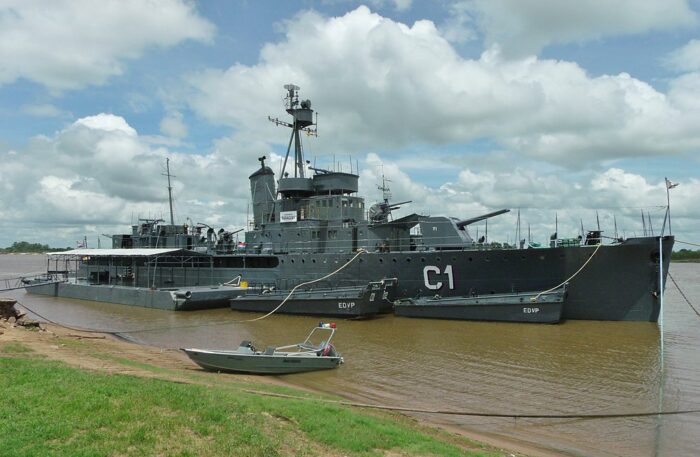
ARP Paraguay (C1), flagship, a 1930 ex-US Coast Guard Patrol vessel donated by the US. In the cold war, the Navy made the acquisition of three ex-Argentinian Bouchard class minesweepers: Nanawa, Capitan Meza and Teniente Farina in 1964-68, still active in the 1990s. They had four Bofors guns and two Browning M2HB. Itaipu was a former Briazilian Roraima class riverine gunboat. She was ordered in 1982 from Arsenal de Marihna in Rio, laid down in March 1983, completed in April 1985 and provided with ah helideck. She became P05 in 1989 and is still active.
Others as two ex-CG class USCG vedsels, and two US 701 types from the US. The Paraguayan built P07 class is 18ton, 200 hp for 12 kts, 2x M2HB HMG.
Equipment and structure
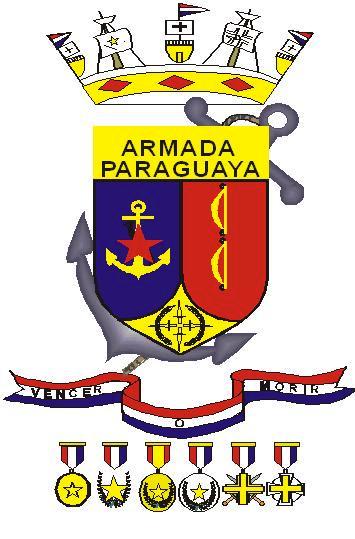 Today, the Navy has 34 surface ships, many being already more than a century old, mostly due to their nature as gunboats. They remained unaffected by modern tech and the constant race out at sea. These are flat-bottom fresh water vessels, speed is not an issue although there are speedboats in use for special operations. The flagship is still the good old Humaita, commissioned prior to Paraguay’s involvement in the Chaco War. Four patrol vessels completes this as main riverine gunboats (oldest 1908, newest in 1985). There are in complement 17 patrol boats of various drafts. Four were donated by Taiwan and the United States recently and while 13 designed and built locally. There is also an important auxiliary fleet of tugboats, barges, landing craft, transports, and a presidential yacht.
Today, the Navy has 34 surface ships, many being already more than a century old, mostly due to their nature as gunboats. They remained unaffected by modern tech and the constant race out at sea. These are flat-bottom fresh water vessels, speed is not an issue although there are speedboats in use for special operations. The flagship is still the good old Humaita, commissioned prior to Paraguay’s involvement in the Chaco War. Four patrol vessels completes this as main riverine gunboats (oldest 1908, newest in 1985). There are in complement 17 patrol boats of various drafts. Four were donated by Taiwan and the United States recently and while 13 designed and built locally. There is also an important auxiliary fleet of tugboats, barges, landing craft, transports, and a presidential yacht.
The Paraguayan Navy is divided into two main naval areas that in Bahía Negra. Helicopter facilities are in Asunción and aircraft at Silvio Pettirossi Airport with Cessna planes trainers and liaison aircraft. The UH-12 is officially in storage as of 2024.
The latest additions are four Croc-class riverine vessels from Australia, 43 locally built riverline patrol vessels in 2006–2009. Air support is provided by a single Helibras HB350 helicopter for SAR, MEDEVAC or utility tasks.
Note: The country in 1995 had 3664 officers and men and 500 marines divided into three brigades, all under a Marine Infantry Command. Today it is 5400 strong total. It’s motto is Vencer o Morir (To win or to die). It’s anniversary is on 12th September, with chants of “Marcha al Mariscal Lopez”.
UN Peacekeeping Missions undertook by the Paragayan Navy:
Haiti (MINUSTAH), Cyprus (UNIFICYP), Democratic Republic of the Congo (MONUC), Central African Republic Central African Republic (MINURCAT), Ivory Coast (UNOCI)
Sudan (UNMIS), Liberia (UNMIL), and Republic of the Congo (MONUSCO).
List
-Gunboat ARP Paraguay (C1), built 1930. Still active, off-shore capabilities.
-Gunboat ARP Humaitá (C2) (same, still commissioned but as museum ship)
-River patrol ship ARP Capitán Cabral (P01)
-River patrol ship ARP Itaipú (P05)
-Patrol vessel ARP Capitán Ortiz (P06)
-Patrol vessel ATP Teniente Robles (P07)
-Patrol vessel ARP Yhaguy (P08)
-Patrol vessel ARP Tebicuary (P09)
-Five patrol boats: LP7-LP11
-Two Class 701 patrol boats Class: LP101 108
-Two Croq-15 class patrol boats: P201-202
-Forty three Light patrol boats: All constructed in Paraguay between 2006 and 2009
-Patrol vessel ARP Pirá 500 SL 5 × 1.60 m. Yamaha 25 hp.
-Patrol vessel ARP Pirá 170 SVX 5.20 × 1.60 m. Yamaha 40 hp.
-Patrol vessel ARP Pirá 240 SVX 6.50 × 2,40 m. Yamaha 90 hp.
-Patrol vessel ARP Pirá 4.80 × 1.80 m. Yamaha 50 hp.
-Tugboat Triunfo R4 (1960), constructed in USA
-Tugboat Angostura R5 (1960) constructed in USA
-Tugboat Stella Maris R6 (1970)
-Tugboat Esperanza R7 (1970)
-Amphibious LCVP 3 (1980, from Brazil)
-Floating dock: DF-1 (1944) (US built)
-Training ship: Guaraní (1968, Spain)
-Presidential yacht 3 de Febrero (1972)
-Casualty ship T1 (1964)
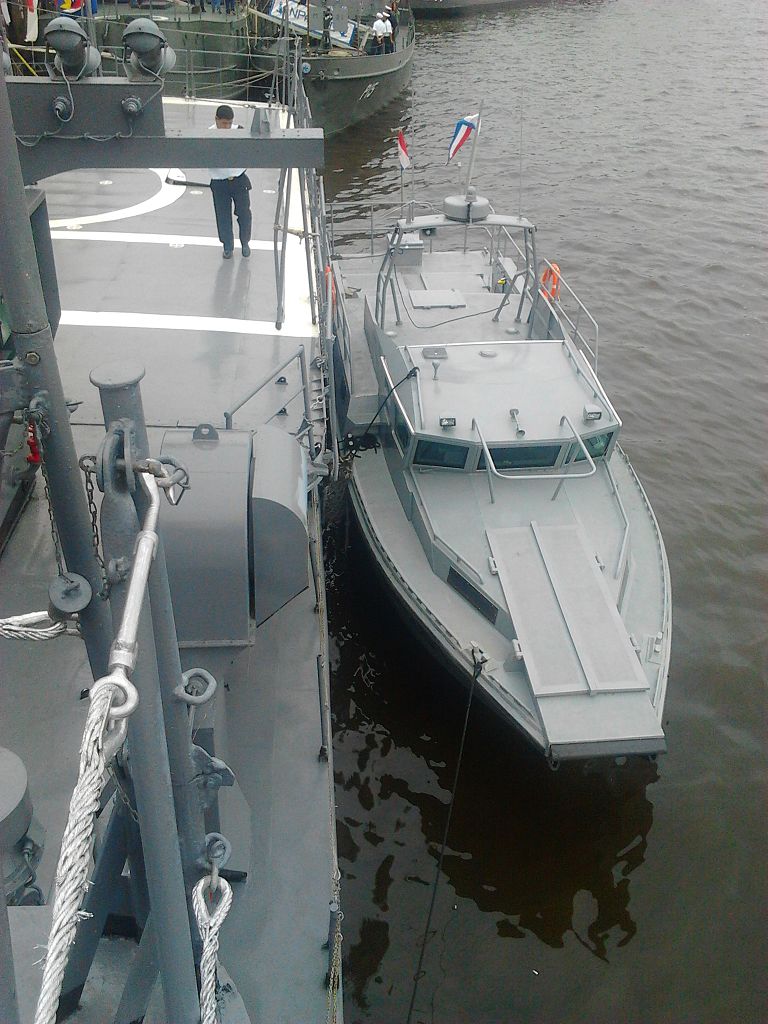
Croc-15 patrol vessel
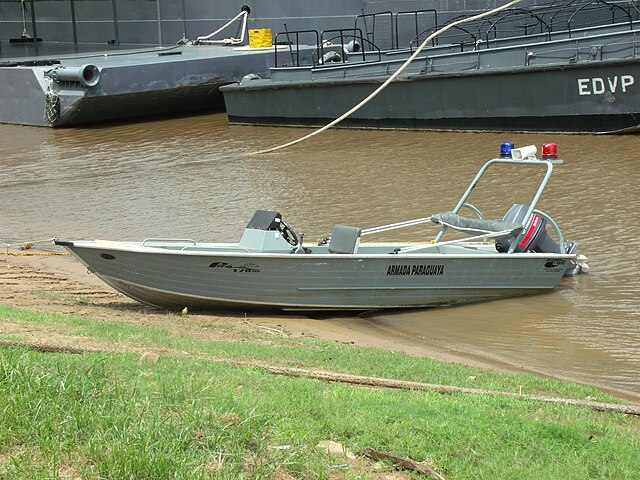
Pirá 170 type speedboat
Sources
Cooke, Melinda W. (1990). “Chapter 5: National Security”. In Hanratty, Dennis M.; Meditz, Sandra W. (eds.). Paraguay: A Country Study. Area Handbook Series (2nd ed.). Library of Congress. pp. 216–217.
Conway’s all the world’s fighting ships 1947-95: P.302
The Paraguay Squadron. Harper’s Weekly, (1858 Oct. 16), p. 669.
armadaparaguaya.mil.py
https://es.wikipedia.org/wiki/Armada_Paraguaya
https://en.wikipedia.org/wiki/Paraguayan_Navy
 Qatari Emiri Navy
Qatari Emiri Navy
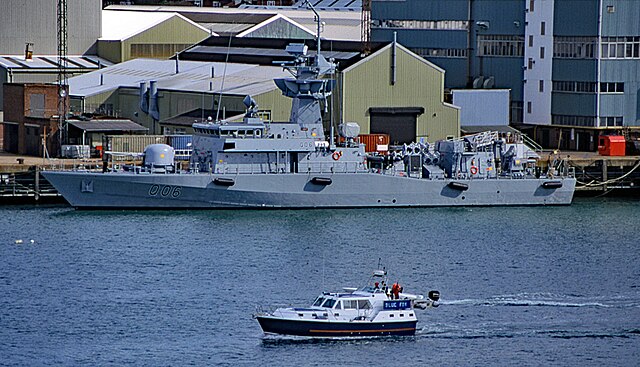
Barzan class Al Uleid. In commissioned from 1996, UK built at Vosper Thornycroft. They are 380/53t ships capable of 35 kts, armed with on OTO Melara 76mm, one 30mm Goalkeeper, two Exocet MM40 Block 3 anti-ship missiles and a Mistral 6-cell launcher, so quite capable ships.
The State of Qatar only had a navy from its independence from the United Kingdom in 1971. In 1992 the armed forces had grown considerably, helped by the pretoluem industies revenues. At that stage, there were 700 personnel and the bulk of the lfeet was constituted around three La Combattante III missile boats from France, joined soon by six Vosper Thornycroft patrol boats. In 2010 it rose to 1,800 personnel, and more frequent naval exercises with the USN and others. This is a small mobile force that that can intercept and repel incursions in its limited territorial waters. The Iran–Iraq War early on showed its vulnerability and ways the navy could be made more efficient. As of 2024 many analysts considers it as under-manned, under-trained, under-equipped to efficiencly protect its commercial assets. Specialized branches arte the Qatari coast guard, Qatari marine police and coastal artillery, equipped with mobile and fixed radar and missile launchers.
The Qatari Navy until 1990
Qatar 1s a small but prosperous Gulf State (4247 square miles, coastline 350 miles, population (1992 UN estimate 485,000). More than half the population reside in the capital, Doha. The state’s naval forces evolved from a coast guard force in the 1970s. Until 1971 Qatar was one of nine independent emirates in the Arabian Gulf which had special treaty relations with the UK. In that year, with the withdrawal of British forces from the area, the treaties were terminated. The state does rely to some extent on Western assistance to operate its armed forces, which have total personnel of about 7000.
The 1994 strength of the Naval Force was 850 officers and men, including the Marine Police. The main base is at Doha and a second base is located at Halul Island. The navy has received no new craft since three “Combattante III M” fast attack craft were delivered in 1982-83, but in 1992 funds were allocated for four fast attack craft to be built by Vosper Thornycroft (UK) Ltd. Truck-mounted Exocet missiles are deployed for coast defence.
List
-3x La Combattante IIIM FACM
-4x Vosper Vita type FAC
-2x 75ft Vosper PCs
-6 Fairey Marine Spear class PCs
-7x P1200 water craft
-2x Fairey Marine Interceptors
Danvah (La Combattante) class FAC(M)
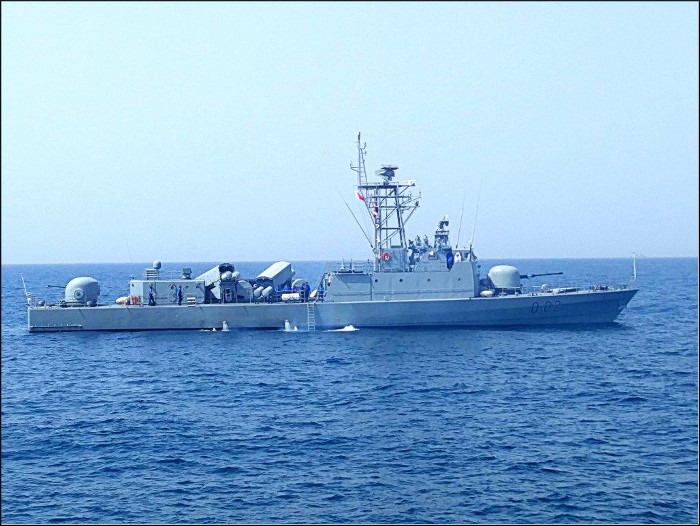
Class: Danvah (6.6.81, 17.6.82, 10.11.82), Al Ghariyah (26.8.81, 23.4.82, 10.2.83), R’Biva (27.10.81, 22.12.82, 11.5.83).
Ordered from CMN, Cherbourg October 1980. In 1980 Qatar ordered about 100 MM40 Exocet missiles for these boats and Jand batteries, Two CSEE Panda directors for fire control. Very similar to Nigerian Siri class. Pennant numbers Q 01, Q 02, Q 03 respectively. Stil active 2024.
Displacement: 345t standard; 395t full load
Dimensions: 173ft 10in pp, 183ft 9in oa x 20ft 9in x 7ft 1in (53/56m x 8.1 x 2.1m)
Machinery: 4x shafts, MVPU 20V5 38 B94 diesels, 15,000bhp 8.5kts. Range 20000m at 15 kts
Armament: 8x MM40 Exocet SSM (2×8), 1x 76mm 62 DP OTO Melara, 2x 40mm/70 70 Breda-Bolors Compatto, 2×2 30 mm Emerlec, Dagaie chaff RL.
Sensors: Radar Decea 1226, Thomson-CSE Pollux, Castor, ESM/ BGM Racal Cutlass Cygnus.
Complement: 41 (6 officers).
“VITA” class FAC(M)
Vosper Thornycroft ‘VITA’ type fast attack craft. A contract for four modified ‘Vita’ type to be built by Vosper Thornycroft (UK) Ltd was announced on 4 June 1992. First steel was cut on 20 July 1993 and the prototype boat, named Bazan, was launched on April 1995. Other three craft were completed at six-monthly intervals thereafter. They are characterised by a long raised forecastle for better seakeeping. The side-plating forward feature a pronounced antispray knuckle. Proposed replacement of Goalkeeper CIWS with Crotale SAM is a result of Gulf conflict experience.
Displacement: 376t full load
Dimensions: 183ft 9in x 29ft 6in x 7ft 7in 53.6m x 9.0m x 2.3m
Machinery: 4 shafts, 4 MTU 20V 538 TB93 diesels, 18,740bhp = 35kts. Range 1800nm at 12kts
Armament: 4 or 8 MM40 Exocet SSM (2 x 2 or 2 x 4), 1-76mm/62 OTO Melara, 1x30mm Goalkeeper CIWS or ThomsonCSF Crotale SAM, 2-12.7mm
Sensors: Radar air surface search, navigational; fire control Signaal STING, IRESCAN electro-optical tracker; combat data system SEWACO FD with Thomson-CSF TACTICOS, Link Y; ECM/ESM Thomson CSF DR30008S, Dassault ARBB33, CSM Dagaie chaff launcher
Complement: 47 (7 officers)
Vosper Thornycroft 110ft
Class: Barzan (Q 11, 13.1.75), Hwar (Q 12, 30.4.75), That Assuart (Q 13, 3.10.75), Al Wusaail (Q 14, 28.10.75), Fateh al Khair (Q 15, 22.1.76), Tarig (Q 16, 13,76).
Ordered in 1972-73. All laid down by Vosper Thornycroft, Portsmouth, between Sepember 1973 and November 1974, Some sources give displacement 100t standard, 140t full load and power 4000bhp. Others refer to these ships as 103ft type with 31.1m pp, 32.4m oa x 6.3m x 1.6m and armed with 2 30mm (1×2) and 2 20mm.
Displacement: 120t
Dimensions: 110ft x 21 ft x 5ft 6in 33.5m x 6.4m x 1.7m
Machinery: 2 shafts, 2 Paxman Valenta 16-cyl diesels, 6000—6250bhp = 27kts
Armament: 2 20mm (1×2)
Complement: 25
Others misc.
75ft coastal patrol craft: Two 60t units built by Whittingham & Mitchell, Chertsey, England. In service 1969 with 2x 20mm. Stricken 1990.
Keith Nelson 45ft type coastal patrol craft: Two units built early 1970s by Keith Nelson, Bembridge, a division of Vosper. A third vessel of this group has been converted into a pilot cutter. Displacement: 13t Dimensions: 44ft 3in x 12ft 6in x 3ft 7in 13.5m x 3.8m x 1.1m. Machinery: 2 Caterpillar diesels, 800bhp = 26kts. Armament: 1-12.7mm MG, 2-7.62mm MG (2×1). Complement: 6. Now retired
Fairey Marine ‘SPEAR’ class coastal patrol craft:
Class: QO 70-95.
All built by Fairey Marine 1974-77. Seven ordered early 1974. Delivered June 1974-February 1975. Contract for further five assigned December 1975. Three more delivered; two on 30 June 1975 and one on 14 July 1975. Order for ten further craft (four Mk 1, six Mk 2) received October 1976 and delivery effected April 1977.
Displacement: 4.3t/10t. Dimensions: 29ft 10in x 9ft 2in x 2ft 8in 9.1m x 2.8m x 0.8m. Machinery: 2 shafts, 2 Perkins T6—-354 diesels, 580bhp = 26kts. Armament: 3-7.62mm MG. Complement: 4. Now retired
Watercraft P 1200 type coastal patrol craft: 7 Brity-built 1980 (12.7t, 2-MGs, 660hp, 2 shafts = 29kts) with a complement of 4 each. Retired.
Fairey Marine ‘Interceptor’ class: Fast assault/rescue craft (1.25t, 270bhp = 35kts with a range of 150nm at 30kts). Delivered 28 November 1975. Now retired.
2024 List
-4x Doha class corvettes (2018-23)
-2x Musherib class OPVs (2018-22)
-2x Ares 150 Hercules class (2020)
-3x Damsah class FAC (see above)
-4x Barzan class FAC (1996-97)
-3x MRTP 34 class FAC (2013)
-4x MRTP 24/U class FAC (2018)
-4x MRTP 24/U class FAC (2019, armament different)
-10x MRTP 20 class FAC (2020)
-3x MRTP 16 class FAC (2012)
-1x Al Fulk LPD (2016)
-1x Robha class LST
-4x unnamed LSU
-1x unnamed support ship
-2x Doha class TS (2021)
-4x 120 tonsVosper patrol boats (see above)
-6x Vosper 110 ft. class (see above)
-6x Damen Polycat 1,450 class PCs
-x2 Keith Nelson type 44 ft.class PCs
-x2 Fairey Marine Interceptor class PCs
-4x MV-45 class PCs
-25x Fairy Marine Spear class (see above)
-5x P-1500 class PCs (see above)
-4x DV-15 class PCs
-3x Helmatic M-160 class PCs
-11 fast interceptor boats, Special maritime forces
-2 Halmatic (Vosper Thornycroft) Pilot craft
-4 Rotrork craft
Coastal forces
4 × Goalkeeper anti missile\aircraft gun NL wheeled
4 × Stingeo ship sensor NL wheeled
4 × Exocet coast defense batteries on trucks
4 × MMR-3D Radar on trucks
Plans
The patrol boat program:
-Six new PCs, first unit started 2012, delivered 2014.
-Four corvettes planned at Damen/Nakilat with Sigma hulls.
The Qatar Coast Guard Services ordered 17 new fast patrol boats from the Turkish ARES Shipyard. Ten “ARES 110 Hercules” multi-role 117 tons PCs and five “ARES 75 Hercules” multi-role 58 tons PCs plus two “ARES 150 Hercules” multi-role 245 tons PCs. Using advanced composite materials.
On 31 March 2014, Nakilat Damen Shipyards Qatar (NDSQ) signed two MoUs for deliveri of seven vessels under $851 million, 50 m (164 ft)-long axe-bow high-speed patrol vessels, one 52 m (171 ft)-long diving support vessel including decompression capabilities as well as a large Integrated Logistic Support package.
On 16 June 2016, Qatars signed LoA with Fincantieri for a landing helicopter dock (like the Kalaat Béni Abbès).
Doha-class corvettes (3,250 tons) with helicopter deck and hangar delivered since. They are the most potent today in the Qatari Navy, featuring an Oto Melara 76 mm, two 30 mm guns, 16-cell VLS for Aster 30 surface-to-air missiles, 8 Exocet MM40 Block III anti-ship missiles, and a RAM launcher with 21 RIM-116 short range rolling airframe missiles.
First keel laid by Fincantieri in November 2018, now almost all delivered unde the Al Zubarah class (or Doha class) programme. Names Al Zubarah F101, Damsah F102, Al Khor F103, Sumaysimah F104.
Alsp: 2x offshore patrol boats (670 tons) admed with an Oto Melara 76 mm, 2 30 mm guns, 8-cell VLS for VL MICA short range surface-to-air missiles and 4 Exocet MM40 Block III anti-ship missiles under €4.9 billion for all the Fncantieri orders.
On 19 December 2017, the Qatari Navy wanted underwater capabilities and started prospecting for light submarines.
Two cadet training ships were also ordered from from Turkish shipbuilder Anadolu Shipyard. 1,950 tonnes with helipad (medium-size helicopter) and offshore patrol duties in case of crisis.
In February 2020, Qatar signed a MoU with Fincantieri, to acquire submarines and aircraft carriers under 5-billion-euro deal already signed in 2017.
Sources
https://www.globalsecurity.org/military/world/gulf/qatar-navy.htm
on en.wikipedia.org
navalnews.com/ fincantieri launches first OPV for quatar
navalnews.com fincantieri starts work first OPVs
fincantieri.com musherib-class/
naval-technology.com qatar/
armyrecognition.com/ barzan class
web.archive.org defencejournal.com barzan
on dohanews.co/
on armyrecognition.com
on ares.global/
on forbes.com
on reuters.com/
on tacticalreport.com
on web.archive.org qatar corvette and patrol vessel
Conway’s all the world’s fighting ships 1947-1995 p423.
 San Salvador Navy
San Salvador Navy
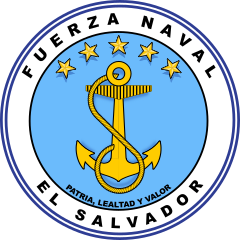 The Navy of El Salvador (Naval de El Salvador) is the naval arm, founded on 12 October 1951. It was created from ships initially from the Salvadoran Coast Guard. This is a small green water navy of patrol boats, for patrols and fishery protection. As of today, this force comprises three Camcraft-type patrol boats (ex-US, for oilfield crews). Plans included new ships ordered from Chile as replacement as some of these are way past half a century as shown below:
The Navy of El Salvador (Naval de El Salvador) is the naval arm, founded on 12 October 1951. It was created from ships initially from the Salvadoran Coast Guard. This is a small green water navy of patrol boats, for patrols and fishery protection. As of today, this force comprises three Camcraft-type patrol boats (ex-US, for oilfield crews). Plans included new ships ordered from Chile as replacement as some of these are way past half a century as shown below:
 PM06 class
PM06 class
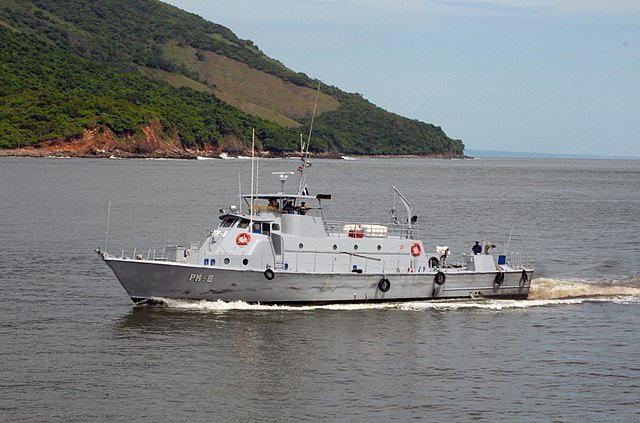
Originally built by Camcraft, Crown Point, USA, 100t patrol boats from 1975 (PM06-08). Unarmed but small arms and perhaps a pintle-mounted Browning cal.05 HMG.
Other vessels includes the following:
PM10, Swiftship (Morgan City) 65 ft class Patrol boat, 36t (1984).
PM11, Swiftship (Morgan City) 77 ft class Patrol Boat, 69t (1985).
PM12, USCG Point class cutter (Martinac SB, Tacoma) 69t Patrol boat (1967).
-8x 37-foot Boston Whaler donated by US government, probably 1980s.
-8x PC01-09 (Protector class, 11t acquiored 1988-89, one discarded 1998.
-1x BD02 USN LCM(8) craft 121t, 1950s com. 1987.
-3x BD04-06 USN LCM(8) craft, same but commissioned 1996, 2010.
-BL01 General Manuel José Arce. Cactus/Balsam-class Ex-USCGC Madrona Support vessel (1038t). Originally a seagoing buoy tender for the U.S. Coast Guard in 1942. Decommissioned, sold to El Salvador in 2002. Status: sunk.
Future plans includes three patrol boats from Chile, 107 tons,32.7 x 6.7 x 2.1 meters, crew 14, 18 knots, one 20mm gun, one 12.7mm HMG.
More
“El Salvador”. Military Technology World Defence Almanac. Bonn : Wehr & Wissen 2005
on armada.cl/
on web.archive.org
on fuerzaarmada.mil.sv
on country-data.com
on web.archive.org/
on en.wikipedia.org
 Saudi Navy
Saudi Navy
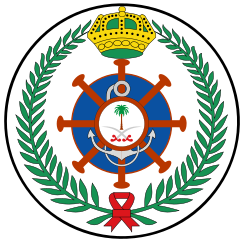 The Royal Saudi Navy (formally known as the Royal Saudi Naval Forces, or RSNF) is the naval branch of the Saudi Arabian Armed Forces. It is tasked with protecting the kingdom’s maritime interests, securing its territorial waters, and ensuring the safety of its critical sea routes, such as those near the Red Sea and the Arabian Gulf. It was founded in 1960 and its headquarters are now in Riyadh as administrative center.
The Royal Saudi Navy (formally known as the Royal Saudi Naval Forces, or RSNF) is the naval branch of the Saudi Arabian Armed Forces. It is tasked with protecting the kingdom’s maritime interests, securing its territorial waters, and ensuring the safety of its critical sea routes, such as those near the Red Sea and the Arabian Gulf. It was founded in 1960 and its headquarters are now in Riyadh as administrative center.
Naval Bases:
King Abdulaziz Naval Base in Jubail (Eastern Fleet, Arabian Gulf).
King Faisal Naval Base in Jeddah (Western Fleet, Red Sea).
This Navy was tasked with the following:
-Maritime Defense: Protects Saudi territorial waters and sea lanes.
-Securing Energy Exports: Safeguards oil and gas shipments passing through the Arabian Gulf and Red Sea.
-Counter-piracy Operations: Plays a role in combating piracy, especially in regions near the Gulf of Aden.
-Supporting Coalitions: Contributes to joint maritime operations with allied nations, particularly in the Gulf and Arabian Sea.
The RSNF is a regional blue water navy, operating a mix of capable surface vessels and also submarines, patrol boats and amphibious ships. A full sprctrum including Al Riyadh-class frigates (Mod. La Fayette-class), Avante 2200 corvettes, Patrol Boats and fast attack craft as well as minesweepers and support Vessels for logistics and amphibious operations, advanced anti-ship and air defense systems, and a growing naval aviation wing with helicopters like the MH-60R Seahawk.
The Saudi Arabian Navy also called for modernization Programs with the Saudi Naval Expansion Program II (SNEP II) to upgrade the fleet with modern frigate as well as corvettes, and support ships as well as acquisition of advanced systems from the US, France, Spain.
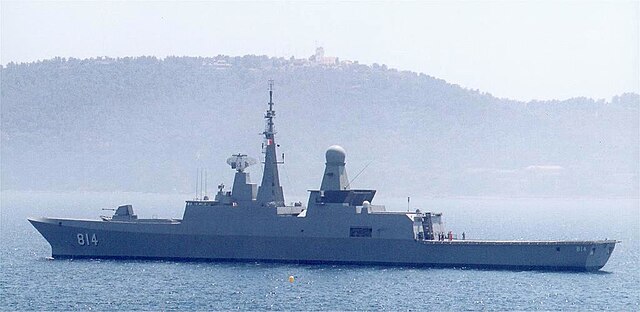
Al Makkah, a modern stealthy Frigate
The RSNF also engages in regular joint exercises with the United States, UK and regional partners such as the Bahrain and the UAE. The were also training agreements with Western countries ensure the RSNF remains well-prepared for modern naval warfare.
With Saudi Arabia being a leading oil exporter, the RSNF plays a critical role in ensuring the safe transit of energy resources. Its presence in key waterways like the Strait of Hormuz and the Bab-el-Mandeb is vital for regional stability.
 FRY Navy (Serbia-Montenegro)
FRY Navy (Serbia-Montenegro)
The Montenegrin Navy and Serbian riverine flotilla were the result of the Yugoslavian breakup in the wake of the fall of USSR and after a decade of issues following the death of Tito (1980), this happened in 25 June 1991 to 27 April 1992. In 1990 the former communists lost power to ethnic separatist parties in the first multi-party elections across the country, except in Montenegro and Serbia. S. Milošević and his allies there won but the situation was tense due to nationalist rhetoric on all sides.
From June 1991 and April 1992 there four constituent republics independent. Only Montenegro and Serbia remained in the former federation, Germany recognizing the independence of Croatia and Slovenia which left the question of resident ethnic Serbs outside Serbia and Montenegro a real issue. Same for ethnic Croats outside Croatia, and after inter-ethnic incidents, the Yugoslav Wars started, first in Croatia and in Bosnia-Herzegovina with much force. The was left its mark decades later and the memory will still weigh heavily on inter-state relations there. On April 27, 1992, the Federal Council of the Assembly of the SFRY, following advice from the Republic of Serbia and Assembly of Montenegro, adopting the new Constitution of the Federal Republic of Yugoslavia.
It seems highly counter-intuitive to speak of any “Serbian Navy” as after the 1991 partition, the country was, and is still currently landlocked. So apart its riverine vessels, the one and only access to the Adriatic sea and to naval assets, was through Montenegro. Both countries remained indeed in the “federation or Yugoslavia”, later the Federal “Republic of Yugoslavia” (FRY, 1992–2003) and “State Union of Serbia and Montenegro” (2003–2006). Technically they shared the assets left from the partition. The Yugoslavian Navy of Tito in the late 1980s was quite respectable, with a destroyer, four corvettes, 16 submarines and a large numbers of smaller surface combatants. The war of Independence of Croatia resulted in most ports along the eastern Adriatic -like Split, Pola, Zadar, Šibenik and Dubrovnik (three former naval bases here)- ended in Croatian hands.
Bosnian Herzegovina had a small corridor at Neum, whereas the shorter coast of Montenegro went down to Albania. So speaking of any Serbian Navy is tricky after the Federal Republic of Yugoslavia, hampered by inertia and the lack of political will on both sides, led to its dissolution in 2006.
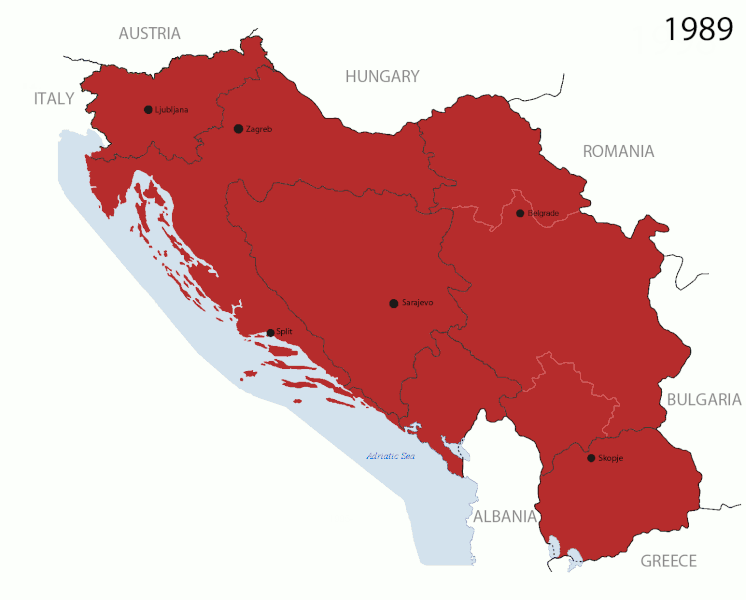
Animated Description of the breakup (cc).
This resulted in two entities, seen here, the Montenegrin Navy and the Serbian River Flotilla, seen below.
Serbian River Flotilla
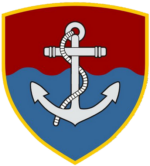 The Serbian River Flotilla (Речна флотила or Rečna flotila) is a tactical brown water naval branch, subordinated to the Serbian Army and patroling on the Danube, Sava, and Tisa rivers. It is responsible for environmental policing, counter-terrorism, border security.
The Serbian River Flotilla (Речна флотила or Rečna flotila) is a tactical brown water naval branch, subordinated to the Serbian Army and patroling on the Danube, Sava, and Tisa rivers. It is responsible for environmental policing, counter-terrorism, border security.
It always existed in fact, going bacl well before even the creation of the Yugoislav Kingdom in the interwar or the Soviet Republic under Tito. Indeed the Serbian Šajkaši river troops guarding the Danube and Sava rivers as well as the Port of Belgrade against the Ottoman Empire, which themselves communicated and attacked using river fleets, remained a constant subject of activity for four centuries, from the 16th to the 19th century.
These local troops were sponsored either by Hungarian or Austrian lords and were composed of ethnic Serbs with a specific military status. They operated a kind of rivering rowing galley, the chaika (Šajka) between 30 and 50 men: Generally they had an officer, helmsman, armourer, drummer, two bowman, 36 oarsmen. They also made the modern Serbian šajkača hat a derivative of the Banat, part of the Šajkaši Battalion uniform. They helped the country gaining independence as a constitutional monarchy and to create modern Serbia. For the first time in the war of 1876, this River Flotilla deployed naval mines on the Danube, first use in Europe.
The Kingdom of Serbia had its first true riverine warship, the patrol boat “Jadar” on August 19, 1915 which is commemorated as the establishment of the modern Serbian River Flotilla. It protected lines of communication between Belgrade and Obrenovac and carried Serbian troops notably in Syrmia as well as laid mines and scouted the rivers. It was integrated in a new state of the Kingdom of Yugoslavia and renamed the “Danube Flotilla”, headquartered in Novi Sad, commanded over naval detachments, centered around a core of monitors and many auxiliary vessels plus the naval base of Lake Ohrid, Macedonia.
There were several detachments of armored river boats and river assault ships as well as river auxiliary ships and minesweepers and post-WW2 they formed the rivering component within the Yugoslav Navy. It was deployed and very active during the War in Croatia in 1991 and proved instrumental in the Battle of Vukovar.
After the breakup of Yugoslavia, in 1992 the River Flotilla remained part of Navy in general, which most coastal assets were taken over by Montnegro and riverinbe assets by Serbia.
Organization of the Serbian River Flotilla
In 1999 the flotilla integrated one Neštin class river minesweeper, two 601 class landing craft, transferred from Montenegrin sea service to the Serbian River Flotilla. The Brodotehnika Shipyard in Belgrade was also modernized and overhauled for their service. The Flotilla was reformed on October 2, 2008 with new pontoon units integrated in its structure and in 2017, “Kozara”, the flagship, sailed from Novi Sad to Hungary, the first of such trips since 1915.
The current Flotilla is organized along this way:
A Command Company in Novi Sad, the 1st River Detachment also in Novi Sad and its dependent 93rd Diving Company.
The 2nd River Detachment in Belgrade,
The 1st Pontoon Battalion in Šabac,
The 2nd Pontoon Battalion in Novi Sad,
The Logistics Company in Novi Sad.
Assets of the Serbian River Flotilla
(To come)
FRY and Montenegrin Navy
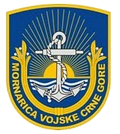 The Montenegrin Navy was established in 2006, following the secession of Montenegro from the State Union of Serbia and Montenegro (FRY and later SUSM). Nearly all of the former late cold war Yugoslavian navy’s assets were inherited by the State Union, Montenegro having sovereignty over the entire coastline of the former union, and retaining after 2006 the entire naval force.
The Montenegrin Navy was established in 2006, following the secession of Montenegro from the State Union of Serbia and Montenegro (FRY and later SUSM). Nearly all of the former late cold war Yugoslavian navy’s assets were inherited by the State Union, Montenegro having sovereignty over the entire coastline of the former union, and retaining after 2006 the entire naval force.
It’s a green water navy, far smaller than the original Yugoslavian Navy, which numerous assets were gradually phased out in the 1990s. See the fate of these in the FRY sections below.
Montenegrin Navy Organization
1-Naval Surface Forces (Površinske pomorske snage):
> Patrol Boat 33 and 34 (Patrolni Brod 33/34) units.
> Patrol Boat 34 (Patrolni Brod 34)
> Rescue Detachment (Odred za spašavanje)
2- Observation Forces: Coastal Surveillance Detachment
3-Special Forces (Specijalne snage): Marine Detachment (Pomorski odred)
4-Training ship Jadran (Školski brod “Jadran”)
5-Serving Platoon (Vod za opsluživanje)
Naval Bases:
-Bar Naval base (Bar)
-Pero Ćetković base (Bar)
-Pristan base (Herceg Novi)
Montenegrin Navy Assets
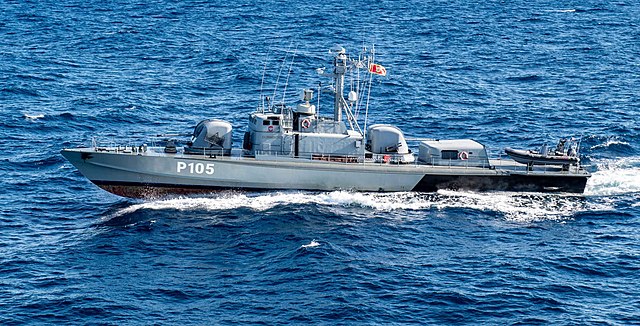
–Končar class fast attack craft (Legacy ships): P-105 Durmitor, RTOP-406 Ante Banina, converted to patrol boats (missiles removed), still active.
-PO-class, PO-91: 1 in reserve, legacy ship. Small 1980s small multi-role transport ship.
-PR-41 (Orada) and LR-77 salvage tugs (legacy boats)
-TS Bojana and Milena, small sailing ships, also legacy.
-3 Masts schooner Jadran, ex-German
-Diving Boats Ronilačka baraksa 81 and 85 (Legacy)
-Motor boat ČM 33 (legacy)
-Motor boat Polycat (Purchased in the NL)
-2 Inflatable fast boats Valiant 620PT (UK)
-Yacht Jadranka (on sale)
Major Surface Combatants, FRY
The Serbian Navy inherited from the Cold War Yugoslav Navy and felt confident to recuperate the bulk of its forces stationed on its limited coasts. Antiquities such as the 1950 destroyer Split was discarded in 1980, but the replacement two missiles frigates KONI I type, VBP-31-32 were still in service, renamed Split and Kopar by the Serbian Navy. The latter was discarded in 1995, scrapped in 2008 and Split in 2013.
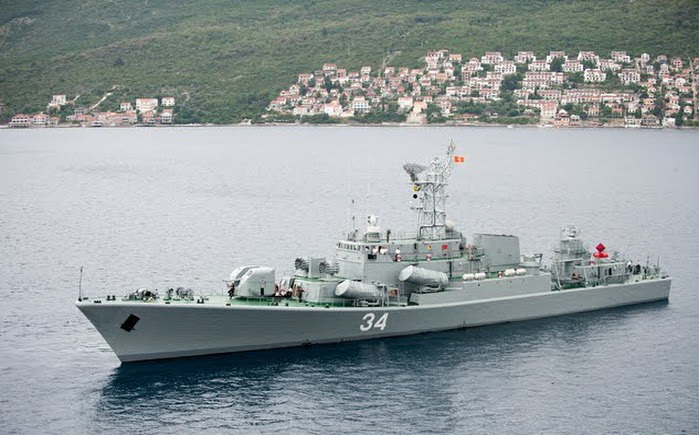
More recent ships were the Kotor class frigates also built in the 1980s as Veliki Patrolni Brod (VPBR 33, 34), retained and gave to the Montenegran Navy in 1991 but discarded in 2019.
Submarines, FRY
In all, Yugoslavia operated c16 submarines during the cold war. We will concentrate here on the most “recent”.
The oldest, retired by 1987 were the SUTJESKA class (1958), locally designed.
The Heroj class (1967) served with the Montenegrin Navy from 1991. During the Croatian War of Independence, all three were relocated from Lora Naval Base to Montenegro, last two decommissioned and scrapped in 2004 but Heroj was restored and preserved at Porto Montenegro Museum in 2013.
As for the SAVA class submarines (1977) completed 1978-81, they were relocated to Montenegro with the Croatian War of Independence with the major overhaul planned on stopped in 1996 and she was decommissioned in 1999. Sava was decommissioned in 2002, offered for sale but sold for scrap in 2008.
As for the four UNA class midget submarines, completed 1985-89 at Split under designation of ‘M 100-D’ type. They were relocated to Boka Kotorska with the Croatian Independence and served with the SR Yugoslav Navy (that is the Serbian -Montenegro federation) but Soča (P-914) was captured in drydock by Croatian forces and entered service as Velebit (P-01).
As for the Mala class swimmer delivery vehicles of the same period, two were reported captured by the Croatians in 1992, two extant 1995 with the Montenegrins.
Minor Surface Combatants
-Soviet ‘SHERSHEN’ class fast attack craft: 3 vessels 1965, discarded 1993-95.
-TYPE 201 fast attack craft (torpedo), 11 vessels close to the Shershen under licence 1966-71, 2 to Croatia 1991, 5 FRY discarded 1992, 2 discarded 1996.
-Soviet ‘OSA I’ class fast attack craft (torpedo): 9 soviet built, transferred 1960s, taken over by Croatia 1991, Discarded 1992-95+.
-TYPE 240 fast attack craft (missile): Six Koncar class, all but two taken over by Croatia, last two active with the Montenegrin navy.
-TYPE 400 ‘KOBRA’ fast attack craft (missile): 2 in cosntruction ion Zagreb, now in the Croatian navy
-MORNAR class Large patrol craft: 2 ships discarded 1992.
-TYPE 501 ‘KRALJEVICA’ class large patrol craft: 8 ships, stricken pre-1990.
-TYPE 509 ‘KRALJEVICA’ class large patrol craft: 15 ships, stricken pre-1990.
-Mirna class patrol craft: 11 ships built in the 1980s, 2 to Croatia, 7 rlocated to Boka Kotorska, FRY, decommissioned in the 200s, last 2012 with the Montenegro Navy
Amphibious Warfare vessels
-The DTM 221 class landing crafts were 1950s MPFs copies (a German WW2 landing barge) were decommissioned in 1990-92. 229, 232, 513 and 514 remained in service with the Yugoslav Federation Navy until 2006.
-Type 21 landing craft, 30 made in Kortila, 1976-79. Discarded 1991-92 but half taken over by Croatia, since discarded in 1995-96.
-Type 22 landing craft, 12 GRP boats, half taken over by Croatia, remainder FRY until discarded.
-SILBA class landing ship: Unique ship, Spht, commissioned 1990, taken over by Croatia.
Links
bokanews.me
on vijesti.me/
cdm.me/
wapi.gov.me/
 Singaporean Navy
Singaporean Navy
 Slovenian Navy
Slovenian Navy
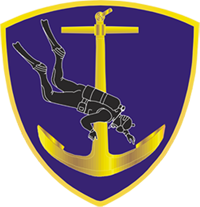 The “Slovenian Navy”, smallest in Europe, is in reality the 430th Naval Division (or Section), integral part of the Slovenian Armed Forces with no more than 130 servicemen and just two vessels, Ankaran and Triglav.
The “Slovenian Navy”, smallest in Europe, is in reality the 430th Naval Division (or Section), integral part of the Slovenian Armed Forces with no more than 130 servicemen and just two vessels, Ankaran and Triglav.
The Slovenian navy was created after independence in 1991 and at the time the territorial Defense Forces of Slovenia had no maritime assets. In 1991 however a small diving detachment was formed in Ankaran, the major port on this rugged coast. The area in the norther adriatic to defend, so close to Italy, was short to say the least and did not justify more than a few small patrol boats. Th detachement was formed with sport-diving equipment during the short war to smuggle weapons through the UN arms embargo.
Later in meacetime, these veterans helped to create the “430th Naval Division” (of the armed forces) in 1993. The embargo was lifted in 1996 and Slovenia was authorized to finance and purchase an Israeli IAI-Ramta Super Dvora Mk2-class patrol boat. Named “Ankaran” it was the very first Slovenian combat ship. In 2008, the MoD announced procurement for a second vessel in order to replace Ankara if she was in refit. This was a former Russian Project 10412 patrol boat, offered in payment of a multimillion-dollar debt, owed to Slovenia. Named Triglav after the national mountain it was optimized for patrols, having no anti-ship missiles instead of the Russian version. For quick boardings and inspection she had two rigid-hulled inflatable boats aft under davits. In June-August 2015 both were in overhaul in nearby Trieste shipyard in Italy.
In 2021, the UAV Galeb from ElevonX was acquired for search and rescue operations at sea.
In 2024, the 430th Naval Division greeted a new addition to its small fleet, the Polish patrol boat Č-91, a 10-metre cutter usable as diver support vessel.
In 2024 it was announced a major overhaul to Triglav for ten more service years. This was following engine troubles in May 2018 while operating in the Med.
Triglav was in east Sicily in late 2013 for migrants policing as a part of Operation Mare Nostrum led by Italy. In October 2015 she took part Operation Sophia.

HPL-21 Ankaran
Specs:
60 tons FL, 25.4 x 5.67 x 1.1 m, in a marine aluminum alloy hull.
Powered by 2 diesels 4,570 hp (3,410 kW)+2 Arneson ASD-16 articulating surface drives.
Top Speed 45–52 knots (83–96 km/h), RA 700 nautical miles (1,300 km) at 42 knots (78 km/h)
She is armed with a Typhoon 25 mm stabilized cannon and 2 × 12.7 mm machine guns.
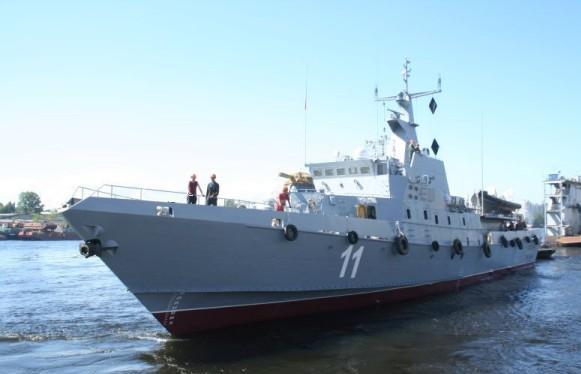
Triglav. This was an export variant of the Svetlyak class patrol boats. 6 were sold to Vietnam.
Triglav’s specs:
333t standard /375 t full load, 49.5 x 9.2 x 2.5 m.
Powered by three MTU 4000 diesels, 16,200 hp, 30 knots, RA 2,200 miles at 13 knots, 10 days at sea.
Armed with one AK-630, two 14.5mm machine guns, sixteen Igla-type MANPADS.
She also have a navigation radar, the 9M120 anti-ship missile system and PK-10 anti-missile projectiles.
She carries two inflatable boats and is equipped wit a decompression chamber
Crew: 4 officers + 24 ratings
More/Src
on en.defence-ua.com/
on rtvslo.si/
on slovenskavojska.si/
on 24ur.com galeb
24ur.com triglav planned overhaul
Slovenian_Navy
 Somalian Navy
Somalian Navy
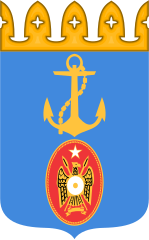 The Somali Navy Ciidamada Badda Soomaaliyeed) is a branch of the Somali Armed Forces, now virtually inactive. It was founded back in 1964 with the help of Soviet military advisers with bases in Berbera (Gulf of Aden) and Kismayo, Indian Ocean, near the border with Kenya. There is also a radar facility in Merca.
The Somali Navy Ciidamada Badda Soomaaliyeed) is a branch of the Somali Armed Forces, now virtually inactive. It was founded back in 1964 with the help of Soviet military advisers with bases in Berbera (Gulf of Aden) and Kismayo, Indian Ocean, near the border with Kenya. There is also a radar facility in Merca.
History
The Somali Republic was formed in 1960 by the union of the former UN Trust Territory (and ex-Italian colony) of Somalia and the former British Somaliland. The country is wretchedly poor and underdeveloped; since time immemorial a sparse, predominantly nomadic population has scratched a subsistence living from arid savannah and barren uplands.
Politically, the corrupt and divided civilian government since independence was overthrown in 1969 by an authoritarian military regime. China provided aid for major civilian projects, while the Army came to rely on Soviet equipment and training; in return, the Soviet Navy developed a small base at Berbera, in the north adding a floating pier and drydock, barracks, and missile store as well as expanding oil storage and the airfield.
It was later equipped with Project 368P (Unknown type) patrol and Project 183 (Komar) FACs at first. In 1977, Siad Barre terminated this Treaty of Friendship and Cooperation with Moscow, expellingSoviet military advisers due to their intervention in the Ogaden War with Ethiopia from July 1977 to March 1978 over the sovereignty of Ogaden.
The Russian Indian Ocean Squadron used this port more than any other in the period 1962-80. In 1974 the creeping transformation of the Ethiopian Government to military socialism was accompanied by spreading internal chaos and led to increasing demands by the Ogaden Somalis for self-determination. Soviet and Cuban support for Ethiopia caused Somalia to break her Communist ties and expel all Russians in November 1977, realigning herself with the West.
Open fighting flared in the Ogaden in 1977 and 1978. Initial Somali advances were halted around Harar and Diredawa, and an Ethiopian counter-attack, spearheaded by Cubans, drove the invaders from the country. Guerrilla warfare in the Ogaden continued for many years, and an estimated 1.3 million Somali refugees have fled from the fighting to a number of camps. The Somali Army doubled in size after 1977. The 1974 treaty with the USSR was abrogated in 1977, and Soviet military aid ceased.
Post cold war shift towards the USA
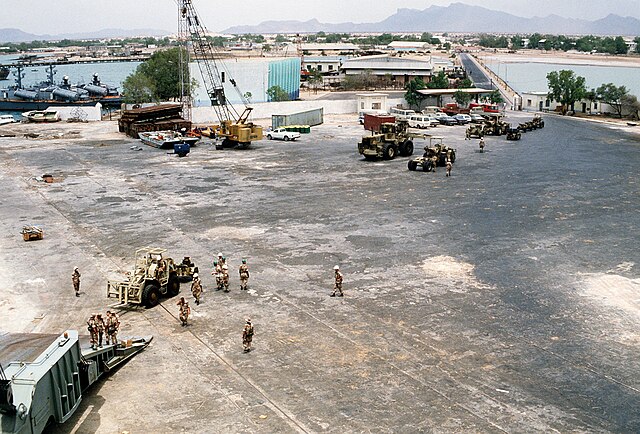
The port of Berbera in 1984
In August 1980, the USA already signed an agreement to provide Somalia with $17.4 million worth of defensive weapons and equipment in return for port facilities in Berbera and Mogadishu (Kismayu is the other main naval base), but has held back on more military aid because of continued Somali involvement in the Ogaden. The revolution in January 1991 overthrew Major-General Siad Bare. This was followed in 1992 by the three-year American and UN intervention, which failed to resolve the situation. Most of the navy has been destroyed, and the surviving vessels are not operational. The following were in service between 1960 and 1991:
-2 ex-Soviet ‘Osa IT’ class fast attack craft (missile) transferred in December 1975,
-4 Soviet ‘MOL class fast attack craft, new units transterted in 1976; nwo Without TT.
-4 ex-Soviet ‘P 6’ class fast attack craft (torpedo) transterred 1908,
-5 ex-Soviet ‘Poluchat I’ class large patrol cratt transterred 1905 (two) and 1966 (three).
-1 Ex-Soviet ‘Polnocny A’ class landing ship transferred December 1976.
-4 ex-Soviet “T 4’ class landing cratt transferred 1968-69.
-1x Swift 105ft patrol boat P202, which defected from Ethiopia in 1984.
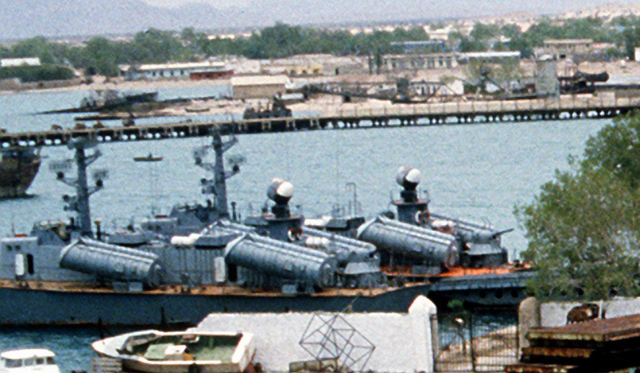
In 1990, the naval inventory most impressive assets were thus these two Soviet Osa-II missile-armed fast attack craft, along with four Soviet Mol PFT torpedo-armed fast attack craft and several patrol craft, making it a sizeable green water regional force. The single Soviet Polnocny-class landing ship was also an asset for landing on unexpected places with five tanks and 120 soldiers, plus those who could be carried by four smaller landing craft.
The Navy however was dissolved as Barre’s regime fell in 1990–91 with reports of some vessels tkaing refuge in Aden. Without proper management, personal, funds, or maintenance the navy basically dissolved. The remaining ships were pillaged and rotted in place.
2009 Re-establishement, shift to Turkey
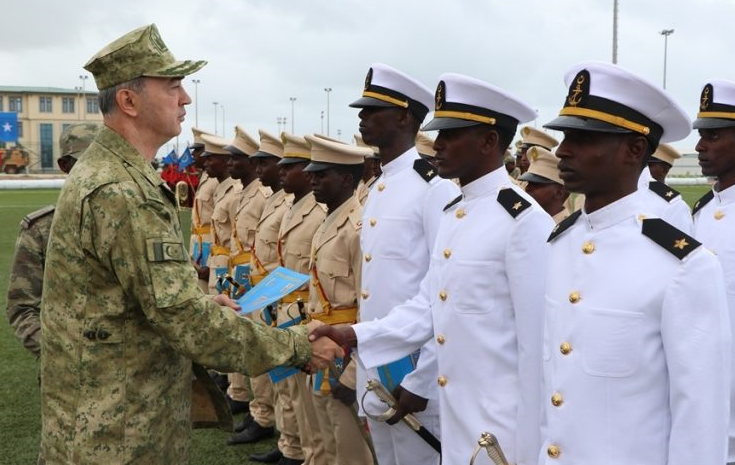
A Turkish officer visiting navy cadets at Xerada, TURKSOM 2018 program
In June 2009, the Somali navy was re-established under a new commander by the nex regime, Admiral Farah Omar Ahmed. This new start went on with 500 naval personnel training in Mogadishu, until December 2009. It was at the time homped to muster a 5000 strong navy force. Recruits were allegedly paid $60 per month at the time. A Somali delegation visited Turkey in August 2011 to acquire two search-and-rescue ships, six coast guard boats. A contract was then approved for 250 million euros, notably to quell piracy and protect its coastline. The request was suspended though under August 2011 Transitional to a Federal Government under the Puntland cooperative agreement. By 30 June 2012, as funds were lacking and there was an interest to suport a Somalu Navy in the region, the United Arab Emirates donated $1 million to enhance the country’s naval security. At least i was hope to create a coast guard and a central operations naval command planned in Mogadishu. But there was little to show for it and it is generally believed the funds disappeared in wholesale corruption.
On 23 January 2020 the Turkish Naval Forces eventually donated several patrol vessels ad well as amphibious ships as military aid to Somalia in exchange to a pledge to join the internaitonal joint task force against piracy. In July 2020 China agreed with the Somali Navy to Conduct joint naval patrols along the country’s coast.
As of today, the Somali Navy is pretty small including the following vessels:
11x ONUK MRTP Class 16 Patrol boat (From Turkey)
8x Rigid Inflatable Boat (Grand RIB type) from Ukraine.
This is, provided maintenance and training are on par, barely sufficient to deal with local piracy, taking in account the latter possible heavy armament, heavy machine guns and RPGs.
Src, News
allafrica.com/
jceeas.bdi.uni-obuda.hu
country-data.com
news.bbc.co.uk
marines.mil/ Somalia
hiiraan.com/
 Sudanese Navy
Sudanese Navy
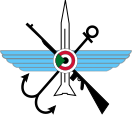 The Sudanese Armed Forces (Al-Quwwat al-Musallaha as-Sudaniyah) reached in 2011 (according to IISS 109,300 personnel and before 2023 perhaps as much as 200,000 personnel, while in In 2024, Al Jazeera reported 300,000.
The Sudanese Armed Forces (Al-Quwwat al-Musallaha as-Sudaniyah) reached in 2011 (according to IISS 109,300 personnel and before 2023 perhaps as much as 200,000 personnel, while in In 2024, Al Jazeera reported 300,000.
Creation of Sudanese army (1956)
It’s distant origin could go as far as when british Forces, long operating in the region against Mahdist forces raised six battalions of black soldiers from southern Sudan for its reconquest. Sudan was for long a dependency of Egypt, under british nominal protection. After riots in 1922 specialized units of Sudanese auxiliaries were created within the Egyptian Army (Al-Awtirah), which becalme the core in 1925 of the Sudanese army. However was not before 1956 and full independence that the combined forces of Sudan were created, leaning heavily on its land forces.
Given the fact Sudan had a limited coastal area in the north on the red sea, and few developed ports, it was not surprising the idea of a Navy was long to materialize.
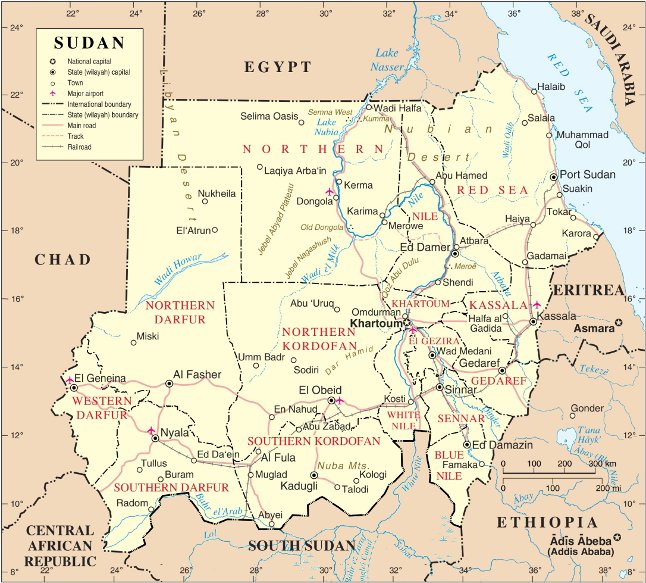
Creation of the Navy (1962)
It’s in fact a visit by Josip Broz Tito, then President of Yugoslavia in 1959 which helped building an impetus to create a Navy, just to protect its own waters to start with, police muggling and piracy as well as illegal fishing. Yugoslavia was instrumental in that effort. The Balkan Nation provided not only founding, but also setup training and supply of the Sudanese Navy. The first acquisitions came from the transfer of our coastal patrol boats. The final establishement of the Navy was done in 1962. Its missions were to protect national interest on the Red Sea coast and up to the River Nile.
In 1971, British Intel reported the Sudanese operated six patrol craft, two landing craft, three auxiliary vessels from Port Sudan, which was also developed by the Yusgoslavs into a working military base with dockyars, wharehouses and a HQ in a protected area.
The Sudan, by area the largest African state, became independent in 1956, when the Anglo-Egyptian condominium imposed after the fall of the Mahdist rule was terminated. Her subsequent history has been strongly influenced by her geography and demography, as she straddles the major natural link between the Arab world and tropical Africa, and has a population of over 26 million divided between Arab Muslims (about 70 per cent) and various black minorities. Resentment of Arab rule by the partly Christian negroes of the south led to open revolt before independence, and trouble flared again repeatedly before the southern separatists were mollified in 1970 by the promise of autonomy. The 14-year civil war ended in 1972 after 500,000 deaths and 250,000 refugees, but has since restarted and 1s currently affecting much of southern Sudan. By 1994 the warfare had left an estimated one million dead, including 300,000 who died from the war-induced famine of 1988. Some three million refugees have fled the fighting, mainly to neighbouring states.
Two periods of civilian, parliamentary government were conspicuously unsuccessful, and the Army has been almost continuously in power but presidential and legislative elections were scheduled for 1995. Foreign aid has come from the Eastern bloc (including the first major Soviets arms exported south of the Sahara) and, after the reversal of policy following the abortive Communist coup in 1971, from the West and the oil-rich Arab states. Even so the economy shrank by three per cent in 1980. Sudan’s foreign policy attempts to conciliate all her seven neighbours, but Gaddati’s Libya was suspected of plotting to topple the Sudanese leader.
Cold War Sudanese Navy
Militarily, almost all expenditure has been on the 65,000-strong army; assistance came from Egypt, with which there is a 1977 defence agreement. The navy (600 volunteers since 1980) was set up in 1962 to protect the Red Sea coast (Port Sudan), and also operates on the Nile (Khartoum). The original Yugoslav training mission left in 1972, Attempts to purchase fast attack craft (missile) from Spain in 1984, and 110ft patrol boats from the USA in 1987 came to nothing and by 1995 the navy had all but disappeared.
EL GIHAD class large patrol craft:
Class: El Gihad (PB 1, 1961), El Horritya (PB 2, 1961), El Istiglal (PB 3, 1962), El Sahab (PB 4, 1962).
Built by Mosor, Yugoslavia, as the Sudanese Navy’s first ships. All out of service by 1987.
Displacement: 86t standard; 100t full load
Dimensions: 103ft pp, 115ft oa x 16ft lin x 5ft 2in 31.4m, 35.0m x 4.9m x 1.7m
Machinery: 2 shafts, 2 MTU 12V 493 diesels, 1820bhp = 20kts. Range 1400nm at 12kts
Armament: 140mm, 1—20mm, 2—7.62mm MG
Complement: 20
Ex-Yugoslav ‘KRALJEVICA’ class large patrol craft Class:
Class: El Fasher (522), El Khartoum (523).
Transferred in 1969, Hulked in 1981.
MISCELLANEOUS:
-Ex-Iranian Coast Guard patrol craft Shetkan (128), Kadir (129), Karart (130): acquired 1975. Only Kadir and Karan were still active in the 1990s.
-Six ex-Yugoslav Type 101 MTBs (gun version with 2-40mm, 2—20mm) acquired 1970, discarded 1981.
-Two ex-Yugoslay ‘DTM 221’ class LCTs: Sobat and Dinder, transferred 1969. Both discarded 1986.
-Four ex-Iranian 40ft patrol craft Fijab, Helote, Maroub and Sarak, transferred 1974, reported stricken 1990.
In 1999, estimates of this strength culminated to 1,300 officers and men between Port Sudan and Flamingo Bay as well as Khartoum. Probably its most importants ships by that time were two 70-ton and 75-foot Kadir-class coastal patrol craft named Kadir and Karari from Iran in 1975, plus sixteen inshore patrol craft and two supply ships.
Current (potentially active) fleet as of 2025
-4 Kurmuk class patrol boats
-1 Swiftship type patrol boat
-2 ex-Yugoslav patrol boats (Kraljevica class)
-3 Sewart type patrol craft
-2 Sobat class amphibious/Transport/Supply boats
2004 estimates from the International Institute for Strategic Studies (IISS) was for 1,800 personnel but 1,300 by 2017. A new base was established at Marsa Gwayawi. In 2016–2017, the paramilitary Rapid Support Forces (RSF) made frm naval personal participating in the Yemeni Civil War and 10,000 returned to Sudan by October 2019. In 2024, the SAF and RSF are fighting each others in this civil war and the Navy is understandably neglected. It is dubious if any of the listed vessel is operational. Satellite imagery clearly shows most of them are permanently berthed.
 Syrian Navy
Syrian Navy
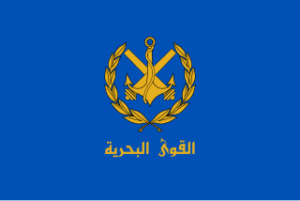 The Syrian Arab Navy was the naval branch of the Syrian Armed Forces emergung from the rise of the Ba’ath Party in Syria. As of 2024, before the fall of Assad and the Ba’athist, the navy comprised 4000 personal, with 10 missile boats, 6 patrol crafts, 7 minesweepers, 3 landing crafts and a training ship.
The Syrian Arab Navy was the naval branch of the Syrian Armed Forces emergung from the rise of the Ba’ath Party in Syria. As of 2024, before the fall of Assad and the Ba’athist, the navy comprised 4000 personal, with 10 missile boats, 6 patrol crafts, 7 minesweepers, 3 landing crafts and a training ship.
History
The country as a reminder, was first established in 1920 as the Arab Kingdom of Syria under King Faisal I succeeding to the Ottoman Empire in 1917. Howver following the Picot-Sykes agreements, was created the Mandate for Syria-Lebanon. It functioned as one of France’s colonies. It was dissolved under british pressure in 1946, but the existing elites of the Mandate continued to rule the country and after the Arab–Israeli War, this elited, discredited, fell and was replaced by a serie of military dictatorships, Husni al-Za’im in 1949, Adib Shishakli in 1953 enabling a middle class participating in Syrian politics and in that environment the ideology of Ba’athism started to develop, ultimately gaining popular support and power after a coup in 1963.
On 29 August 1950, already, the Syrian Navy was established, purchasing a few vessels from France, crewed by army soldiers sent to French naval academies. It was tasked to defend the coasts territorial waters and included a corps of Syrian Marines. The Syrian Navy amounted by 4,000 sailors, 2,500 reservists, 1,500 marines before its collapse in 2024. After the 1963 coup the Navy leaned towards USSR, which provided the bulk of the fleet, for a rapid increase.
Syria long maintained a small naval force equipped mainly with Soviet-supplied ships and equipment indeed and in 1980 the USSR signed a treaty of friendship and co-operation formalising links with Syria going back to 1954. Defence programmes concentrated on the army and air force, partly perhaps because of the navy’s poor showing in the October 1973 Arab-Israeli War and its subsequent inability to interfere with Israeli naval operations against the Lebanese coast; the Soviet Navy’s massive and long standing presence at Syrian ports after Egypt’s volte-face in 1976 was also a factor. Consequently naval equipment did not feature prominently among acquisitions of modern defence material, which has left the navy with a rather modest force of negligible fighting value. Bases are at Latakia, Baniyas, Tartus (once heavily used by the Soviet Mediterranean Fleet) and Al-Mina-alBayda.
In the 1990s the Syrian Navy remains of secondary importance in the country’s military strategy. Nevertheless, in the 1980s she received several warships from the Soviet Union, including three submarines of the ‘Romeo’ type. There are persistent rumours that the acquisition of three modern ‘Kilo’ type submarines 1s planned but up to 1992 these have not materialised, and the current situation in the former Soviet Union makes the subsidised transfer of such boats extremely unlikely. ‘The naval air arm has grown slightly over the past ten years and now includes twelve to twenty Mil Mi-14 and six to ten Ka 25 ‘Hormone’ helicopters. Coast defence batteries are equipped with vehiclemounted Soviet anti-ship missiles of SS-C-1b Shaddock (land-based version of SS-N-3 missile) and SS-C-3 Styx (land-based version of the widely used SS-N-2 missile).
Cold War Actions
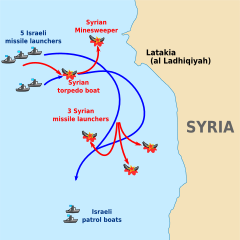 Under Ba’athist Syria, the 6–7 October 1973 Yom Kippur War naval battle with Israeli ships off Latakia became the first battle in history in which both sides used sea-to-sea missile boats. The Israeli Navy had five missile boats sailing from Haifa towards the Syrian fleet off the coast of Latakia. The IDF spotted and destroyed a small reconnaissance boat, then sank a naval minesweeper, and fell on the Syrian fleet, the strongest and most modern at the time in the region with three missile boats (two Komar, one Osa I, a K-123 MTB and a T43-class minesweeper. The Syrian detected the Israeli via their shore radar and launched their missiles at a longer range. But the IDF fleet actioned their home-grown anti-missile system, succeeding completely at sending the incoming missiles away. As a result all five Syrian ships were sunk in the counter-strike by the IDF’s four Israeli Navy Sa’ar 3-class and one Sa’ar 4-class. The Israelis did not suffer any loss.
Under Ba’athist Syria, the 6–7 October 1973 Yom Kippur War naval battle with Israeli ships off Latakia became the first battle in history in which both sides used sea-to-sea missile boats. The Israeli Navy had five missile boats sailing from Haifa towards the Syrian fleet off the coast of Latakia. The IDF spotted and destroyed a small reconnaissance boat, then sank a naval minesweeper, and fell on the Syrian fleet, the strongest and most modern at the time in the region with three missile boats (two Komar, one Osa I, a K-123 MTB and a T43-class minesweeper. The Syrian detected the Israeli via their shore radar and launched their missiles at a longer range. But the IDF fleet actioned their home-grown anti-missile system, succeeding completely at sending the incoming missiles away. As a result all five Syrian ships were sunk in the counter-strike by the IDF’s four Israeli Navy Sa’ar 3-class and one Sa’ar 4-class. The Israelis did not suffer any loss.
After losing three FACs on 7 October, the Syrian Navy refused to engage the Israeli Navy in open battle at sea but made short forays from harbor mouths to launch missiles, with the presumed defence from the coastal artillery. To provoke them into open combat, the flotilla flagship skipper, Michael Barkai, came with seven missile boats to launch a night attack with Oil tanks as secondary targets. Her splitted his force with two Sa’ar 4 on Banias and two on Mina Al-Baida, remaining three Sa’ar 3 (Hetz, Herev, Haifa) on Latakia. They also turn on their ECM and approached at 40 knots. Syrian radar operators were confused, seeing 17 ships combined at 12-15 nm the coast and dispatched two missile boats from Banias, two from Latakia in interception.
On Latakia, the Israelis observed merchant ships anchored off the harbor for protection. They fired anyway and the Gabriel missiles sank two merchant ships, one Japanese and one Greek, causing widespread protestations. INS Hetz spotted a passing by Styx missile overhead, while Hetz shot down another. The battle lasted for two hours, the Israeli boats zigzagging to evade missiles and coastal artillery, while shooting at the Syrian FACs and oil tanks, but failed to ignite these and claimed one Osa, one Komar. On Banias the Oil tanks were burned out however.
There were later incidents: On 29 August 1989, a Syrian missile boat sank the Maltese tanker Sunshield, entering the prohibited zone.
The Syrian Civil War started on 15 March 2011 (for most historians) and lasted until late 2024 so for 13 years, 11 months, 3 weeks and 6 days. Completely devastating the country and creating a mass migration to Europe. Russian and Iran came to help the regime eraly on, which was armed and provided active air support. Since the rebels were supported by the west, this led to many close call incidents, and the conflict nearly took the aspect of a “cold proxy war”.
Opposition activists claimed the Syrian Navy supported a military attack against rebels in Latakia, which was denied by the government. This civil war ultimately signified the fall of the regime and destruction by the IDF of training ships in Tartus. Until then, the IDF took no part on either sides. The move was to prevent a possible use of the ships by Iranian-backed insurgents. The Russian fleet also had to leave its main base on the region ending a decades-long long partnership.
Prominent Ship classes
 Ex-Soviet ‘PETYA I class frigates (Project 159)
Ex-Soviet ‘PETYA I class frigates (Project 159)
Two, Al Hirasa (14) and 12, were transferred in 1975-76. Built 1963, Extant 1995.
 Ex-Soviet ‘NATYA’ class corvette (Project 266M)
Ex-Soviet ‘NATYA’ class corvette (Project 266M)
One ‘Natya’ class minesweeper converted to a corvette with all sweeping gear removed was acquired from the Soviet Navy on 26 January 1985. She was armed only with two 30mm AK 230 automatic guns and two old twin 25mm mounts.
 Ex-Soviet ‘ROMEO’ class submarines (Project 633)
Ex-Soviet ‘ROMEO’ class submarines (Project 633)

Three ‘Romeo’ class submarines were transferred in the 1980s. The first two in November 1985 and the third boat in December 1986. These boats are officially classed in the Soviet Navy as ‘Project 633’ type. An older submarine of the ‘Whiskey’ class (Project 613 type) was transferred in November 1986 to serve as battery-charging hulk to support these boats. It was alleged in some sources that three Whiskey class were also transferred S-167, S-171, and S-183 according to RussiaShips.info. No date given for their decommission and no crossed sources made its doubtful at best. These three Romeo class originally named in 1961 S-1, S-53, S-101 were decommissioned in the mid 1990s after years of neglect, sold for scrap in 1996.
 Ex-Soviet ‘POLNOCNY B’ class medium landing ships (Project 771)
Ex-Soviet ‘POLNOCNY B’ class medium landing ships (Project 771)
The first ‘Polnocny B’ class medium landing shup » as traniferred from USSR on 15 January 1984 and two more in February 1985. Bult in the late 1900s by Polish shipyard Stocznia Polnocna, Gdansk, as were all ‘Polnacyy’ claws ships for the Soviet Navy.
 Ex-Soviet ‘KOMAR’ class fast attack craft (missile) (Project 183R)
Ex-Soviet ‘KOMAR’ class fast attack craft (missile) (Project 183R)
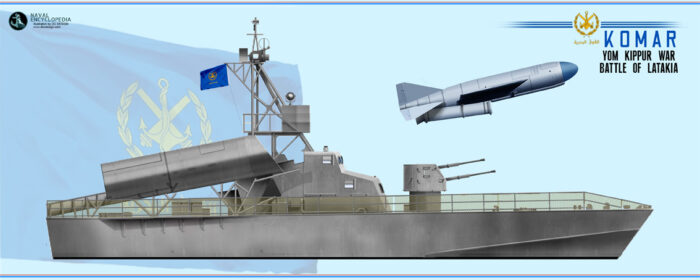
Nine transferred from the USSR in 1963-66. Pennant nos 41-49. Three sunk during the October 1973 War. All laid up 1985-86 and five recurned to service in the early 1990s.
 Ex-Soviet ‘OSA I’ class fast attack craft (missile)
Ex-Soviet ‘OSA I’ class fast attack craft (missile)
Project 205 under Soviet designation, eight transferred in the late 1960s. Two sunk in the October 1973 War, later replaced by USSR. Pennant nos 21-26. Four (23-26) extant 2024.
 Ex-Soviet ‘OSA II’ class fast attack craft (missile)
Ex-Soviet ‘OSA II’ class fast attack craft (missile)
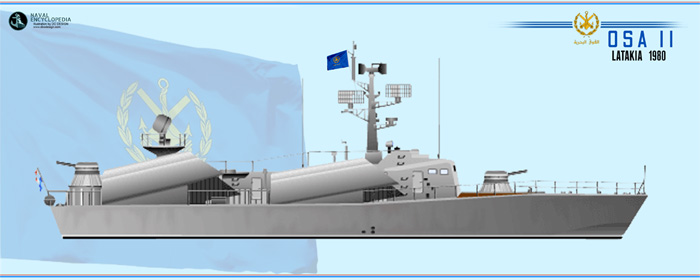
Project 205M, six launched in early 1970s, transferred, two in 1978, two in October 1979 and two in November 1979. Two in 1982, two in May 1984 and two in 1985. Four stricken by 1987. Others extant 2000s.
 Ex-Soviet ‘P 4° class fast attack craft (torpedo)
Ex-Soviet ‘P 4° class fast attack craft (torpedo)
Project 123, transferred seventeen during 1957-60: three sunk in October 1973 War, four cransferred to Egypt in 1970. All stricken 1985-86.
 Ex-Soviet ‘P 6’ class fast attack craft (torpedo)
Ex-Soviet ‘P 6’ class fast attack craft (torpedo)
One transferred from USSR. Stricken.
 Ex-French CH 5 type submarine chasers
Ex-French CH 5 type submarine chasers
Class: Akba Ben Naseh (ex-CH 10), Al Harisst (ex-CH 19, ex-RA 1, ex-CH 19), Tareh Ben (ex-CH 13)
Three built in 1938-41 by AC de France and AC Seine Maritime, were transferred in 1949 (1952?) to form the nucleus of the Syrian Navy. Rebuilt by FC de la Méditerranée in 1955-56 when funnels removed. CH 15 was cap. tured by Germans and retroceded incomplete in 1945. All stricken 1984.
 Ex-Soviet ‘ZHUK’ class patrol craft (Project 199)
Ex-Soviet ‘ZHUK’ class patrol craft (Project 199)
Three were delivered by the USSR in December 1983, three in December 1984 and the last three in January 1985. Extant 2000s.
 Ex-Soviet ‘T 43’ class ocean minesweepers
Ex-Soviet ‘T 43’ class ocean minesweepers
Class: Yarmouk, Hittine
2x Project 254 Transferred in 1962. Hittine sunk in October 1973 War off Latakia in the first naval action.
 Ex-Soviet ‘VANYA’ class coastal minesweepers
Ex-Soviet ‘VANYA’ class coastal minesweepers
2x Project 257D transferred from USSR in December 1972. Names Kadisia (775) and Yarmuk (776). Extant 1995. There is also an ex-Soviet Nyryat type ship used as a divers’ base ship.
 Ex-Soviet ‘SONYA’ class coastal minesweeper
Ex-Soviet ‘SONYA’ class coastal minesweeper
One standard Project 126S wooden-hulled (GRP-sheated) ‘Sonya’ class coastal minesweeper was transferred to Syria in January 1986. Extant 2024.
 Ex-Soviet ‘YEVGENYA’ class inshore minesweepers
Ex-Soviet ‘YEVGENYA’ class inshore minesweepers
First of these GRP construction inshore minesweepers was transferred from the USSR in 1978, the second in 1981, third and fourth in 1985 and fifth in 986. Fitted with television minehunting system good for depths up to 30m. Extant 2024.
Organization
Latakia is the regional command, hosting the fleet. Other assets are based in Baniyas, and Minet el-Beida as well as Tartus. Still compared to the army and air force the Navy is the smallest arm. After the collapse of Ba’athist Syria in 2024, military assets and infrastructure were captured. The new coalition tries since to reconstitute previous state institutions under new leadership organization and direction, resulting in all loyal heads of staff being removed and replaced, so was the Navy. By the way, 29 August is considered an annual holiday, chosen because it was the anniversary of the naval Battle of the Masts in 654 AD.
The Syrian Navy traditionally had its HQ in Damascus, but main operating base at Latakia. Baniyas, Tartus and Minet el-Beida are regional bases with smaller assets, mainly patrollers, albeit Tartus was well provided by the Russians and mainly used by them, with a permamnent presence for decades.
Latakia being the largest and most active port has 23 berths, full overhaul and basins for repairs and construction (small ships), warehouses, arsenals and fuel installations as well as administrative buildings. This was the home for the Syrian OSA (and earlier Komar) fast missile boats, main assets of the fleet since submarines did not survived them.
Al-Bayda port is in Baniyas city, built specifically as military port. Training centers are installed here for naval officers and Marines, with transport ships also located here.
Tartus was the main base for the two navy frigates, three amphibious ships and minesweepers with several drydocks and installations. The port 22 A dock itself had an area of 3 million square meters. With the the Russian Air Force arrival and modifications of the Bassel Al-Assad International Airport in 2015, Syrian Naval Aviation helicopters were relocated to Istamo at a dedicated new helicopter base established at the arms depot with funds and technical help from Russia. The Israeli attacks against in 2024 rampaged these.
Syrian Marine
The Syrian Marines comprised 1,500 conscripts (again, disbanded 2024. Main role was to protect the three military naval bases, making for three units. They also have three amphibious assault ships (Polocny types) capable 100 soldiers and five tanks. The Syrian Marine Corps compared to its foreign counterparts is however of a low level training, not spec ops. Armament is stock from the army. These are ordinary soldiers without amphibious assault experience. In 1981 still, the USSR in fact never asked for the Syrian marines to participate in Exercise Zapad-81, largest military training exercise and largest amphibious landing operation in the history of USSR. The Marines were used as regular infantry at the 1973 Yom Kippur War and 1980s Lebanon Civil War. They were sent in the first Gulf War as part of the Coalition, but at that stage this was a force of 17,000 soldiers.
Coastal Defense
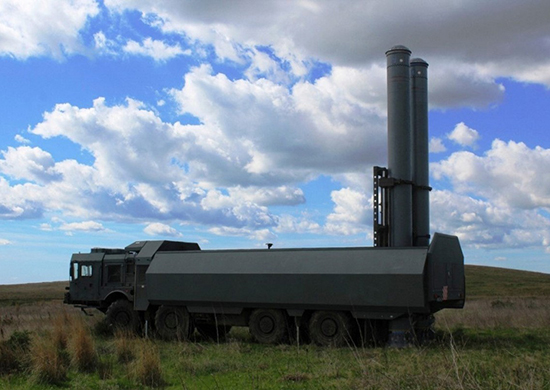
K-300P Bastion-P system. These missiles features a 120–300 km (75–186 mi; 65–162 nmi) range and ballistic trajectories. They were used on land targets in the civil war, so it’s even unknown if there are any spares today.
The Syrian Arab Navy kept its Soviet legacy assets until 2006 to protect 150-km of Coast. But in 2006, Russia and Iran started provided Sunni Syria with advanced weaponry, heavy, short-range land-sea missiles, which cost far less than boats. The Syrian Coastal Defense Forces under command of the Syrian Arab Navy since 1984 consists of brigades of infantry monitoring coastal sectors supported by two artillery battalions armed with 18x 130 mm M-46 guns. Specialists teams manned at all times batteries of old SSNs “Styx”, “Sepal”, Chinese YJ-83 and P-800 “Oniks” missiles. The most potent was a battery of K-300P Bastion-P coastal defense missile system.
The Styx anti-ship missiles are the close-range layer. Sepal missiles made foe the medium range. Their existence was attested in late 2011.
The Yakhont missiles were purchased by late 2011 to provided the long-range defense and strategic advantage in the Eastern Mediterranean. The fourth type are from Iran, local versions of the Chinese C-802 anti-ship missile. They are medium range.
Before the fall of Damascus in 2024, two Amur-1650 class submarines were expected from Russia, after discissions which started in 2015 with Syrian officials n Moscow to discuss a new bilateral military and technical cooperation. Replacing the now deactivated old Romeo class. The new replacement subs discussed were brand new Project-677 (Lada-class) diesel subs, with a new anti-sonar coating, extended cruising range, advanced weaponry. They were designated replacements for the cold war Kilo class. Future will tell if Syria funds new submarines.
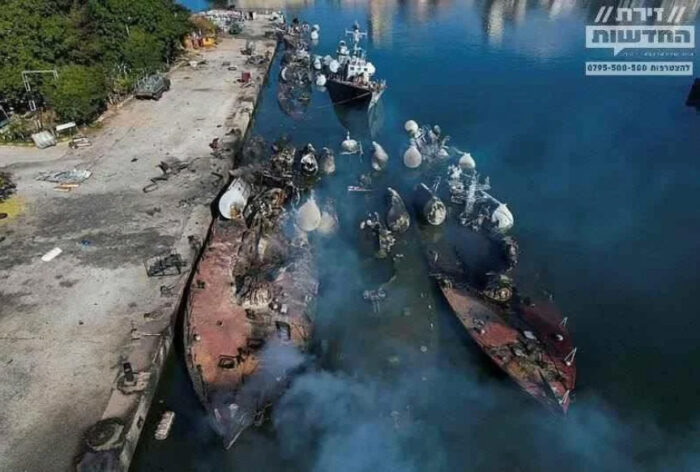
Syrian OSA Boats destroyed at Latakia in December 2024 (reddit).
Shortly after the collapse of the Ba’athist regime on December 9, 2024, the IAF launched raised to destroy methodically the Syrian Fleet, all ships being at anchors and free from crews. The latter had been engaged with Loyalist forces, captured, or defected. Israel saw this vacuum of power as an opportinity to deny any possible use by Islamist extrermists in the future. All six Osa-class missile boats were destroyed in Latakia among others. The levela of damage of other ships from satellite image is unclear.
Russian Connection: The Tartus Case
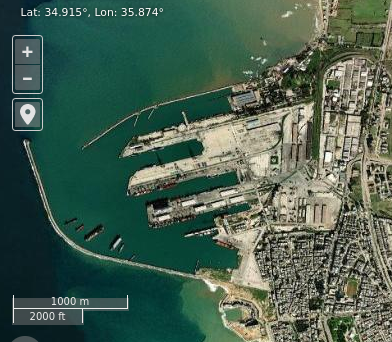 Tartus was developed as a main naval base in the Soviet-era, able to maintain, repair and resupply ot only the Syrian forces, but also all the ships in teh black sea fleet inventory, as a useful, then indispendible relay for Mediterranean operations. It was developed with Soviet assistance after the 1971 agreement. Russia forgave Syria t3/4 of the $13.4 billion debt for its construciton in exchange of other contracts and a local haven for the Soviet fleet. The base was further developed and enlarged post-cold war, so that Russia could strengthen its naval presence.
Tartus was developed as a main naval base in the Soviet-era, able to maintain, repair and resupply ot only the Syrian forces, but also all the ships in teh black sea fleet inventory, as a useful, then indispendible relay for Mediterranean operations. It was developed with Soviet assistance after the 1971 agreement. Russia forgave Syria t3/4 of the $13.4 billion debt for its construciton in exchange of other contracts and a local haven for the Soviet fleet. The base was further developed and enlarged post-cold war, so that Russia could strengthen its naval presence.
After the 2008 Russo-Georgian War and plans to deploy a US missile defense shield in Poland, President Assad agreed to make it the Russian permanent Middle East base, deploying nuclear-armed warships. Modernization was ongoing from 2009, dredged and managed in order to host the largest ships in Russian inventory.
The fall of the Assad regime saw the agreement cancelled by the new Syrian transitional government. The withdrawal from Syria through Tartus saw a convoy from the Khmeimim Air Base denied entry by Syrian troops on 10 February 2025. Negotiations were ongoing, in a context where Moscow remained in a weaker bargaining position, being an open ally of Assad and crucial support.
The Syrian Navy (as of 2024)
-10 Osa I/Osa II Missile FACS from the Soviet Union, confirmed destroyed by IDF airstrikes at Latakia 2024.
-6 Tir II (IPS 18) FAC (Iranian built, copies of North Korean vessels.
-8 Zhuk class Patrol craft, Soviet 23.8 m inshore vessels.
-2 Raptor class Patrol craft (Russian 16.9 m inshore vessels, 2019).
-6 MIG-S-1800 Patrol craft Iranian catamaran from Maritime Industries Group.
-1 Sonya class Minesweeper (ex-Soviet)
-5 Yevgenya class Minesweeper (ex-Soviet)
-1 Natya class Minesweeper (ex-Soviet)
-3 Polnocny B Landing ship tank, acquired from Poland.
-1 Training ship: Al Assad (Polish) 3,500-ton, cadet TS of the Syrian naval academy.
More: https://en.wikipedia.org/wiki/Syrian_Navy
Coastal Defence assets as of 2024:
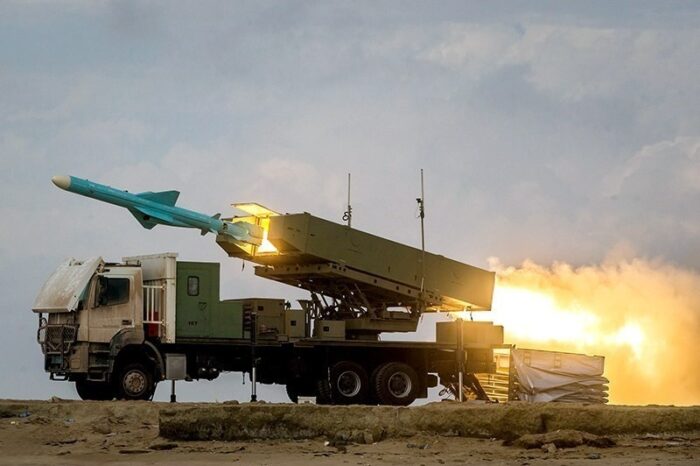
Noor SSN system, firing the Iranian variant of the C-802.
-8?x C-802 Anti-ship cruise missile (CSS-N-8 Saccade)
-10x Noor Mobile Anti-ship cruise missile (Iran, delivered 2009-2010).
-4x K-300P Bastion-P/P-800 Yakhont Mobile AS/SAM, Russia (SS-C-5 Stooge).
-4x P-5 Pyatyorka Cruise missile (soviet legacy) (SS-C-1 Sepal).
-6x P-15M/P-22 Styx Anti-ship missile (Soviet legacy) (SS-C-3 Styx).
Naval Air assets as of 2024:
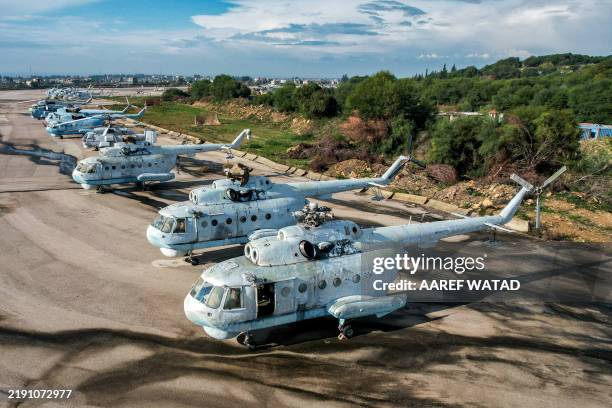
-18 Mil Mi-14 amphibious SAR/AS/ASW helicopters. Transferred 1980s, largest user in the middle east.
-4 Kamov Ka-28 Helix-A Anti-submarine helicopter, same. Status unknown.
 Thai Navy
Thai Navy

 The Kingdom of Thailand has many difficult internal and external defence problems to resolve with limited means. She has nearly 700 miles of navigable waterways, increased by half in the monsoon. Up to 1939 Thailand was known in the English-speaking world as Siam. The existence of an anti-Japanese underground movement won Thailand moderate treatment at the end of the war, though she was forced to return the territories acquired in 1941 and 1943 to French and British control. The Royal Thai Navy was left unmolested and the ships served the new Thai state for many years. One coast defence ship, Sri Ayuthia, was lost during the 1951 rebellion. Manpower rose from 10,000 to 18,000 in the 1950s.
The Kingdom of Thailand has many difficult internal and external defence problems to resolve with limited means. She has nearly 700 miles of navigable waterways, increased by half in the monsoon. Up to 1939 Thailand was known in the English-speaking world as Siam. The existence of an anti-Japanese underground movement won Thailand moderate treatment at the end of the war, though she was forced to return the territories acquired in 1941 and 1943 to French and British control. The Royal Thai Navy was left unmolested and the ships served the new Thai state for many years. One coast defence ship, Sri Ayuthia, was lost during the 1951 rebellion. Manpower rose from 10,000 to 18,000 in the 1950s.
 Tunisian Navy
Tunisian Navy
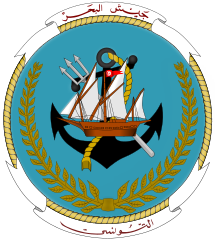 The Tunisian Navy today was established in 1959, as the “Marine nationale tunisienne” initially with French assistance, advisory personnel and patrol vessels. On 22 October 1973 she received a transfer from the USN, the destroyer USS Thomas J. Gary (DE-326) based in Bizerte as Pdt. Bourguiba (discarded 1992). By the mid-1980s two ex-US coastal minesweepers, and fast-attack and patrol craft were acquired wiht the most important acquisitions being three La Combattante III type missile FAC (with Exocet). Its early tasks were to combat contraband smuggling, illegal immigration and unauthorized emigration plus the usual coastal security activities and fishery protection. This became a joint effort with the Ministry of Interior, customs agents and immigration personnel.
The Tunisian Navy today was established in 1959, as the “Marine nationale tunisienne” initially with French assistance, advisory personnel and patrol vessels. On 22 October 1973 she received a transfer from the USN, the destroyer USS Thomas J. Gary (DE-326) based in Bizerte as Pdt. Bourguiba (discarded 1992). By the mid-1980s two ex-US coastal minesweepers, and fast-attack and patrol craft were acquired wiht the most important acquisitions being three La Combattante III type missile FAC (with Exocet). Its early tasks were to combat contraband smuggling, illegal immigration and unauthorized emigration plus the usual coastal security activities and fishery protection. This became a joint effort with the Ministry of Interior, customs agents and immigration personnel.
Bases are in Bizerte, Kelibia, La Goulette, and Sfax. The next ships to be discarded were six ex-East German Kondor-II class minsweepers (635 tons) with 3 twin 25mm Guns, not listed operational from 2013. In addition to Exocets the Navy also had Nord SS-12M SSM.
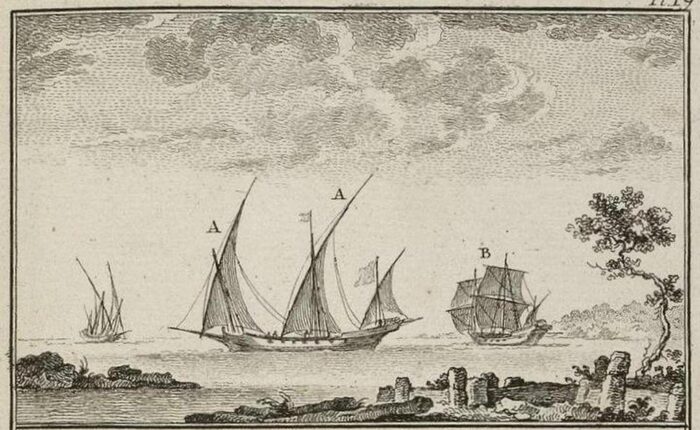
Typical Tunisian Xebec, well adapted to Corsair actions. This was completed by rowed Galiots.
The ancient Tunisian Navy (pre-colonial) was the 1815 Beylik of Tunis corsair navy. It used to attack European shipping, raid coastal towns on the northern shores of the Mediterranean and defend against incursions from Algiers or Tripoli. After 1815 the creation of a modern navy was difficult but it saw action both in the Greek War of Independence and the Crimean War under supervision of the Turkish Ottoman Navy. It ceased to exist with the 1881 French invasion of Tunisia.

At the time of Navarino the Tunisian Navy aligned one 44-gun frigate, two 24-gun corvettes, two 22-gun corvettes, one 20-gun corvette, one 16-gun brig, one 10-gun schooner, two large gunboats, twelve smaller single-gun gunboats, and two small single-gun cutters.
The Tunisian Navy in the Cold War
Tunisia became independent from French protection in 1956, and has managed to keep her reputation of being the most peaceful and civilised of North African countries. Economic development has been generally successful, but tension caused by the widening disparity between rich and poor led to serious riots in 1979, and further strains have resulted from the growth in Islamic fundamentalism.
External policies have been generally neutralist but pro-Western, although relations with France in the early years of independence were sometimes very bad. In 1961 French paratroops caused 1000 casualties among Tunisian demonstrators protesting at France’s retention of the Bizerta naval base, and matters again came to a head in 1964 on Tunisian nationalisation of foreign land holdings. It is relations with Libya that have caused concern, particularly after the 1980 Gafsa incident, and Tunisia now relies on France for military protection against her ambitious neighbour.
The military budget, expressed both absolutely and as a percentage of GNP, is much smaller than those of Tunisia’s neighbours, so her armed forces were correspondingly weaker and more poorly equipped in the 1990s. The navy, subordinate to the Tunisian National Army, comprises a number of patrol craft headed by an obsolete ex-US destroyer escort, and is no more than a coast defence force. This does not matter while France is prepared to send warships into Tunisian territorial waters whenever needed.
Tunisia has nine naval bases and twenty-two secondary ports along her 700-mile shore. The Soviet Mediterranean Fleet made heavy use of Menzel-Bourguiba for repair work from 1977 and the expulsion from Egypt but gained no permanent facilities. There seems little chance of significant Tunisian naval expansion in the near future, although some modernisation may be possible, perhaps with US assistance. The personnel, totalling 4,600 one-year conscripts in 1995 (2,000 in 1974) with 3,000 reservists, is considered fairly well trained and educated, and loyal to the regime, but likely to be unaggressive in action. Today,
Ships list
 E7 INDAKH (ex-President Orange Bourguiba)
E7 INDAKH (ex-President Orange Bourguiba)
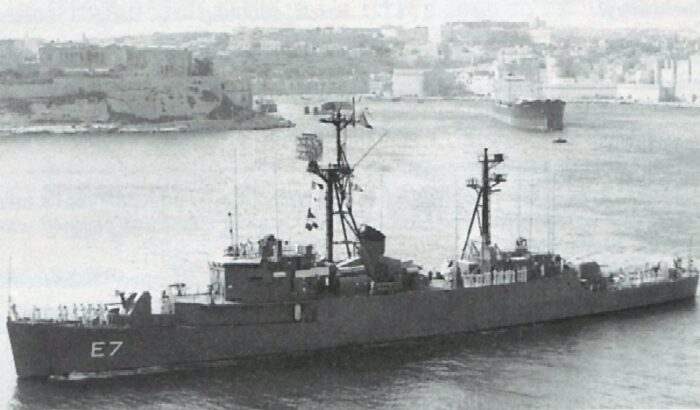
Thus frigate was the largest acquisition of the Tunisian navy, the Ex-US SAVAGE class radar-picket, cold war conversion of WW2 destroyer escort USS Thomas F Gary. She was built originally at Consolidated on 27 October 1973 See notes as an Ex-US Edsall class DE launched on 21.8.43. She was converted to a Savage class radarpicket with SPS-10 and SPS-29 radars in 1958 and from DE 326, became DER 326. She was transferred to Tunisia under MDAP and instantly became th e Tunisian Navy’s flagship in 1973. Her Hedgehog was replaced by six 12.75in Mk 32 ASW torpedo tubes (2 x 3). She suffered a major fire on 16 April 1992 and afetr inspection, repairs were deemed uneconomical. She was had been decommissioned, and scrapped in 1993 but her mast was preserved at Bizerte naval base to raise the flag for ceremonies.
 Jugurtha class OPVs (2016)
Jugurtha class OPVs (2016)
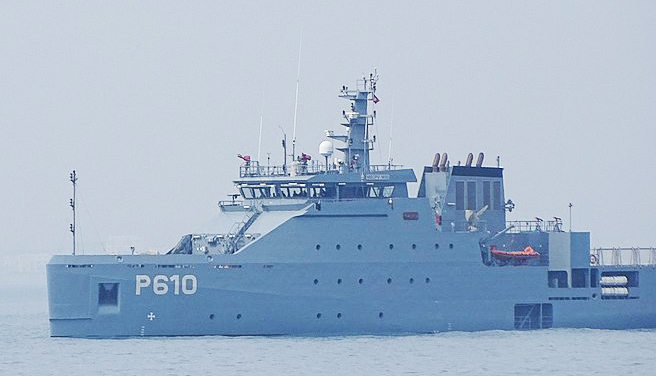
Class: Jugurtha (P610), Siphax (P611), Hannon (P612), Sophonisbe (P613). Built at Damen, Galati, Romania from 2016-2019.
Damen MSOPV 1400 design multi-Service Offshore Patrol Vessel of 1400t. Sea Axe bow, helicopter deck may with 9m RHIB. Small hangar for UAVs (see later).
 E71 DESTOUR
E71 DESTOUR
Thus small frigate was the Ex-French 1940s CHAMOIS class corvette Chevreuil, acquired and renamed on 13.10.59 when commissioned E71 DESTOUR. She had been originally built at the Arsenal de Lorient. Hulked in 1972.
 Amilcar class FAC (1977)
Amilcar class FAC (1977)
Ex-Chinese “SHANGHAI I” class fast attack craft (gun) acquired in 1977: N°305 Gafsa, N°306 Amilcar (P 305-306). Re-engined in Bizerta 1984. In service 1995, discarded since. These Modified Hazhui\Shanghai-II class (128 ft,30 knots, 4x37mm Guns, 4x25mm Guns) are still listed in reserve.
 Bizerta class LPC
Bizerta class LPC
French P 48 class large patrol craft (missile):
-P 301 BIZERTA (Ch. Franco Belges 20,11.69)
-P 302 EL. HORRIA (ex-Laberte) (SECN 12.2.70)
(P 304 MONASTIR (SFUN 25.01.74)
These ships were laid down 5 June 1969, 20 November 1969 and 1 Pebruary 1974, completed 10 July 1970, October 1970 and 25 March 1975.
Thes ships are armed with four 37mm Guns but their initial eight SS-12M SSMs were removed as obsolete.
 La Galite class FAC(M)
La Galite class FAC(M)
Class: La Galite (P 501, 27.2.85), Tunis (P 502, 28.3.85), Carthage (P 503, 29.4.85)
French LA COMBATTANTE III type fast attack craft , missile) Ordered 1981 from CMN, Cherbourg. Similar craft in service with Israel, Greece and South Africa.
Specs:
Displacement: 395t standard; 425t full load
Dimensions: 186ft 4in x 26ft 1 lin x 8ft 2in 56.8m x 8.2m x 2.5m
Machinery: 4 shafts, 4 MTU diesels, 19,300bhp = 38.5kts
Armament: 8 MM40 Exocet SSM (2 x 4), 1-76mm OTO Melara, 240mm Breda (1 x 2), 4-30mm Oerlikon (2 x 2)
Sensors: Radar Thomson Triton-S, Laster
Complement: 35
 Sakiet Sidi Youssef
Sakiet Sidi Youssef
French LE FOUGEUX submarine chaser Built as P9 by A C Dubigeon in Nantes, under US offshore order. She served as the West German ASW trials vessel UW 12 from 12 March 1967 to 15 September 1967. Bought by Tunisia 16 June 1970 after transfer in December 1969. Hedgehog and all four DCT removed mid-1970s and renamed Sakiet Sidi Youssef. Discarded in 1988.
 Hannon class
Hannon class
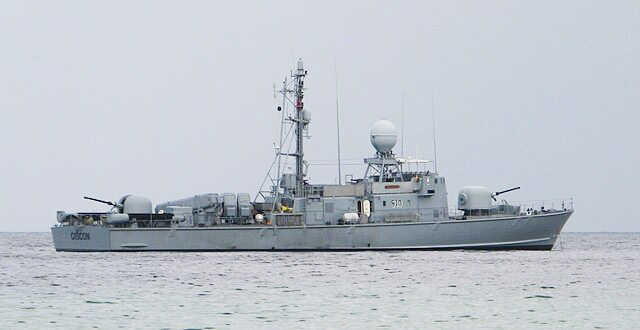
P510 Giscon
Six Type-143 Lurssen Albatros class were delivered after 1995 (2x76mm Gun, Mine Laying Capability): P506 Hannon is possibly out of service after the delivery of third MSOPV-1400 named Hannon. Note: Unusually among Muslim Navies, Tunisian vessels are named after ancient Carthaginian generals and statesmen.
 TAZARKA class LPC
TAZARKA class LPC
Class (no): Tazarka (P 205), Menzel Bourguiba (P 206)
Ordered from Vosper Thornycroft 9 September 1975 and launched 19 July 1976 and in service since 27 October 1977. Original armament planned was 140mm.
Specs:
Displacement: 100t standard; 120t full load
Dimensions: 103ft oa x 19ft 6in x 5ft 6in 31.4m x 5.9m x 1.7m
Machinery: 2 shafts, 2 MTU diesels, 4000bhp. Range 1500nm at 14kts
Armament: 2-20mm Sensor: Radar Decca 916
Complement: 24
 Hannibal class CPC
Hannibal class CPC
Class: Hannibal (ex-Coquelicot, M 673), Sousse (ex-Marjolaine, M 640, ex-Aconit).
US ADJUTANT class coastal minesweepers. Built for France in US shipyards under MDAP; Hanmibal transferred in 1973, Sousse in July 1977. Both used as patrol craft and for fishery protection, minesweeping gear having been removed. Both discarded 1988.
 MISCELLANEOUS
MISCELLANEOUS
-Four French 32-metre coastal patrol craft (60t, 28kts, 2-20mm, 17 men): Istikal (P 201, ex-French VC 11 transferred Mar 1959); Joumbounra (P 202, ex-French P 761 transferred Jan 1961), Al Fala (P 203, in service Nov 1963) and Remada (P 204, in service Jul 1967).
-Eight French 25-metre coastal patrol craft (38t, 23kts, 1-20mm, 10 men): V 101 to V 106 in service 1961-63, V 107 and V 108 disarmed and transferred to Fisheries Administration in 1971. V 108 lost 7 July 1989.
-2x 65 Foot (20.3M) Full Cabin Inboard Patrol Boats (dual 1600 hp MTU 10V2000 diesels, shock mitigating seating, climate control, navigation package, 40 knots). From U.S. SAFE Boats, supplied 2015 by Pacific Power Group..
-1x Ch.Navals De Lestrel 31.5m class (104 ft, 30 knots, 2x20mm Guns).
-3x Ch.Navals De Lestrel 25m (83 ft, 23 knots, 1x20mm).
-5x Bremse class ex-coastal minehunters of Volksmarine (22.6m, 2x 14.5mm HMGs): Ras el Blad, Ras Ajdir, Ras Edrak, Ras Manoura, Ras Enghela, Ras Ifrikia.
-4x Gabes class (12.9m, 2×12.7mm HMGs).
-4x Rodman-38 class (11.6m).
-2x Vosper Thornycroft 103 ft class (27 knots, 2x20mm Guns).
-6x Joumhouria class 2012 (20-meter long) PCs. Built CN Vittoria, Adria, Italy: P202-204, 208-210.
-3x Utique class (1994) Utique, Jerba, Kuriat P207-209 CPVs. Built in China, Shortened type 062-I with larger superstructure and lighter armament.
-3x Istiklal (2012) in construction SCIN, Sfax: P201, 211, 212 (26.5 meter Long PC).
-1x 52mt patrol vessel in construction. More updates to come.
-1x LCT-3 class LCT.
-1x Robert Conard class 63.7m Survey vessel (NHO Salammbo).
-1x Wilkes class (T-AGS-33) survey ship (NRF Khaireddine).
-2x El Jem class training ships (ex A 5378 Aragosta, A 5381 Polipo Italian Navy on 17 July 2002).
-1x Simeto class Tanker (Ain Zaghouin-ex A 5375, delivered by the Italian Navy on 10.7.2003).
-1x White Sumac 40.5m class.
-1x diver training vessel Zarzis.
-No naval aviation but Boeing Insitu MQ-27 ScanEagle surveillance drones.
Sources
navypedia.org/
pacificpowergroup.com safe-boats-for-the-tunisian-navy
defensenews.com/ patrol-boat-delivered-to-tunisia
history.navy.mil thomas_j_gary.htm
business-review.eu/ damens-galati-shipyard tunisian-navy OPV
en.wikipedia.org Tunisian_Armed_Forces
Tunisian_navy 1705 1881
marines.mil/ Tunisia Study
 UAE Navy
UAE Navy
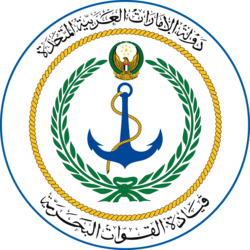 If you are estimating this country has today one of the largest regional navies, you’d being right. The United Arab Emirates Navy today is strong of 3000 personal, fielding in 2025 some 11 corvettes, 4 Offshore patrol vessels, 34 patrol craft, 2 Minehunters, and 31 Landing craft with a small Marine Force. Its origin is linked to Abu Dhabi’s own naval force, and it saw action in the Iran-Iraq war and 1986 war, before being massively consolidated in the 1990s and especially the 2000s, helped by generous oil revenues. It is a strong regional navy, yet not powerful as that of Saudi Arabia, but its coastal area to defend is far less extensive. The armed forces of UAE were called “little Spart” by former USMC General James Mattis due to the military activity despite the small size of the country. The UAE armed forces combines the UAE Army, UAE Navy, UAE Air Force, UAE Presidential Guard, UAE Joint Aviation Command, and the UAE National Guard, all superbly equipped.
If you are estimating this country has today one of the largest regional navies, you’d being right. The United Arab Emirates Navy today is strong of 3000 personal, fielding in 2025 some 11 corvettes, 4 Offshore patrol vessels, 34 patrol craft, 2 Minehunters, and 31 Landing craft with a small Marine Force. Its origin is linked to Abu Dhabi’s own naval force, and it saw action in the Iran-Iraq war and 1986 war, before being massively consolidated in the 1990s and especially the 2000s, helped by generous oil revenues. It is a strong regional navy, yet not powerful as that of Saudi Arabia, but its coastal area to defend is far less extensive. The armed forces of UAE were called “little Spart” by former USMC General James Mattis due to the military activity despite the small size of the country. The UAE armed forces combines the UAE Army, UAE Navy, UAE Air Force, UAE Presidential Guard, UAE Joint Aviation Command, and the UAE National Guard, all superbly equipped.
Origins of the UAE Navy (1967)
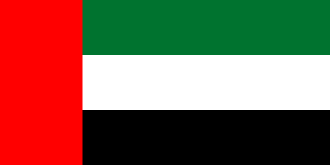 Its roots are found in the Abu Dhabi Defence Force (ADDF) established a Sea Wing of the local forces in 1967. As a reminder, Abu Dhabi had a small navy, but the local forces were formed from the Trucial Oman Levies established on 11 May 1951 (Trucial Oman Scouts in 1956), turned over to the United Arab Emirates in 1971 with the formation of UAE, creating the Union Defence Force (UDF). The initial Abu Dhabi fleet comprised a handful of brown-water patrol vessels to protect home waters in the Persian Gulf and littoral of the Northern Emirates, as well as the Gulf of Oman. The country needed in particular to protect its significant offshore oil and gas facilities.
Its roots are found in the Abu Dhabi Defence Force (ADDF) established a Sea Wing of the local forces in 1967. As a reminder, Abu Dhabi had a small navy, but the local forces were formed from the Trucial Oman Levies established on 11 May 1951 (Trucial Oman Scouts in 1956), turned over to the United Arab Emirates in 1971 with the formation of UAE, creating the Union Defence Force (UDF). The initial Abu Dhabi fleet comprised a handful of brown-water patrol vessels to protect home waters in the Persian Gulf and littoral of the Northern Emirates, as well as the Gulf of Oman. The country needed in particular to protect its significant offshore oil and gas facilities.
The formation of the United Arab Emirates on 2 December 1971, unification of the UAE Armed Forces on 6 May 1976 saw the independent ADDF Sea Wing consolidated as the UAE Navy. Soon were funded new naval facilities at Abu Dhabi port in 1975 and others in the far west of the Emirate and eastern coast of Fujairah, at Khor Fakkan.

Khor Fakkan commercial terminal, marina and coast guard base.
The United Arab Emirates (formerly Trucial States) is composed of seven emirates: Abu Dhabi, Ajman, Dubai, Fujairah, Ras al Khaimah, Sharjah and Umm al Qaiwain. Six of these came together as an independent state on 2 December 1971 when they ended their individual special treaty relationships with Britain. Ras al Khaimah joined the other six on 10 February 1972.
Six of the emirates, which have a total area of 32,278 square miles, lie on the shore of the Gulf between the Musandam peninsula in the east and the Qatar peninsula in the west, while Fujairah lies on the Gulf of Oman. The 1992 UN population estimate was 2,173,000.
The armed forces all came under the control of the Supreme Defence Council when the emirates merged. The Ministry of Defence is located in Dubai and general headquarters is in Abu Dhabi. The naval force of Abu Dhabi had been formed in 1968 and the UAE naval force was created on 1 February 1978. Its function is to patrol territorial waters and oil installations in UAE marine areas. The main naval base is at Taweela, between Abu Dhabi and Dubai.
In the early 1980s the total personnel comprised 1200 volunteer oficers and ratings (commanded by a brigadier). By 1989 this had increased to 100 officers and 1400 ratings, and in 1994, 150 and 1850 with main ports being Abu Dhabi, Dubai, Ras al Khaimah and Sharjah.
Iran-Iraq War (1980–1988):
In the 1986 ‘tanker war’ the Persian Gulf became a hotbed of attacks. On 25 November 1986 Abu Dhabi’s Abu Al Bukhoosh offshore oil platforms was attacked by Iranian aircraft, in a complex context. This station was located 180 km northwest to Abu Dhabi shoreline, production started in 1972 or 1974 depending on sources. Such incidents led to a further expansion of Navy assets and capabilities.
UAE Ships of the Cold War
During the past fifteen years, fighting capability of the navy increased significantly. Six Lürssen “TNC 45” fast attack craft were commissioned in 1980-81, two similar Lurssen craft of the Mubarraz Class entered service in 1990. The most important acquisitions were two small fast missile-armed helicopter-capable corvettes of the Lürssen “FPB 62” type commissioned in 1990-91. Two very similar Corvettes entered service in the navy of Bahrain in 1987-88. It is Noteworthy that most of the attack craft delivered in to the Gulf states were built by Lürssen Vegesack in Germany. 1990s plans were for the acquisition of more missile-armed fast attack craft as well as some hovercraft. Interest has been expressed 1 the acquisition of new or second hand frigates of c2000t displacement, and it is planned to lease two ex-US Oliver Hazard Perry Class frigates in 1996. There was also a requirement for at least three Minehunters, later filled.
 Mubarraz class FACM (1989)
Mubarraz class FACM (1989)
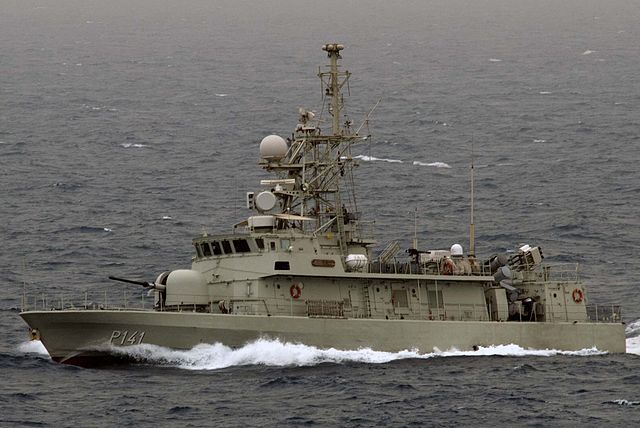
Class: Mubarraz (P 4401, Aug 1990), Makastb (P 4402, Aug 1990).
Two 260 tons full load/44.9 m vessels armed with 4x MM-40 SSM, 6x Mistral SAM, 76 mm, 2× 40 mm and commissioned in 1990.
Heavily modified Lirssen “TNC 45” type fast attack craft ordered late 1986 in Germany (Lirssen) at the same time as the two ‘FPB 62’ type corvettes. Launched in 1989 90. Fitted with the first export installation of new French Mistral SAM complete with CSEE Najir optronic director. Air surface search and fire control radars delivered by new Swedish company BEAB now owned by Bofors (Philips-PEAB was sold out to Bofors, hence the new name). SSM placed in a short cut in the long superstructure. According to some reports main engines develop 14,000bhp for designed 40kts speed.
Specs:
Displacement: 225t standard; 2601 full load
Dimensions: 147ft 4in 0a x 23ft x 7ft 11lin (prop) 44.9m x 7.0m x 2.4m
Machinery: 2 shafts, 2 MTU 20V538 TB93 diesels, 9400bhp = 40kts. Range 500nn7/38kts
Armament: 4 Acrospatiale MM40 Exocet SSM (2×2), 1 Matra Sadral (Mistral Sam) (1×6), 1 76mm/62 OTO Melara Super Rapido, Dagaie chaff RL
Sensors: Radar BEAB Sea Giraffe, Racal Decca 1226, fire control BEAB 9LV331; ECM/ESM Racal Cutlass Cygnus
Complement: 40 (5 officers)
 Ban-Yas class FACM (1978)
Ban-Yas class FACM (1978)
piccc
Class: Banyas (P 4501, Nov 1980), Marban (P 4502, Nov 1980), Rodgm (P 4503, Jul 1981), Shaheen (P 4504, Jul 1981), Sagar (P 4505, Sep 1981), Tanf (P 4506, Sep 1981).
Six Lürssen TNC-45 fast attack craft: 260 tons FL/44.9 m: 4c MM-40 Block III SSM, 76 mm, 2 × 40 mm guns, commissioned 1980-1.
Liirssen ‘TNC 45° type fast attack craft ordered in late 1977, launched 1980 81 and shipped in pairs on merchant ships. First regular warships armed with new French MM40 Exocet missiles. For 40mm guns the CSEE Panda director is provided. Carry 350 rounds 76mm, 1800 rounds 40mm, and 6000 rounds MG ammunition. Similar (modified) boats were in service with Kuwait Navy.
Specs:
Displacement: 231t standard; 259t full load
Dimensions: — 147ft 4in oa, 138ft 9in pp x 23ft x 8ft 2in 494.9m, 42.3m x 7.0m x 2.5m
Machinery: 4 shafts, 4 MTU 16V538 TB92 diesels, 13,640bhp =40kts. Range 500nm/38kts, 1500nm/1 6kts
Armament: 4 MM40 Exocet SSM (2×2), 1-76mm/62 OTO Melara, 2x 40mm/70 Breda, 2x 7.6mm MG
Sensors: CSEE Dagaie, Racal Decca TM 1226, PEAB 9LV200 Mk 2, ECM/ESM Racal, Cutlass/Cygnus
Complement: 32 (5 officers)
 Muray Jip class Corvettes (1989)
Muray Jip class Corvettes (1989)
Class: P 6501 MURAY JIP (Nov 1990), P 6502 DAS (Jan 1991).
Lurssen ‘FPB 62’ type missile corvettes: Small fast missile corvettes ordered by the end of 1986 to the modified FPB 62 design. Launched in 1989 90, Sinnlar ships were also built for Bahrain, but fitted with shorter tower mast, These corvettes are specially adapted for conditions of the Gulf, being Well armed and air-capable, Their armament includes a SAM battery of Crotale Navale type together with a fully-fledged gunnery CIWS system which is rare for ships of their size, The helicopter can itself equipped with light anti ship missiles.
Specs:
Displacement: 560t standard; 630t full load
Dimensions: 21 4ft 3in oa x 30ft 6in x 9ft 6in 65.3m x 9.3m x 2.9m
Machinery: 4 shafts, 4 MTU 16V 538 TB92 diesels, 13,640bhp = 32kts. Range 4000nm/1 6kts
Armament: 8 MM40 Exocet SSM (2×2), 8 Crotale Navale SAM (1×8), 1—76mm/62 OTO Melara Super Rapido, 1 Goalkeeper 30mm 7-barrelled CIWS, Dagaie chaff RL, 1 Alouette SA 316 helicopter |
Sensors: Radar BEAB (Bofors Electronic) Sea Giraffe, Racal Decca 1226, fire control BEAB 9LV331, Thomson-CSF DRBV 51C; ESM/ECM Racal Cutlass/Cygnus
Complement: 43
 Vosper Thornycroft 110ft OPVs (1975)
Vosper Thornycroft 110ft OPVs (1975)
Class: Ardhana (P 1101, 7.3 24,0.75), Zurara (P1102, 13.0 14.8,75), Afardan (P 1103, 16,9.75), Al Ghulan (P1104, 16.9.75), Radoom (P1105, 15.12.75, 1.7.76), Ghanadhah (P 1106, 1.3 1.7.76)
Round bilge steel hull construction. All built by Vosper Thotnycroft, Portsmouth, for Abu Dhabi. P 1103 and P 1104 sailed out, rest transported by freighter.
Specs:
Displacement: 110t standard; 175t full load
Dimensions: 103ft 4in pp, 109ft lin oa x 21ft x 5f 3in 6ft 7in 31.5m, 33.5m x 6.4m x 1.6-2.0m
Machinery: 2 shafts, 2 Rushton-Paxman Valenta RP200M diesels, 5400bp = 29kts, Range 1800nm ar 14kts
Armament: 2 30mm/75 BMARC Oerhkon A32 (1x*2), 1 20mm Oerlikon A41A, 2x 51mm REL
Sensors: Radar Decca RM-916
Complement: 26
 US-built customs patrol craft (1969)
US-built customs patrol craft (1969)
Class: US P-77A design. New numbers 753—757.
Built by Camcraft, New Orleans. In service since September 1975 with the UAE Coast Guard.
Specs:
Displacement: 70t full load
Dimensions: 76ft 9in x 18ft lin x 4ft Ilin 23.4m x 5.5m x 1.5m
Machinery: 2 shafts, 2 General Motors 12V 71T diesels, 1400hp = 25kts.
Range 750nm at 25kts
Armament: 2-20mm (2×1)
 KAWKAB class (Keith Nelson type, 1969)
KAWKAB class (Keith Nelson type, 1969)
Class: Kawkab (P 561, 7.3.69), Thoaban (P 562, 7.3.79), Bantyas (P 563, 27.12.69)
Glass fibre hull construction, designed and built by Keith Nelson, Bembridge, a division of Vosper. Originally operated by Abu Dhabi. Some sources give displacement 32t standard and 38t full load and range 445nm at 15kts. Used for coastal patrol, hydrographic survey, and oilfield surveillance. Fresh water evaporators provides 900 litres daily.
Specs:
Displacement: 25t standard; 32t full load
Dimensions: 52ft pp, 57ft 6in oa x 15ft 6in x 4ft 6in 15.8m, 17.5m x 4.7m x 1.4m
Machinery: 2 shafts, 2 Caterpillar diesels, 750bhp = 19kts.
Range 300nm at 10kts. Endurance 7 days
Armament: 2-20mm (2×1)
Sensors: Radar Decca RM 916
Complement: 11
 Cheverton type 50ft customs patrol craft (1974)
Cheverton type 50ft customs patrol craft (1974)
Class: Al Shaheen, Al Aqab GRP hull.
Built by Cheverton Ltd, Isle of Wight. Commissioned February 1975. Originally delivered to the Sharjah Marine Police.
Specs:
Displacement: 20t
Dimensions: 50ft 2in x 14ft lin x 4ft 7in 15.3m x 4.3m x 1.4m
Machinery: 2 shafts, 2 GM diesels, 850bhp = 23kts. Range 1000nm at 20kts
Armament: 1-7.62mm MG
 DHAFEER class coastal patrol craft (1968)
DHAFEER class coastal patrol craft (1968)
Class: Dhafeer (P 401, Feb-1.7.68), Ghadunfar (P 402, May-1.7.68), Hazza (P 403, May-1.7.68), Durgham (P 404, Sep 1968, 7.6.69), Timsah (P 405, Sep 1968, 7.6.69), Murayjib (P 406, Feb-7.7.70)
Glass fibre hull construction, built by Keith Nelson, Bembridge. Old sources give range 150nm/12kts. Transferred to Ministry of Interior (Marine Police), July 1977. All withdrawn in 1991.
Specs:
Displacement: 10t, Dimensions: 40ft 4in x 11ft 3in x 3ft 7in 12.3m x 3.4m x 1.1m
Machinery: 2 shafts, 2 Cummins diesels, 3700bhp = 19kts. Range 350nm at 15kts
Armament: 2-7.62mm MG or 1-12.7mm MG.
The modern UAE Navy
The 1990s and 2000s saw further consolidation. In 2001, the UAE Coast Guard was integrated to the Navy. The Navy structure was also amended in the 2000s to be expanded with an amphibious capability and formation of the UAE Navy Marines, merged with the UAE Presidential Guard. From 2015, the UAE Navy took part in the Yemen region in police operations and anti-piracy patrols.
UAE Marines
This elite battalion-sized marine force are equipped with BMP-3 armoured personnel carriers from Russia. They are landed thanks to a serie of 31 Landing craft. They are trained by the USMC (see src).
United Arab Emirates Coast Guard
In 2001, the UAE Coast Guard, which had been under the control of the UAE Ministry of Interior since 1976. But it was transferred under control of the Navy, notably as a better response to concern over terrorist attacks on critical infrastructure on the littoral zone and islands after the 9/11. This better integration with the Navy also allowed crossing assets and made the Coast Guard more efficient against this threat. The coast guard agency of the United Arab Emirates is today tasked of the protection of the UAE coastline through regulation of maritime laws, but also of seamarks maintenance, border control, anti-smuggling operations, as well as still, anti-terrorist patrols around sensible infrastructures.
Ships list:
Six Italian Baglietto “GC23’ type fast patrol craft, No 758-763, delivered in pairs in 1986, 1987, 1988; Coast Guard, aluminium hull and superstructure (50.7t full load, 79ft, 3260bhp = 42kts, 1-20mm Oerlikon, 2-7.62mm MG).
Two Baglietto ‘13FC’ patrol boats delivered in 1988; Coast Guard, 11t, 43ft, 760bhp = 43kts, 2-7.62mm MG).
Ten Watercraft Mk II patrol boats delivered in 1983; Coast Guard, GRP hull, (25t full load, 45ft oa, 1300bhp = 26kts, 2-7.62mm MG).
Seventeen Watercraft ‘P 1220’ patrol boats, first ten delivered in 1979-80 and seven ordered in 1980, GRP hull (10t, 39ft, 800bhp = 29kts, 2-7.62mm MG). All deleted by 1993.
Sixteen Camcraft 65ft patrol boats delivered from USA in 1979-83; Coast Guard (50t full load, 65ft oa, 1630bhp = 25kts or 700bhp in two units, 1-20mm Oerlikon).
One ‘Posilipo’ patrol boat, delivered in 1984; Coast Guard, GRP hull, (35.5t full load, 65ft, 1630bhp = 24kts, 1-20mm Oerlikon).
Three Baglietto 59ft type patrol craft Nos 501-503 (22t full load, 59ft (181M) oa, 2 MTU diesels = 40kts, 2-7.62mm MG), delivered 1993.
UAE Ships List
 Bani Yas-class (Gowind design) corvette
Bani Yas-class (Gowind design) corvette
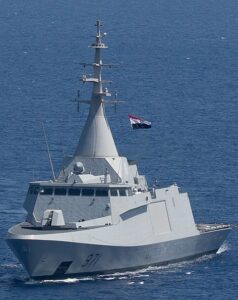 2 ships ordered on 25 March 2019 from Naval Group, now at the Mina Zayed naval base.
2 ships ordered on 25 March 2019 from Naval Group, now at the Mina Zayed naval base.
Bani Yas P110 LD 2020; LC 4 December 2021 CP 29 November 2023.
Al Emarat P111 LD2020, LC 13 May 2022, CP 27 June 2024.
Specs: 2,700 tonnes, 102 m (335 ft), CODAD prop. 25 knots (46 km/h; 29 mph)
Armed with an OTO Melara 76 mm main gun, 2 × Nexter Narwhal 20mm cannon, 16 x VLS VL MICA NG, 21 x RAM (PDMS), 8 × Exocet SSM, 2×3 MU90 Impact TTs.
Optional Schiebel Camcopter S-100. The UAE Army was the first to order 40, with an option for 40 more. They are capable of a range of 180 km (110 mi, 97 nmi) or 6 hours fligh at max 240 kph. Primarily used for surveillance they coukd carr buoys, active VDS, with hardpoints for 2x Lightweight Multirole Missiles.
 P 191 Abu Dhabi corvette (2011)
P 191 Abu Dhabi corvette (2011)
She was built at Fincantieri, launched 15 February 2011, single in class.
Specs:
1,650 tons, 88.4 x 12.2 x 4.6 m (290 ft x 40 ft x 15 ft 1 in)
2 × MTU diesels 20V 1163 TB93 (7,000 kW each), 25 knots, 3,000 nmi, 20 days endurance, crew 70
Sensors IPN-S, FCS NA-30S, KRONOS 3D NV, SIR-M, Medusa MK4B Thales Captas Nano, MASS decoys, Seal-H EWS
Armed with: Otobreda 76 mm Super Rapid gun, 2× 30 mm RWS, 4x MM40 Block 3 Exocet SSM, 1 helicopter.
 Baynunah class crovettes (2009)
Baynunah class crovettes (2009)
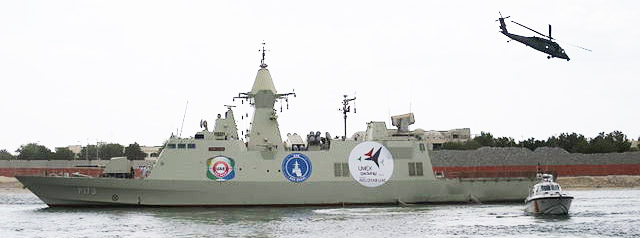
CMN Group’s Combattante BR70 design. Ordered 2004 to replaced the Ardhana class OPVs, CMN built the first, the remainder by Abu Dhabi Ship Building with assistance. Six ships built US$820 M.
Class: P17 Baynunah, P172 Al Hese, P173 Al Dhafra, P174 Mezyad, P175 Al Jahil, P176 Al Hili (launched 2014, completed 2017).
Specs:
915 tons, 71.3 x 11 x 2.8 m (233 ft 11 in x 36 ft 1 in x 9 ft 2 in)
4× MTU 12V595 TE90 diesel engines, 3 × Kamewa Waterjets, 30 knots, 2,400 nmi, endurance 14 days.
Crew 37.
Sensors: Saab Sea Giraffe AMB, Terma NVR, Selex Orion RTN 25 FCR, NDS 3070 Vanguard sonar
Armament: OTO Melara 76 mm/62, 2 × Rheinmetall MLG 27 27 mm, 2×4 Mk 56 VLS with RIM-162 ESSM, Mk 49 mod3 21-cell RAM block 1A, 8× MM40 block 3 SSM.
Aft helicopter deck and hangar. They took part in the naval blockade of Yemen.
 Muray-Jib class corvettes (1990)
Muray-Jib class corvettes (1990)
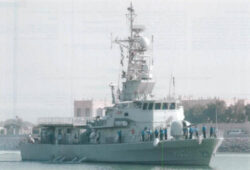 Built at Lürssen, Vegesack, West Germany, FPB62 type adapted for the Gulf, with helicopter deck for an Alouette III helicopter. Modernized 2006 and 2009.
Built at Lürssen, Vegesack, West Germany, FPB62 type adapted for the Gulf, with helicopter deck for an Alouette III helicopter. Modernized 2006 and 2009.
Class: Murayjib P161 5/1990, Das P162 10/1991.
Specs:
Displacement 560t standard 630t FL, 66 x 9.30 x 2.90m, Crew 43.
4 shafts MTU 16V538 TB92 diesels: 15,600 shp, 34 kts, fuel 120t, RA 4000 nm/16 kts
Sensors: Decca TM1226, Sea Giraffe 50HC, 9LV223 Mk 2, Castor IIJ, Goalkeeper, Najir e/o, Cutlass RDL-2, Cygnus ECM, Dagaie RL
Armament: 2x 4 MM40 Exocet SSM Block II, 1×8 Crotale SAM, 76mm/62 OTO-Melara Compact SR, 30mm/77 Goalkeeper, helicopter deck.
 Falaj 3-class OPVs (2023)
Falaj 3-class OPVs (2023)
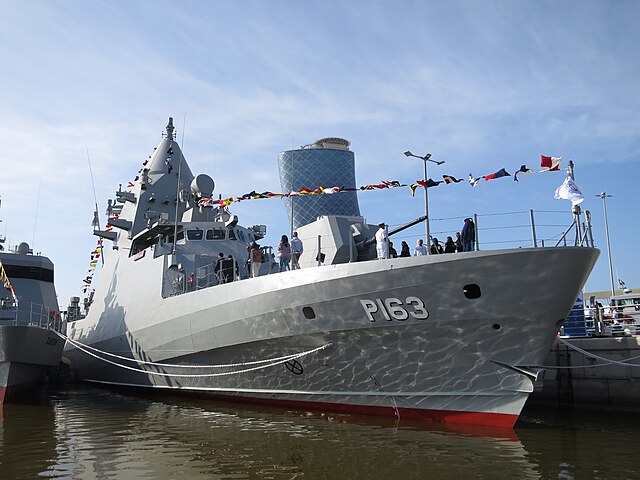
Four Falaj 3 ordered in May 2021, based on Fearless-class patrol vessel, built by Singapore Technologies (ST) Marine.
500 tonnes, 55 metres (180 ft 5 in) long, powered by two MTU 12 V 595 TE 90 diesels for 20+ kn RA 1,000 nmi.
Armed with Mistral SAM, EuroTorp A244/S Mod 1 torpedoes, Oto Melara 76 mm, 4× STK 50MG 12.7 mm (1 in) HMG.
 Falaj 2-class OPVs
Falaj 2-class OPVs
Two stealth inshore patrol vessels (IPVs) built in Fincantieri (La Spezia) mixing elements of the Diciotti-class offshore patrol vessels and experimental Saettia class. Contract signed 2010.
Class: P251 Ganthoot (2013), P252 Salahah (2013).
Specs:
550 tonnes, 55.7 x 8.8 x 2.8 m. Crew 28
Power: 2× MTU diesels 16V 4000 M90+ 4 Isotta Fraschini generators, 20 knots RA unknown.
Sensors: IPN-S, FCS NA-30S, KRONOS 3D NV, SIR-M, Medusa MK4B, MASS, Seal-L.
Armament: OTO Melara 76 mm/62 SPSM 2×2 MM40 block 3 Exocet, 2x trio VLS MICA SAM, 2× OTO Melara RWS Hitrole-G.
 Arialah class (2015)
Arialah class (2015)
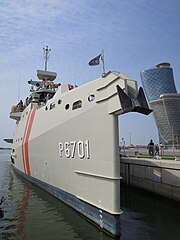 Critical Infrastructure and Coastal Protection Agency (CICPA) ships, two planned, designed by Damen Group, on the “sea axe” design. Hull constructed at Damen’s Galați shipyard, Romania, fitted out by Abu Dhabi Ship Building, systems integration by Thales Group. Contract signed 2013. Commissioned 2016-2017.
Critical Infrastructure and Coastal Protection Agency (CICPA) ships, two planned, designed by Damen Group, on the “sea axe” design. Hull constructed at Damen’s Galați shipyard, Romania, fitted out by Abu Dhabi Ship Building, systems integration by Thales Group. Contract signed 2013. Commissioned 2016-2017.
Class: Arialah (P6701), Hmeem (P6702).
Specs:
67 x 11 x 5.4 m, 4 × MTU diesels, 20+ knots, RA 21 days crew 42 +35 troops.
Thales STIR, Smart-S Mark 2, Mirador EOS, Multi Ammunition Softkill System
Armament: Bofors 57 mm gun Mk3, 2 × OTO Melara 30 mm, mk49 mod2 11-cell RAM, aft helicopter deck.
Older vessels:
-2x Mubarraz class FACM (1989)
-6x Ban-Yas class FACM (1978)
-6x Ardhana class OPVs (1974) status unknown.
-2x Type 332 Frankenthal-class minehunters, 1 damaged by Houthi attack. M01 Al Hasbah, M02 Al Murjan 2006.
-1x 26 m Offshore Patrol Vessel under construction
-1x 24 m Amphibious Troop Transport Vessel under construction
-1x 24 m Patrol Vessel are under construction
Either at Abu Dhabi Ship Building (ADSB) or Etihad Ship Building.
 UAE Amphious ships
UAE Amphious ships
1x Makassar class LPD (Indonesian design), ordered +1 option, locally built (more data needed). 1 July 2022 MoU signed with PT PAL: 163 m version for 1.5 billion AED signed at IDEX 2023, 24 February. First Steel Cutting 28 February 2024.
3x Al-Quwaisat-class (2013) LST (2,046 tons, 80 m, helideck) built at Shin Yang Malaysia: A81-83 Al-Quwaisat, Al-Futaisi, Al-Taweelah
7x Landing ship tank, unknown type
5x Landing Craft Utility
4x Landing Craft Utility
12x Ghannatha class Landing crafts, upgraded to Gnannatha Phase II.
Older vessels:
-Two Vosper QAF type landing craft, Jananah and Dayyinah, completed 1988 (350dwt, 177ft oa, 2 MTU diesels, load: four medium tanks), two more ordered 1990. Built by Argos Eng, Singapore.
-Landing craft Al Feyi, built Singapore 1987 (650t full load, 164ft oa, 11 kts):
-Landing craft Ghagha I, built 1987 (100t full load, 131 ft oa, 9kts).
MISCELLANEOUS:
-Diving tender D 1051, built by Crestitalia 1987, used primarily for mine clearance; lengthened version of Italian Alcide Pedretti (100t full load, 103ft 04 26kts).
Sources
on navalnews.com/ uae-navy/
cae.com/ training-centres UAE
globalsecurity.org/ uae-marines.htm
archive.org mod.gov.ae/
navypedia.org/ uae_index
bairdmaritime.com
navaltoday.com
marcent.marines.mil
dsca.mil/
 Uruguayan Navy
Uruguayan Navy
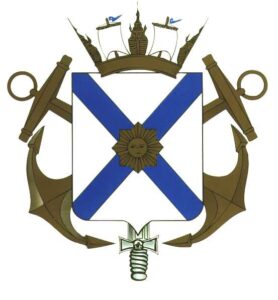 “The National Navy of Uruguay (Spanish: Armada Nacional del Uruguay) is a branch of the Armed Forces of Uruguay under the direction of the Ministry of National Defense and the commander in chief of the Navy (Comandante en Jefe de la Armada or COMAR).
“The National Navy of Uruguay (Spanish: Armada Nacional del Uruguay) is a branch of the Armed Forces of Uruguay under the direction of the Ministry of National Defense and the commander in chief of the Navy (Comandante en Jefe de la Armada or COMAR).
History
Independence
Under the late Spanish Empire, Montevideo was the Armada’s main naval base or Real Apostadero de Marina for the South Atlantic, tasked to watch over the Argentine coast, Fernando Po, and the Falklands. At somes point there was a 100 ships strong fleet under Viceroy Pedro de Cevallos in 1777. This was the start of the city’s prosperity, but the Uruguayan navy was an idea of future revolutionary general Artigas in a letter of marque on 15 November 1817 to attack Portuguese shipping. Portuguese forces from Brazil invaded “Banda Oriental” (Uruguay) in August 1816 and under Pedro Campbell, the Irish “Gaucho Admiral”, Montevideo sent some 50 privateer schooners and brigs which captured more than 200 Portuguese vessels as far as Madagascar, Spain, and Carribean. Still the Navy did not existed as a truly organized force. For this, the country needed to be independent first.
Early Republic
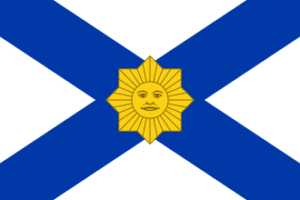 Following independence, a navy was created under Colonel Pablo Zufriategui, a veteran of Artigas’s campaign and Capitán General de Puertos). He started to combat smuggling. In 1832 he led the first naval engagement when the schooner Aguila, chasing off the pirate ship “Exquisit”. Command of the Navy was however personally assumed by no other than Giuseppe Garibaldi for a time: He captured Colonia del Sacramento, Isla Martín García, and Gualeguaychú on the flagship corvette “Sarandí” after an important battle.
Following independence, a navy was created under Colonel Pablo Zufriategui, a veteran of Artigas’s campaign and Capitán General de Puertos). He started to combat smuggling. In 1832 he led the first naval engagement when the schooner Aguila, chasing off the pirate ship “Exquisit”. Command of the Navy was however personally assumed by no other than Giuseppe Garibaldi for a time: He captured Colonia del Sacramento, Isla Martín García, and Gualeguaychú on the flagship corvette “Sarandí” after an important battle.
Fast forward to the 1880s, and the country acquired later the gunboats “General Rivera”, “General Artigas”, and “General Suárez”, the first being assembled in Uruguay by the Academy of Arts & Crafts, commissioned in April 1884, the second was constructed in Trieste, Austria-Hungary, commissioned in December 1884, and the last being the 23-year-old French gunboat “Tactique” acquired in 1886, “General Rivera” passed the Strait of Magellan, first Uruguayan ship to do so.
As World War I was close, President Claudio Williman tried to modernize the navy for “sovereignty and honor.”
There were three attempts to create an academy, in 1817, 1863, and 1874, but the Escuela Naval was created for good on December 1907 to man the following:
-Gunboat “18 de Julio” (UK 1889)
-Cruiser “Montevideo” (the ex-Italian Dogali)
-Transport “Maldonado” (Germany 1886), later “Barón de Río Branco” to test the limits of the Merín Lagoon
-Steamer “Vanguardia”
-Courier “Oriental”
-Torpedo gunboat “Uruguay” (Germany, commissioned August 1910).
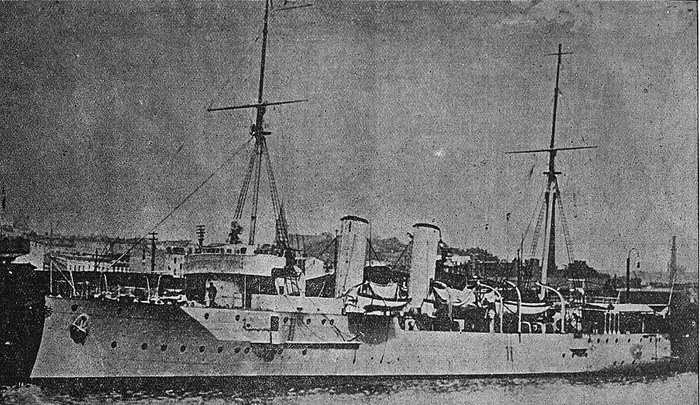
The Torpedo Gunboat Uruguay, fleet flagship from 1910 sine the Montevideo was probably mothballed
In 1910, the government acquired the Cibils-Jackson shipyard, which became the “National Dock”. Funding cutbacks of the 1920s however gutted the fleet, poorly maintained.
In June 1916, the tug “Instituto de Pesca Nº1” took part in the atempted rescue of Shackleton’s men stranded at Elephant Island.
In 1925, the Servicio de Aeronáutica de la Armada was created (see below) by Captain Atilio Frigerio, first Uruguayan breveted pilot from Aviano, Italy, 1912, but no planes were acqired before the 1930s, all Italian seaplanes.

Training on an Italian-built Gunboat in the interwar
In 1934, the first Naval Act created the Inspectorate of the Navy or Inspección General de Marina, making the Navy indepdnent from the Army.
Three patrol boats from Cantieri Navali Riuniti, Genoa, were acquired.
“Paysandú”, “Salto”, and “Río Negro” were decommissioned after 30 years.
World War II
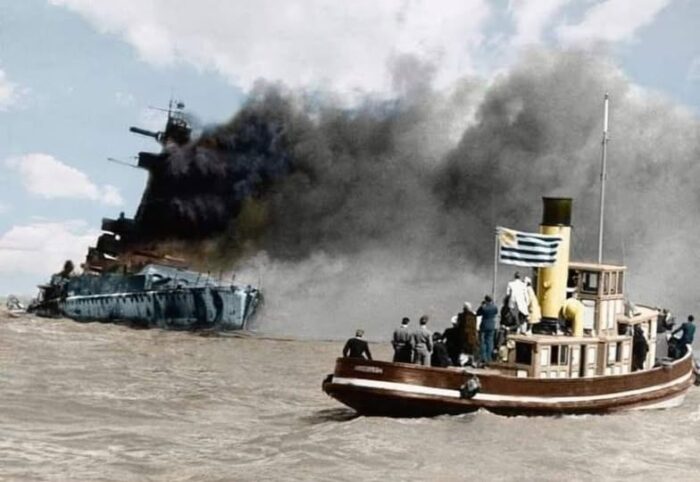
In December 1939, the Río de la Plata witnessed a famous event, with the German “pocket battleship” Admiral Graf Spee battling HMS Ajax, Achilles, and Exeter and then taking refuge into neutral Montevideo harbor. Pro-British prevailed and the Royal Navy carried out a brillant disinformation coup, forcing the Graf Spee out, that ended in her scuttling off the harbour.
In 1940 Uruguay knew U-Boat activity came as wa south as its waters, and the La Paloma Naval Base was established, conscription was established with the Navy creating the battalions “Zapicán” and “Honor y Patria” for the Reserve Fleet. In 1941, the Navy created the Naval War School for officers. The country officially joined the allies by 15 February 1945, but the Navy took part in convoy efforts in its own waters. Authorities confiscated two Italian and two Occupied Danish freighters in Montevideo, manned by the Navy as “Montevideo”, “Maldonado”, “Rocha” and “Colonia”. Montevideo was sunk by the Italian submarine Enrico Tazzoli in March 1942. The German freighter Tacoma was also seized and by August 1942, Maldonado was sunk by U-510. Uruguay then leased ships to the US Navy, receiving in exchange in 1944 the ASW corvette Maldonado.
The aviation was reinforced by six Kingfisher from 1942, sent at the newly formed Laguna del Sauce Aeronaval Base from 1947.
Cold War
Postwar, the the Inter-American Treaty of Reciprocal Assistance was signed in Rio de Janeiro, in which the US taskd soyth American countries of taking their share of responsibility in “Hemispheric defense”. Signatory states had to improve and coordinate their naval forces but could receive MDAP help. 1949-1952 saw the acquisition of surplus sixteen TBM Avenger torpedo bombers, three SNJ Texan trainers, twelve F6F Hellcat fighters.
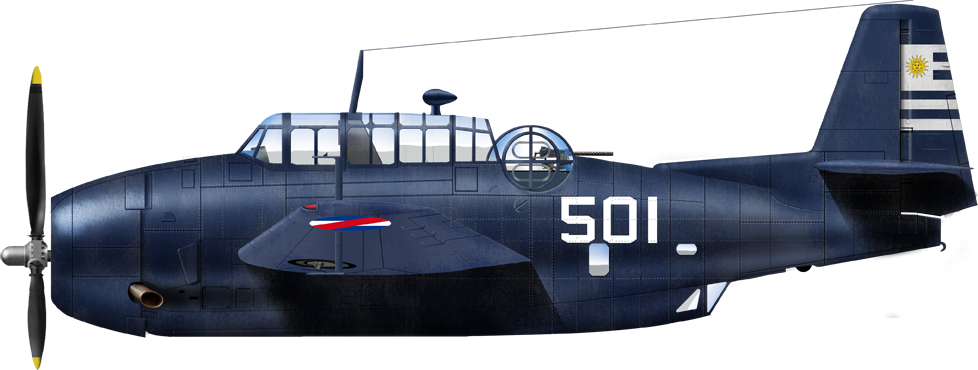
Uruguayan Avenger, 1956
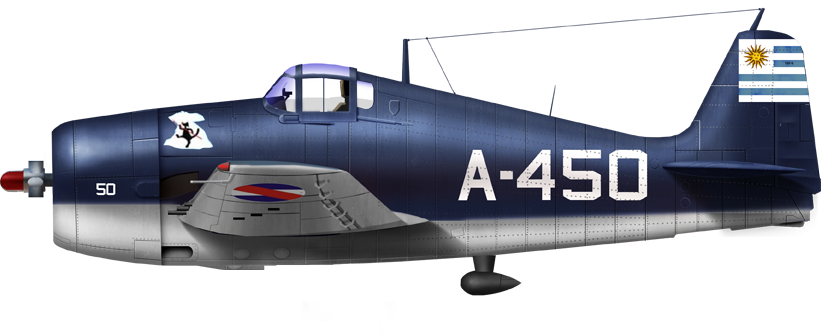
Uruguayan F6F5 Hellcat from CComar Aguirre in 1952
In 1952, the Uruguayan fleet received former US destroyer escorts “Uruguay” and “Artigas” and the next year the the frigate “Montevideo”. In 1955, the Coast Guard received three motor launches (PS-1-3). In May 1959, PS-2 rescued crew of the Uruguayan freighter Pietrina which was stranded on the English Bank sandbar off Montevideo.
In 1957, UNITAS joint exercises between the US and Latin America started to include Uruguay on a regular basis.
Basic training was oriented towards protection trade and communication, escort and ASW. The oiler Presidente Oribe was purchased in 1962 to provided RAS and in 1972, Presidente Rivera, then in 1978, Juan Antonio Lavalleja.
On 1960-1962, the training ship Alférez Cámpora circumnavigated the globe, making many ports visits, as ambassador of the Uruguayan Navy
In 1965, three S2A Tracker were acquired and boosted the country’s ASW patrol capabilities.
In 1966, the minesweepers Cte. Pedro Campbell and Montevideo were acquired as well as in 1969, the tender Hurrican and in 1970, the minesweepers Rio Negro and Maldonado.
In 1973, the destroyer “18 de Julio” replaced Montevideo.
The Uruguayan Marine Corps (Cuerpo de Fusileros Navales) was established in 1972 as a small marine force, albeit it lacked any landing ship for projection.
In 1978, the schooner ROU 20 Capitan Miranda was overhauled and converted as training ship for cadets embarking on a wordl cruise and good-will tour.
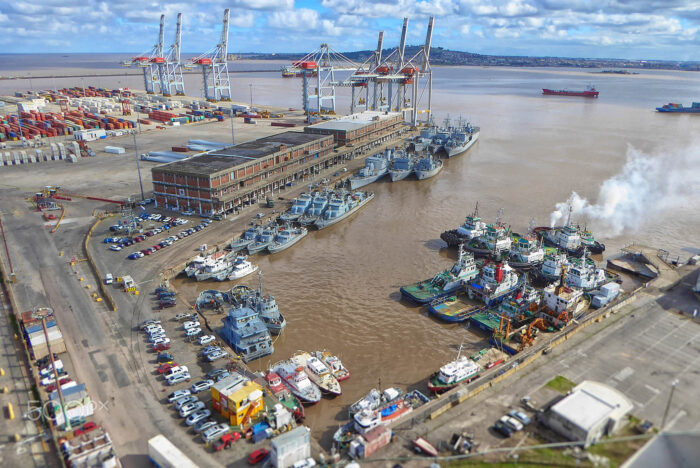
Aerial view of the port of Montevideo in 2016.
In 1981, three French Vigilante-class patrol boats were acquired by the Coast Guard and named “15 de Noviembre”, “25 de Agosto”, and “Comodoro Coe”. They wee howeve rplaced in reserve due to their considerable upkeep and appeared unsuited for conditions in the Rio de la Plata. They were placed on the sell list in 1995 but found no buyers, however, and remained in active service.
In 1988, the fleet oiler “Presidente Rivera” was acquired.
From 1989 to 1991, three Commandant Riviere-class frigates were purchased from France, all decommissioned. These called the following:
-ROU 02 General Artigas
-ROU 01 Uruguay
-ROU 03 Montevideo.
They were however soon mothballs due to their upkeep, with General Artigas decommissoned. “Uruguay” was decommissioned, “Montevideo” was overhauled to stay active.
Following the fall of USSR many former East German Volksmarine vessels were put by the German federal government on sale as surplus to the Bundesmarine. They were were purchased in 1991, notably the ex Kondor II class minesweepers ROU 31 Temerario, ROU 32 Valiente, ROU 33 Fortuna, and ROU 34 Audaz, all named after privateers of the independence era.
Otto von Guericke was also purchased and converted into ROU 26 Vanguardia.
On 5 August 2000, ROU 32 Valiente sank after a collision with the Panamanian freighter Skyros off Cabo Polonio. 11 crewmembers were missing.
The Coast Guard received nex US vessels, “Colonia” and “Río Negro”
In 1998, the research ship Oyarvide was purchased from Germany, hopefully to redefine and double Uruguay’s EEZ to 200,000 km2.
In 1999, 9 boats of the 44 class were also donated by the US.
The buoy tender Sirius was built in Montevideo at the National Dock and refitted: “Cte. Pedro Campbell” and “Uruguay”.
Organization
The Uruguayan National Navy is around 5,700 personnel strong, distributed among four commands with their distinctive colors and functions.
–General Corps (Cuerpo General, CG) under the Fleet Command (Black)
–Coastal Corps (Cuerpo de Prefectura, CP) under Coast Guard (Gray)
–Corps of Mechanical & Electrical Engineers (Cuerpo de Ingenieros de Máquinas y Electricidad, CIME) General Directorate of Naval Materiel (Blue)
–Corps of Provision & Administration (Cuerpo de Aprovisionamiento y Administración or CAA) under the administration of the General Directorate of Personnel (Color: White)
-Two General Services Corps (Servicios Generales/SS.GG.)
-Auxiliary Corps (Cuerpo Auxiliar or CA) (Color: Purple)
-Specialists Corps (Cuerpo Especialista, CE) (Green)
-Naval Academy (Escuela Naval/ESNAL).
-Uruguayan Marine Corps
-National Naval Aviation Command (see below).
The Four main sections are:
- Fleet Command (Comando de la Flota/COMFLO)
- Coast Guard (Prefectura Nacional Naval/PRENA)
- Materiel Directorate (Dirección General de Material Naval or DIMAT)
- Personnel Directorate (Dirección General de Personal Naval or DIPER)
The Fleet Command is in charge of most actual ships of the fleet, marines, naval aviation bases and assets.
The Coast Guard is in charge of a modest Uruguayan merchant marine and naval registry.
The Naval Materiel Directorate is in charge of repairs and maintenance in addition to administering the arsenal and directing hydrological and meteorological study.
The Personnel Directorate is tasked of human resources and administration of the Academy.
The Fleet General Staff (Estado Mayor General de la Armada/ESMAY) assists the admiralty administration, naval intelligence, strategic and tactical planning and logistics as well as liaison and political lobbying, on the Navy’s behalf.
Fleet
Prefix for Uruguayan ships is “ROU” (for “República Oriental del Uruguay”) and numerically listed in position, not as identification number as ships are decommissioned and replaced, previous numbers are reused.
Escort Division:
ROU 04 General Artigas (Lüneburg (E) Replenishment oiler) acquird 6 Apr 2005, refitted with helipad, helicopter patrol & transport. Former West German Freiburg.
Patrol Division:
ROU 11 Río Negro: Cape (C) Patrol boat typ acquired on 25 Jan 1990. Former USCGC Cape Horn (WPB-95322).
ROU 14 Río Arapey: Marine Protector (C) Patrol boat acquired 15 Dec 2021. Former USCGC Albacore (WPB-87309).
ROU 15 Río de la Plata: Marine Protector (C) Patrol boat acquired 15 Dec 2021, Former USCGC Cochito (WPB-87329).
ROU 16 Río Yaguarón: Marine Protector (C) Patrol boat acquired 15 Dec 2021, Former USCGC Gannet (WPB-87334).
Teaching Vessel
ROU 20 Capitán Miranda (Hydrographic Schooner, 28 Dec 1930). Fromer Spanish-built Survey ship prior to 1978, cadet training ship.
ESNAL Bonanza (Oceanic Schooner), second cadet training ship of Uruguay
Auxiliary Ships Service
ROU 21 Sirius Balizador: Buoy tender, built 12 May 1988 in Montevideo with assistance from Damen SY Uruguay.
Service Division
ROU 23 Maldonado: Wangerooge (B) type Rescue-salvage ship (20 Nov 2002) Firefighting, hydrographic, former German Norderney.
ROU 26 Vanguardia: Piast type Rescue-salvage ship (18 Dec 1991) Former 570 Otto von Guericke,Volksmarine.
ROU 27 Banco Ortiz: Type 270 Coastal tug (8 Nov 1991) Former East German tug 4 Zingst Volksmarine Y1655 Elbe.
Mining & Counter mining Division
Kondor II class Minesweepers. Acquired 11 Oct 1991 from Vilsmarine: ROU 31 Temerario, ROU 34 Audaz.
Search & Rescue
ROU 52 Isla Lobo: 23.5m-class Lifeboat acquired 23 November 2018, former German Hannes Glogner.
Uruguayan Naval Academy
Racing sloop Bonanza (US Naval Academy, Annapolis)
Prefectura (Coast Guard)
4 Metal Shark Defiant 32 patrol boats donated 2019 from the US
Uruguayan Naval Aviation
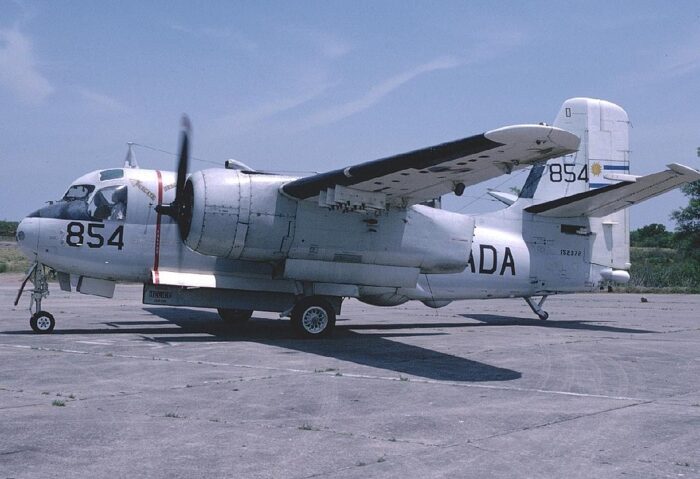
Uruguay Naval Aviation Grumman S-2G Tracker (G-121)
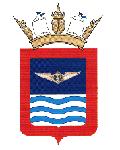 The Aviación Naval Uruguaya (“ANU”) is the sub-branch of the Navy and has their proper wing emblem instead of the traditional Artigas roundel of the Air Force. It was created as the “Aeronautic Service” of the Fleet (Servicio de Aeronáutica de la Armada) on 7 February 1925 but only received two CANT 18 and one CANT 21 on 24 September 1930. On 12 June 1934, NAS “Isla Libertad” in Montevideo’s Bay was the first dedicated operational base with all facilities.
The Aviación Naval Uruguaya (“ANU”) is the sub-branch of the Navy and has their proper wing emblem instead of the traditional Artigas roundel of the Air Force. It was created as the “Aeronautic Service” of the Fleet (Servicio de Aeronáutica de la Armada) on 7 February 1925 but only received two CANT 18 and one CANT 21 on 24 September 1930. On 12 June 1934, NAS “Isla Libertad” in Montevideo’s Bay was the first dedicated operational base with all facilities.
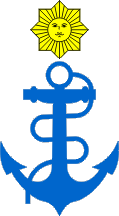 In 1942, a bunch of Grumman J4F Widgeon, Vought OS2U Kingfisher and Fairchild PT-23A trainers were received under Lend-Lease. A new Naval Air Base, “Capitán de Corbeta Carlos A. Curbelo” was created at Laguna del Sauce, operational from 10 September 1947. In 1949-1957, surplus North American SNJ-4, Grumman Avenger, Grumman F6F Hellcat, Martin Mariner were delivered. This brtanch became the “Naval Aviation” (Aviación Naval) in 1951, then Aviación Naval Uruguaya in 1955. By the mid-1960s, her park was mostly written off and new models were acquired such as the Beechcraft T-34 A, Beechcraft C-45, Grumman S-2A Tracker, Bell TH-13 and Sikorsky CH-34J plus extra T-34A/B Mentors for spare parts.
In 1942, a bunch of Grumman J4F Widgeon, Vought OS2U Kingfisher and Fairchild PT-23A trainers were received under Lend-Lease. A new Naval Air Base, “Capitán de Corbeta Carlos A. Curbelo” was created at Laguna del Sauce, operational from 10 September 1947. In 1949-1957, surplus North American SNJ-4, Grumman Avenger, Grumman F6F Hellcat, Martin Mariner were delivered. This brtanch became the “Naval Aviation” (Aviación Naval) in 1951, then Aviación Naval Uruguaya in 1955. By the mid-1960s, her park was mostly written off and new models were acquired such as the Beechcraft T-34 A, Beechcraft C-45, Grumman S-2A Tracker, Bell TH-13 and Sikorsky CH-34J plus extra T-34A/B Mentors for spare parts.
In 1979, nine North American T-28D Fennec, three C-45 were donated by the Argentinian Navy. The first were used as a light attack platform in support of the Marines, until 2000. In 1980 a single Bell 222 Airwolf was bought for SAR and a single Beech B-200T for maritime surveillance. In 1982, three Turbo Mentor, three Grumman S-2G Tracker were acquired allo, the latter as ASW patrol aircraft, but they were at the end of their rope already and were written off in 2001. One S-2G (ANU 854) was placed in reserve and some CH-34Js were exchanged from three Wessex Mk60. Bell 47G were purchased in complement from the civilian market. In the 1990s surplus Westland Wessex HcMkII from RN/RAF stocks were purchased as well and in 2000 the last Fennecs, three Cessna 182 and two Piper Seneca were sold to the private market (collectors). Two Handley Page Jetstream TMk 2 from the RN were purchased to replace the Trackers, patrol and training but only operated until 2010 due to a lack of spares as they used the French-made Turbomeca Astazou XVI C2 turboprop, placed in reserve.
Six MBB Bo-105M helicopters were received from Germany in 2006, and one Helibras Esquilo from Brazil. The latter replaced the antiquated Bell 47 as trainer. Since 2010 acquisition of six cold war Lockheed S-3 Viking from USN stocks was negociated, but a shortage of funds made this impossible. In 2013 a second Beechcraft Super King Air was acquired, but plans were made to acquire a Beechcraft B 350ER, C-212-400 MP or CN-235 MP Persuader, even a Be-12 “Mail” or a Canadian CL-215. The were also negociations with the RN to acquire Short S.312 Tucanos and US T-34C-1 Turbo Mentors plus three new helicopters (Bell 212 ASW, Bell 412EP or Westland SH-3 Sea King from RN surplus).
By 2018, the Bo-105M were in reserve indeed, replaced by two former AB-412 from Italian Coast Guard.
The current Grupo de Escuadrones stringht is of 2 squadrons plus a training school.
Escuela de Aviación Naval (Captain Carlos Curbelo Naval Air Base, Laguna del Sauce):
-Beechcraft Super King Air United States patrol and King Air 200
-Bell 412 utility
-ENAER T-35 Pillán trainers (Chile), 4 on order.
Future
The Uruguayan Navy has currently modernization plans, comprising new ship acquisitions over a decade. In 2021, Admiral Jorge Wilson sogned a Letter of Acceptance for the transfer of three Marine Protector-class patrol vessels from the US Coast Guard, each having a RHIB launched from the stern via an innovative launch and recovery system. A tender process was deposed to purchase two Offshore Patrol Vessels at $100 million, $50 million under the current admin. and the remainder over ten years with the first delivery in June 2024.
Sources
armada.mil.uy/organi.html
armada.mil.uy/ sr-comandante-en-jefe
letras-uruguay.espaciolatino.com/
histarmar.com.ar/ Uruguay Armada
armada.mil.uy/
ericwiberg.com ss montevideo neutral uruguayan sunk bermuda march 1942 by tazzoli
uboat.net merchant Montevideo
marinamercanteuruguaya.blogspot.com/ pietrina 1907-1959
histarmar.com.ar HyamNews2006 HY12 Valiente
marines.mil/ Uruguay Study pdf
impo.com.uy 1977-2019
armada.mil.uy/
janes.com/ uruguayan navy commissions search
armada.mil.uy Noticias bonanza 10_aniversario
pilotoviejo.com/ historiaptnavales
infodefensa.com/ uruguay recibe lanchas metal
pilotoviejo.com historia pt navales
pilotoviejo.com kingfisher.htm
pilotoviejo.com cronologiaanu.htm
defensa.com uruguay aviacion-naval-uruguaya
airpressman.com mbb-bo-105 uruguay
nuestromar.org uruguay la aviacion naval tras el lockheed s-3 viking
desarrolloydefensa.blogspot.com.uy/ naval aviation
desarrolloydefensa.blogspot.com/l
nuestromar.org/ uruguay aviacion naval
airpressman.com mbb-bo-105pah-1-helicopters
infodefensa.com mostrar armada uruguay adquiere segundo beechcraft b200
janes.com uruguay-navy-authorised
defensa.com uruguay sin helicopteros bo-105
on flightglobal.com/
navaltoday.com 2022 uruguay receives three marine-protector
navaltoday.com/ uruguay to buy new offshore patrol vessels
aeroflight.co.uk/ Uruguay naf-
gub.uy ministerio defensa nacional
 Venezuelan Navy
Venezuelan Navy
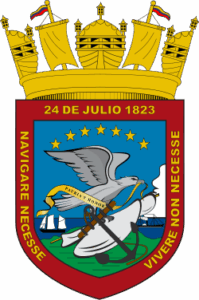 The Bolivarian Navy of Venezuela (Armada Bolivariana de Venezuela or ABV) was one of the earliest in South America, a creation of 1811, with the Venezuelan War of Independence. Originally this was a small coastal force made of a ragtag assembly of schooner and other sailing vessels armed with field guns. By May 1810, Commander Lino de Clemente (a veteran officer of the Spanish Navy) joined the insurrection in the April 1810 coup against the colonial government.
The Bolivarian Navy of Venezuela (Armada Bolivariana de Venezuela or ABV) was one of the earliest in South America, a creation of 1811, with the Venezuelan War of Independence. Originally this was a small coastal force made of a ragtag assembly of schooner and other sailing vessels armed with field guns. By May 1810, Commander Lino de Clemente (a veteran officer of the Spanish Navy) joined the insurrection in the April 1810 coup against the colonial government.
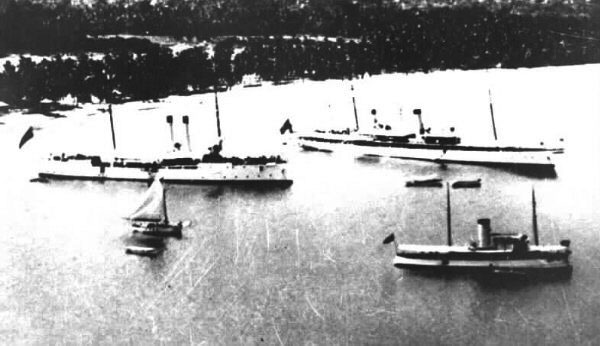
The Venezuelan fleet anchored in La Guaira, 1925.
In 1902, Veneuzuela went intro trouble for the repayment of its international debt, with a combined blockading force. In WWI Venezuela remained Neutral. Te Gunboats Restaurador and Mariscal Sucre remained its most precious assets. In 1919 the small Venezuelian trade fleet comprised 11 ships (5298 Grt) and 8 sailing ships (1097 Grt).
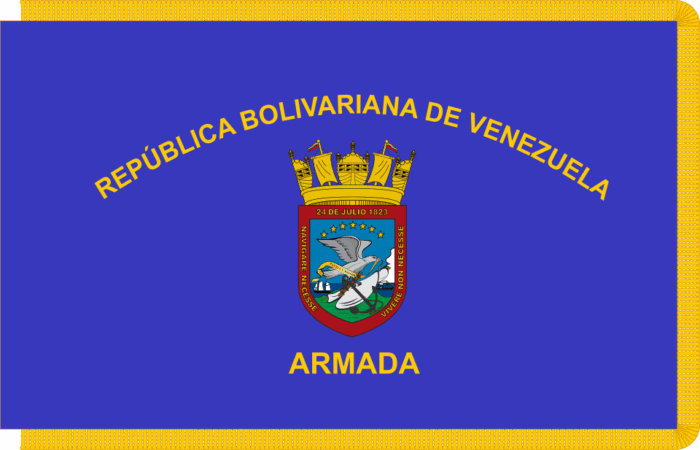
Venezuela in WW2
Between 1920 and 1935, the Navy acquired several second-hand ships:
-Cruiser General Salom
-Gunboats Maracay, Miranda, and Aragua
-Tugboats Brion, José Félix Ribas
-Brig Antonio Díaz.
From 1937, officers graduating from the Naval Academy were sent to academies abroad for more edgy technical training.
The Marine Infantry was re-created on July 1, 1938, as the “Coastal Defense Company”.
In 1939, the gunboats General Soublette and General Urdaneta were acquired, both from the Italian Navy.
profile
These were Dardanelli class ships, 615/850t, 204 ft pp x 28 ft 6 in x 8 ft 6 in (62.18 x 8.69 x 2.59 m) fitted with a reciprocatig engine rated for 1500 ihp and 15 knots (850t fuel). They were armed with two 4-in (100 mm Ansaldo) and a 3-in (75mm) and 2 MGs. These ships were retained in service until 1951.
The fleet remained populated by gunboats, as the country did not yet developed its national resources.
The Venezuelian Navy however could benefit from a rapid expansion after the end of the war, thanks to a bonanza of surplus allied ships;
In 1943, already the Coastal Defense Company became the “1st Marine Infantry Company” as it was recast after the USMC. The same year through the Lend-Lease Act, Venezuela acquired the following ships:
Destroyers Antonio Díaz, Brión, Briceño Méndez, and Arismendi (US). They arrived in La Guaira in 1944.

After World War II, the navy acquired no less than seven Canadian-made Flower class corvettes: Carabobo, Constitución, Federación, Independencia, Libertad, Patria, and Victoria.
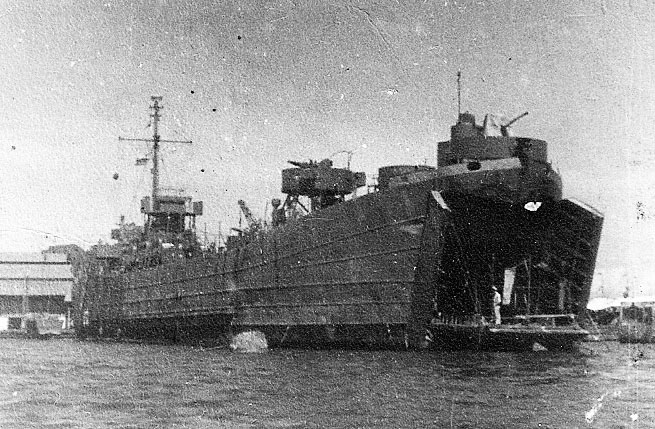
To round this up was also acquired the LST transport Capana, used both as freighter and training ship. The marine infantry had a first Battalion created in December 1945) and second in February 1946. From 1945, the marine infantry (HQ Puerto Cabello) was relocated at La Vela de Coro at Cumaná, Güiria, and Margarita. Naval officers completely replacing army officers and a new Command was established.
The cold War Venezuelian Navy
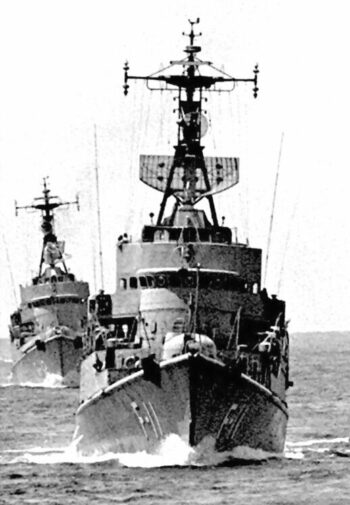 The Navy underwent a fleet upgrade in the 1950s with new ships ordered to Vickers-Armstrong, Barrow-in-Furness, the Nueva Esparta-class destroyers ARV Nueva Esparta (D-11), ARV Zulia (D-21), and ARV Aragua, which arrived between 1953 and 1954.
The Navy underwent a fleet upgrade in the 1950s with new ships ordered to Vickers-Armstrong, Barrow-in-Furness, the Nueva Esparta-class destroyers ARV Nueva Esparta (D-11), ARV Zulia (D-21), and ARV Aragua, which arrived between 1953 and 1954.
In 1954, the Venezuelan government signed a contract with Cantieri Navali Ansaldo for six Almirante Clemente-class light destroyers:
ARV Almirante Clemente (D-12), ARV General Moran (D-22), ARV General Austria (D-32), ARV General Flores (D-13), ARV Brión (D-23), and ARV Almirante García (D-33).
These would form three destroyer divisions. On January 13 another agreement was signed with Chantiers Dubigeon in Nantes for the transport vessel ARV Las Aves (T-12).
With the Junta No. 288 decree of June 27, 1958, the General Command was created and achieved full administrative independence. A reorganization saw the creation of the Directorates of Personnel, Material, Engineering, and Administration, Inspectorate, Squadron and Marine Infantry Commands.
To follow.
Post Cold War
Read more
https://es.wikipedia.org/wiki/Armada_Bolivariana
 Vietnamese Navy
Vietnamese Navy
(Fully Fledge Page)

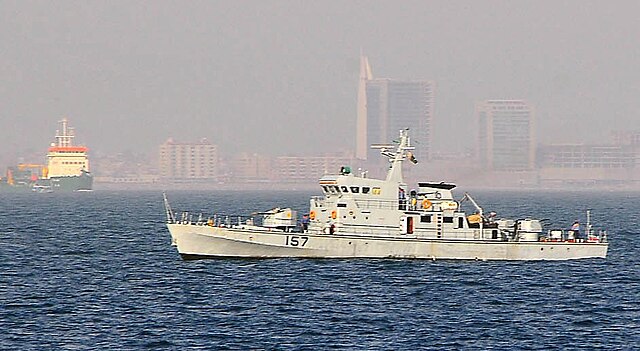



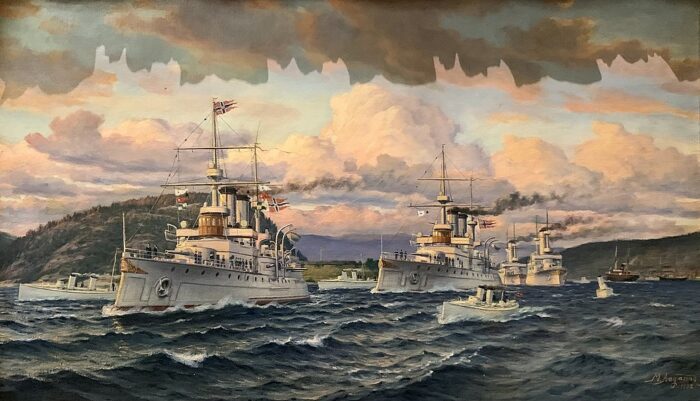
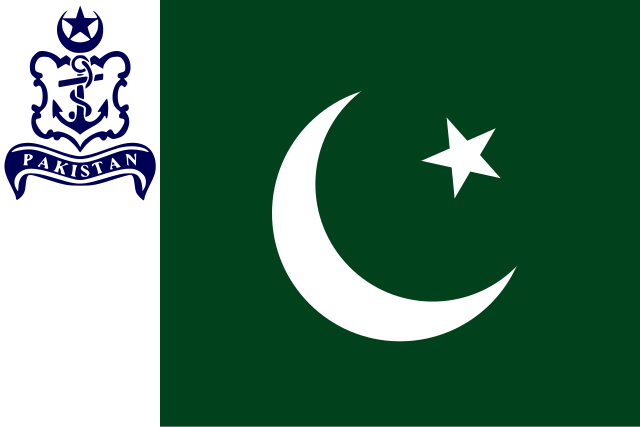
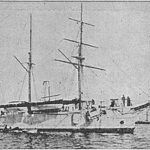
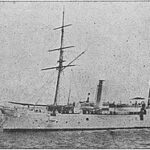
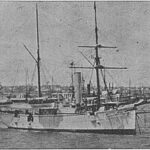
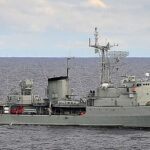
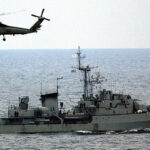
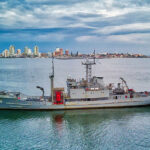
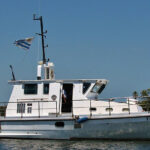
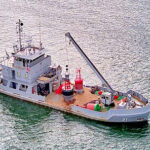

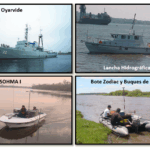
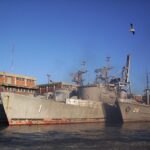
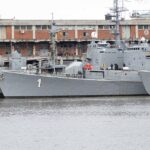

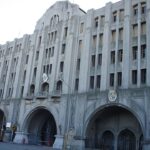
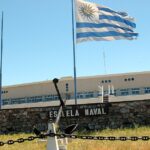


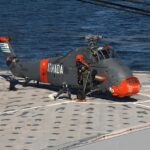
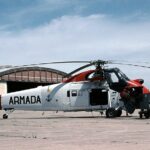
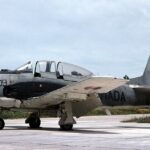
 Latest Facebook Entry -
Latest Facebook Entry -  X(Tweeter) Naval Encyclopedia's deck archive
X(Tweeter) Naval Encyclopedia's deck archive Instagram (@navalencyc)
Instagram (@navalencyc)





 French Navy
French Navy Royal Navy
Royal Navy Russian Navy
Russian Navy Armada Espanola
Armada Espanola Austrian Navy
Austrian Navy K.u.K. Kriegsmarine
K.u.K. Kriegsmarine Dansk Marine
Dansk Marine Nautiko Hellenon
Nautiko Hellenon Koninklije Marine 1870
Koninklije Marine 1870 Marinha do Brasil
Marinha do Brasil Osmanlı Donanması
Osmanlı Donanması Marina Do Peru
Marina Do Peru Marinha do Portugal
Marinha do Portugal Regia Marina 1870
Regia Marina 1870 Nihhon Kaigun 1870
Nihhon Kaigun 1870 Preußische Marine 1870
Preußische Marine 1870 Russkiy Flot 1870
Russkiy Flot 1870 Svenska marinen
Svenska marinen Søværnet
Søværnet Union Navy
Union Navy Confederate Navy
Confederate Navy Armada de Argentina
Armada de Argentina Imperial Chinese Navy
Imperial Chinese Navy Marinha do Portugal
Marinha do Portugal Mexico
Mexico Kaiserliche Marine
Kaiserliche Marine 1898 US Navy
1898 US Navy Sovietskiy Flot
Sovietskiy Flot Royal Canadian Navy
Royal Canadian Navy Royal Australian Navy
Royal Australian Navy RNZN Fleet
RNZN Fleet Chinese Navy 1937
Chinese Navy 1937 Kriegsmarine
Kriegsmarine Chilean Navy
Chilean Navy Danish Navy
Danish Navy Finnish Navy
Finnish Navy Hellenic Navy
Hellenic Navy Polish Navy
Polish Navy Romanian Navy
Romanian Navy Turkish Navy
Turkish Navy Royal Yugoslav Navy
Royal Yugoslav Navy Royal Thai Navy
Royal Thai Navy Minor Navies
Minor Navies Albania
Albania Austria
Austria Belgium
Belgium Columbia
Columbia Costa Rica
Costa Rica Cuba
Cuba Czechoslovakia
Czechoslovakia Dominican Republic
Dominican Republic Haiti
Haiti Hungary
Hungary Honduras
Honduras Estonia
Estonia Iceland
Iceland Eire
Eire Equador
Equador Iran
Iran Iraq
Iraq Latvia
Latvia Liberia
Liberia Lithuania
Lithuania Mandchukuo
Mandchukuo Morocco
Morocco Nicaragua
Nicaragua Persia
Persia San Salvador
San Salvador Sarawak
Sarawak Uruguay
Uruguay Venezuela
Venezuela Zanzibar
Zanzibar Warsaw Pact Navies
Warsaw Pact Navies Bulgaria
Bulgaria Hungary
Hungary

 Bundesmarine
Bundesmarine Dutch Navy
Dutch Navy Hellenic Navy
Hellenic Navy Marina Militare
Marina Militare Yugoslav Navy
Yugoslav Navy Chinese Navy
Chinese Navy Indian Navy
Indian Navy Indonesian Navy
Indonesian Navy JMSDF
JMSDF North Korean Navy
North Korean Navy Pakistani Navy
Pakistani Navy Philippines Navy
Philippines Navy ROKN
ROKN Rep. of Singapore Navy
Rep. of Singapore Navy Taiwanese Navy
Taiwanese Navy IDF Navy
IDF Navy Saudi Navy
Saudi Navy Royal New Zealand Navy
Royal New Zealand Navy Egyptian Navy
Egyptian Navy South African Navy
South African Navy






























 Ukrainian Navy
Ukrainian Navy dbodesign
dbodesign